Building inclusive, connected communities
How our cities are battling the housing crisis

Heritage site turned into First Nations fashion hub
www.councilmagazine.com.au Issue 3 Winter 2022
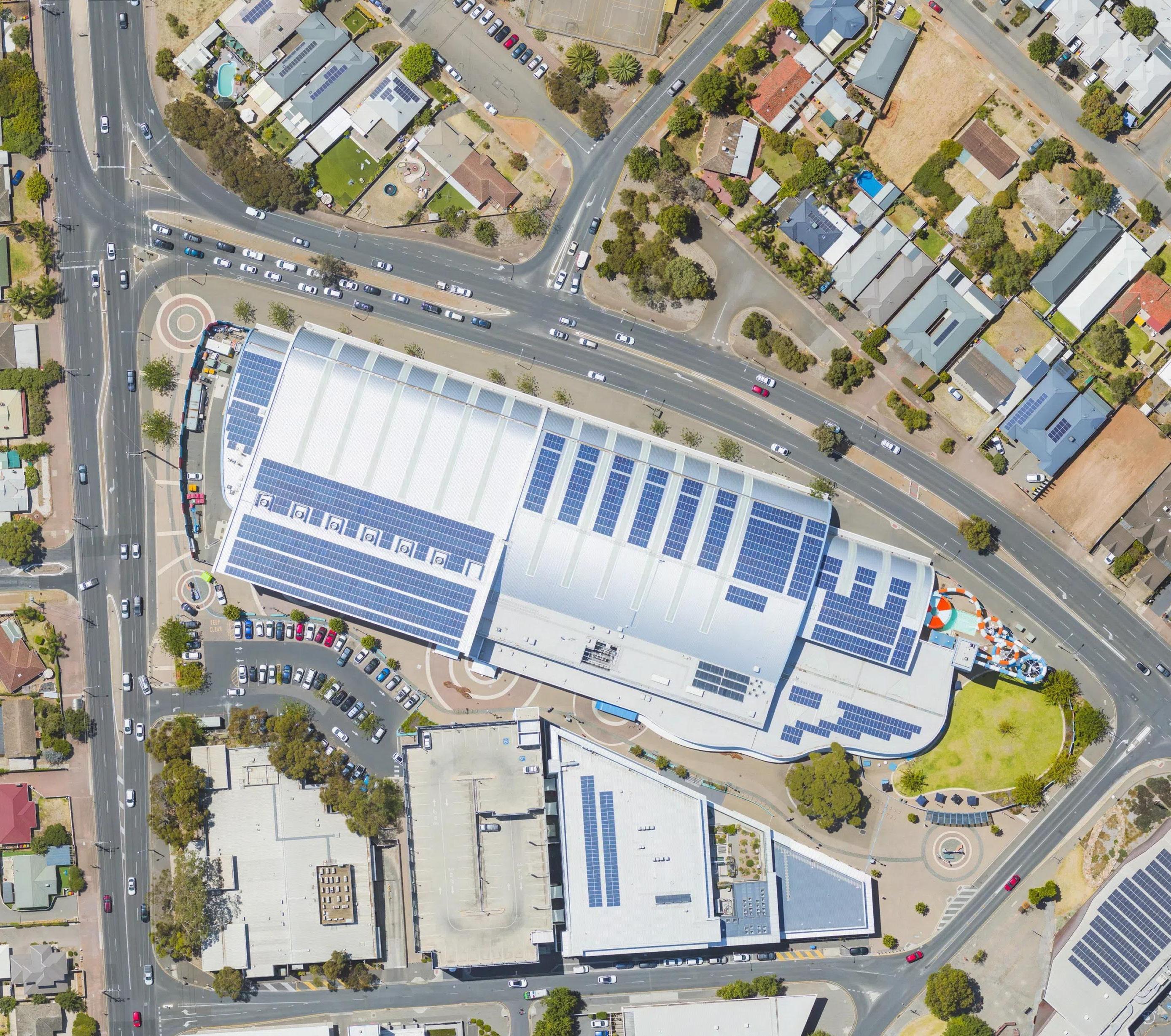
ASSIST URBAN PLANNING, ASSET MANAGEMENT, AND COMMUNITY ENGAGEMENT WITH HIGH RESOLUTION
ASSIST URBAN PLANNING, ASSET MANAGEMENT, AND COMMUNITY ENGAGEMENT WITH HIGH RESOLUTION
AERIAL IMAGERY
AERIAL IMAGERY
metromap.com.au
Scan to access free trial
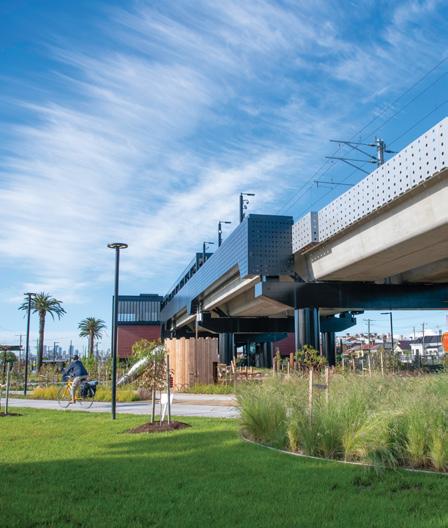
Cover image highlights Moreland Station in Melbourne’s inner north, which is one of the many new accessible stations made possible through Victoria’s Big Build and council collaboration, creating an elevated rail and a more inclusive and connected community.
Everyone deserves to find a sense of belonging in the region they call home. To create these safe and inclusive spaces local government can focus on various aspects of community life, from cultural engagement and appreciation, fostering connectedness and battling loneliness, to providing an environment that promotes sustainability and the natural surroundings.
P: (03) 9988 4950
F: (03) 8456 6720 monkeymedia.com.au info@monkeymedia.com.au councilmagazine.com.au news@councilmagazine.com.au
Editor April Shepherd
Journalists
Mikayla Bridge
Christopher Allan
Annabelle Powell
Lauren DeLorenzo
Stephanie Nestor
Holly Tancredi
National Media and Events Executives
Rima Munafo
Brett Thompson
Jacob Trad
Design Manager
Alejandro Molano
Designers
Luke Martin
Danielle Harris
Jacqueline Buckmaster
Marketing Manager
Radhika Sud
Marketing Associate
Andie James
Digital Marketing Assistants
James Holgate
Jackson Barnes
Publisher
Chris Bland
Managing Editor Laura Harvey ISSN: 2653-2670
In our Winter issue Council focuses on just this; how Australia's councils are creating inclusive, connected and sustainable communities – safe places for flora, fauna and people. Building and creating these spaces for many generations to come, and creating hope in a world with a somewhat depressing newscycle.
In this issue we cover some brilliant initiatives, such as the work Melbourne and Sydney City Councils are doing to combat homelessness as the costs of living rise, and both cities find themselves amongst the world's most expensive housing markets.
On the other side of the country in a remote region of the Northern Territory, Roper Gulf Council tells us about its work improving infrastructure for those who live in the region’s homeland communities.
We also spoke to the Yarra City Council, who, with the help of Kinaway, The Victorian Aboriginal Chamber of Commerce, and the fantastic team from KIN Fashion, have revamped a heritage listed building into a First Nations fashion studio.
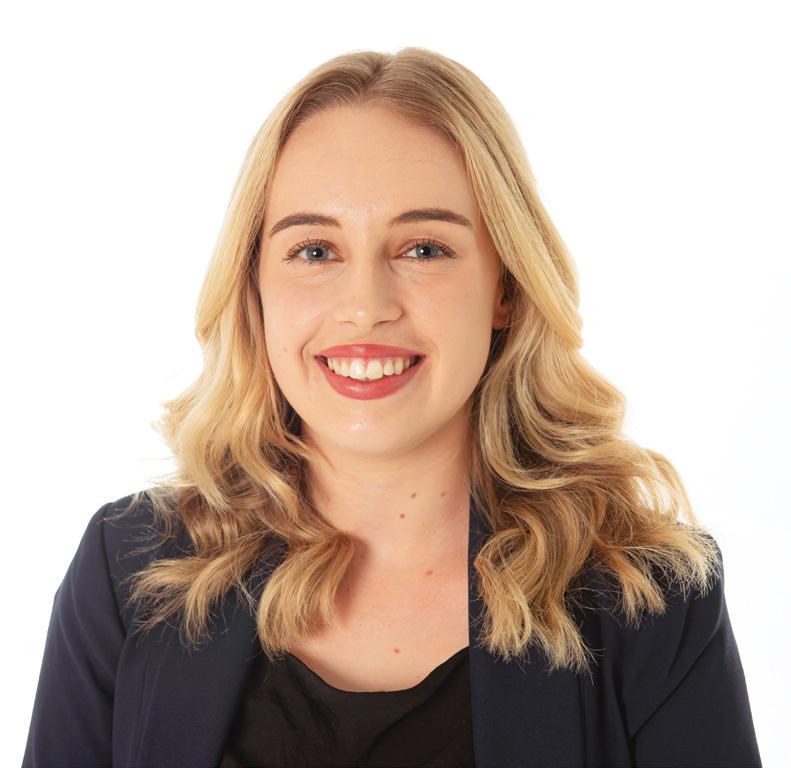
In this issue we’re lucky enough to feature some exceptional stories of councils improving mobility in their communities, such as Sunshine Coast Regional Council that is working towards making one of Australia's most wellknown holiday spots accessible for all.
As highlighted on the cover, we also feature an article covering Victoria's Big Build and their collaboration with Moreland City Council to remove level crossings in the area, and build more accessible public transport and surrounding regions.
I hope you enjoy this issue, and I look forward to seeing some of you in person at this month’s National General Assembly of Local Government in Canberra. It will be refreshing to be able to connect in person!
1 www.councilmagazine.com.au Winter 2022 // ISSUE 3 COUNCIL
Editor www.councilmagazine.com.au Issue Winter 2022 Building inclusive, connected communities Heritage site turned into First Nations fashion hub How our cities are battling the housing crisis
If you have a story idea, tip or feedback regarding Council, I’d love to hear it. Drop me a line at april.shepherd@monkeymedia.net.au, and don’t forget to follow us on social media – find us on Linkedin, Twitter or Facebook.
by
Media
April Shepherd
EDITOR’S WELCOME
Published
Monkey
Enterprises
ABN: 36 426 734 954 C/- The Commons, 36–38 Gipps St Collingwood VIC 3066
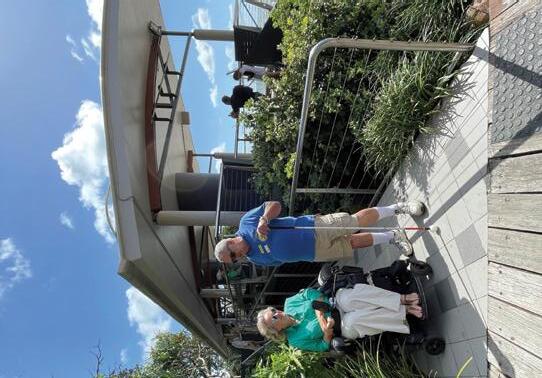


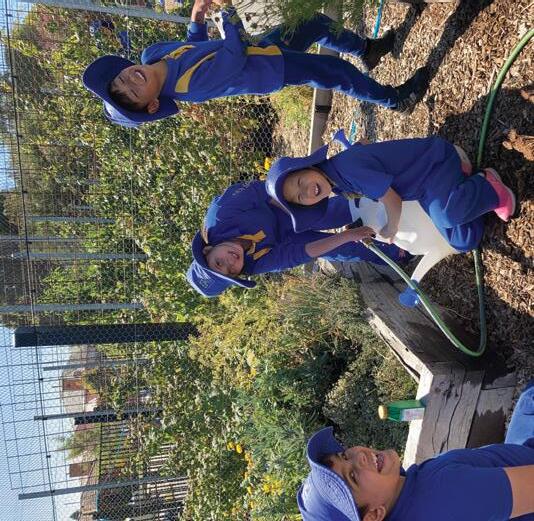
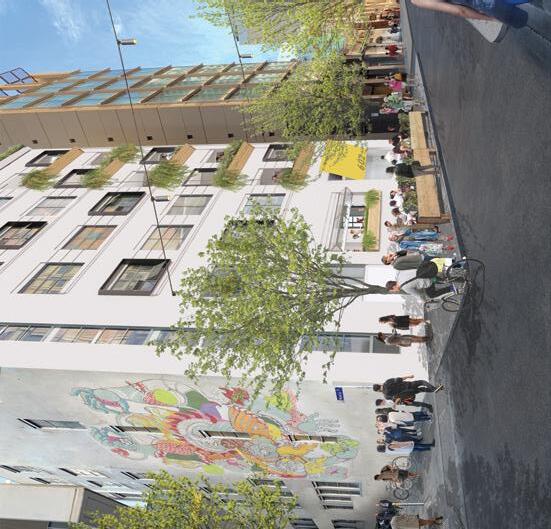

CULTURAL ENGAGEMENT
In Melbourne a historical church hall and caretaker’s residence in Collingwood has been transformed into a First Nations fashion hub, thanks to support from the Yarra City Council and Kinaway Aboriginal Chamber of Commerce, reinvigorating a heritage site to a creative hub championing Indigenous Australian fashion designers and artists.
FROM THE GARDEN TO KITCHEN: TEACHING YOUNG MINDS ABOUT DIVERSE CULTURES THROUGH FOOD
Most people can relate to the sense of community that food can inspire. It’s the simple act of gathering around a table together that inspired Stephanie Alexander AO to start The Stephanie Alexander Kitchen Garden Foundation over twenty years ago. Teaching young people to grow and prepare food is the foundation’s passion, collaborating with local governments and schools to deliver a range of health,
benefits.
HOW AUSTRALIA'S MOST EXPENSIVE CITIES ARE BATTLING HOMELESSNESS IN 2022
As the cost of living rises and Australia's housing prices remain some of the most expensive in the world, councils nationwide are facing a housing crisis, with more and more people of all ages and walks of life resorting to sleeping rough, as extra support available in the height of the pandemic dries up. Here Council investigates how two key CBD councils are working to curb homelessness.
Roper Gulf Regional Council is a remote local government located in the Northern Territory, overseeing a land mass nearly three times the size of Tasmania and home to eleven remote outstations (or homelands), three of which will be upgraded with new solar powered infrastructure and water tanks, thanks to support from Council and funding from the National Indigenous Australians Agency (NIAA).
2 Winter 2022 // ISSUE 3 www.councilmagazine.com.au CONTENTS
REVAMPED
COLLINGWOOD HERITAGE SITE
INTO INDIGENOUS FASHION HUB
16 REMEMBERING THE SUBURBS IN AUSTRALIA’S POST-COVID-19 RECOVERY 26 PRESERVING HERITAGE BUILDINGS TO KEEP COMMUNITIES STRONG 28 38 FLEXIBLE PIPELINES FOR DIFFICULT ENVIRONMENTAL CONDITIONS 44 THE LASTING SUPPORT LOCAL SUPPLIERS PROVIDE TO COUNCILS 40 BUILDING STRONGER COMMUNITIES BY REINVENTING COMMUNITY FACILITIES
IMPROVING THE QUALITY OF LIFE FOR REMOTE HOMELAND COMMUNITIES
36
34 PLANNING FOR SOCIAL CONNECTION IN AUSTRALIA'S METROPOLITAN FRINGES 42 COMBAT FLOODING WITH SPECIALISED INFRASTRUCTURE
LORD MAYORS: WHY DO SOME COUNCILS GET ROYAL RECOGNITION?
20
22 SMART ACCESS SOLUTIONS: IMPROVING QUALITY OF LIFE FOR COMMUNITY MEMBERS 24 PLANNING AND CONSTRUCTION
education and community
30
48 SUNSHINE COAST COUNCIL MAKING THE REGION ACCESSIBLE FOR ALL Sunshine Coast Council has completed a revolutionary pilot project focused on making life easier for people of all abilities and boosting mobility and inclusivity in the region. From mums and dads with toddlers in tow, to the elderly and people using mobility aids, this project aims to help the coast’s most popular areas become more accessible.
Energy efficiency is a key concern for councils and their communities, but it goes beyond using less energy. It’s also about optimising how energy is consumed in public spaces to prevent energy waste, and in turn reducing carbon emissions. Here Council has collated a group of councils from around the country and explored what they’re doing to create more energy efficient communities. 60

3 www.councilmagazine.com.au Winter 2022 // ISSUE 3 CONTENTS
PROTECTION
ENERGY EFFICIENCY
AUSTRALIA NEEDS HIGHER ENERGY EFFICIENCY STANDARDS FOR HOUSING
COUNCILS
TO BOOST ENERGY EFFICIENCY
ENVIRONMENTAL
MOBILITY
WHY
62 THE AUSTRALIAN
WORKING
THE FUTURE OF BOOSTER SET TECHNOLOGY 66
INNOVATIVE SOLUTIONS TO PREVENT WASTEWATER SPILLS AND REDUCE POLLUTION
58
TO PREVENT ILLEGAL DUMPING
54 CAUGHT IN THE ACT: USING SMART SECURITY
VICTORIA’S BIG BUILD WORKING WITH LOCAL COUNCILS TO CREATE ACCESSIBLE COMMUNITIES 56 LOCAL COUNCIL WORKS WITH ECOTEQ TO ACHIEVE CARBON NEUTRAL GOALS 52 PRESERVING A HIDDEN SUBURBAN OASIS OF FLORA AND FAUNA Baw Baw Shire Council, located in rural Victoria, is in the midst of purchasing a piece of land which houses many rare species and local wildlife, with the vision of creating an oasis for locals, and critters alike. 50 BASS COAST’S WILDLIFE CORRIDORS PRESERVING THE ENVIRONMENT AND ECONOMY REGULARS NEWS COUNCIL IN FOCUS 68 CITY OF GOLD COAST QUEENSLAND This edition, we spoke to the City of Gold Coast to learn more about what makes this iconic LGA. 01 EDITOR’S WELCOME 04 A WORD FROM THE AUSTRALIAN LOCAL GOVERNMENT ASSOCIATION 72 ADVERTISERS’ INDEX 72 EDITORIAL SCHEDULE 06 COMMONWEALTH GAMES 2026 TO BRING HUGE BOOM FOR VIC REGIONAL COUNCILS 07 NORTHERN RIVERS RECONSTRUCTION CORPORATION CREATED TO ASSIST FLOOD REBUILDING 08 SA COUNCILS’ CLIMATE ACTION PLAN AWARDED FEDERAL GRANT 08 TAS COUNCIL TO INSTALL NEW EV CHARGERS 09 TOWNSVILLE COUNCIL’S $5.3 MILLION PIPELINE TO IMPROVE WATER SECURITY 10 SMART CITIES 2022: THE KEYS TO CONNECTED, CIRCULAR, FUTURE COMMUNITIES 14 IT’S TIME TO CONNECT LIVE AT AUSJET22
46
A WORD FROM THE AUSTRALIAN LOCAL GOVERNMENT ASSOCIATION

WALGA WELCOMES NEW FEDERAL GOVERNMENT
by Linda Scott, President of the Australian Local Government Association
orking with councils around the country, ALGA has secured billions of dollars in funding for Australian communities from our new Federal Government.
This includes a $750 million expansion of the Local Roads and Community Infrastructure Program, as well as a commitment to “fair increases” to the Financial Assistance Grants that many councils and communities rely on.
We successfully advocated for a new $200 million per year disaster mitigation funding program that will help us protect our communities from increasingly frequent cyclones, fires and floods, as well as $400 million to improve regional mobile phone coverage.
Our collective advocacy also resulted in ALGA being appointed as a full voting member of National Cabinet for the first time, following the Morrison Government’s decision to abolish the Council of Australian Governments (COAG).
We couldn’t have done this alone, and I want to thank all of the councils that advocated for more support by passing motions in their council meetings, writing to local candidates and MPs, and speaking to their local media.
I’m excited about the future of local government, and look forward to working with Prime Minister Anthony Albanese and his government, but our work isn’t done yet.
Our number one priority is restoring Financial Assistance Grants to at least one per cent of Commonwealth taxation revenue.
These untied federal grants support every council and community, and have slid over time to just 0.55 per cent of tax collected by the Federal Government.
Following fires, floods and COVID-19, we need these federal grants increased more than ever, to ensure that every council remains sustainable, and every community is a liveable one.
Increasing these grants to one per cent would provide councils with an additional $2.3 billion next year, supporting every Australian community.
Our new government has committed to continue applying indexation to these grants – at a minimum – but we look forward to seeing the government's commitment to fair funding deliver further increases over time.
Last month’s Federal Election was in many ways a referendum on climate change, and it’s clear there’s an expectation from our communities that governments act decisively on their behalf.
Councils are already active in reducing emissions at a local level, but we could do so much more with sustainable funding support.
Housing affordability is another ongoing concern for our communities, and we look forward to working with our new government to deliver more affordable housing across our country.
This month’s National General Assembly of Local Government in Canberra will be our first opportunity to gather post-election, and discuss how we will partner with our new government to ensure no community is left behind.
I know many of you will be attending this year’s event, and I look forward to seeing you there, and hearing what you think ALGA’s priorities should be over the next 12 months.

COUNCIL
4
Cr Linda Scott is President of the Australian Local Government Association, the national voice of local government, representing 537 councils across the country.
Teretek® Stabilises Concrete Roadway at the City of Canada Bay
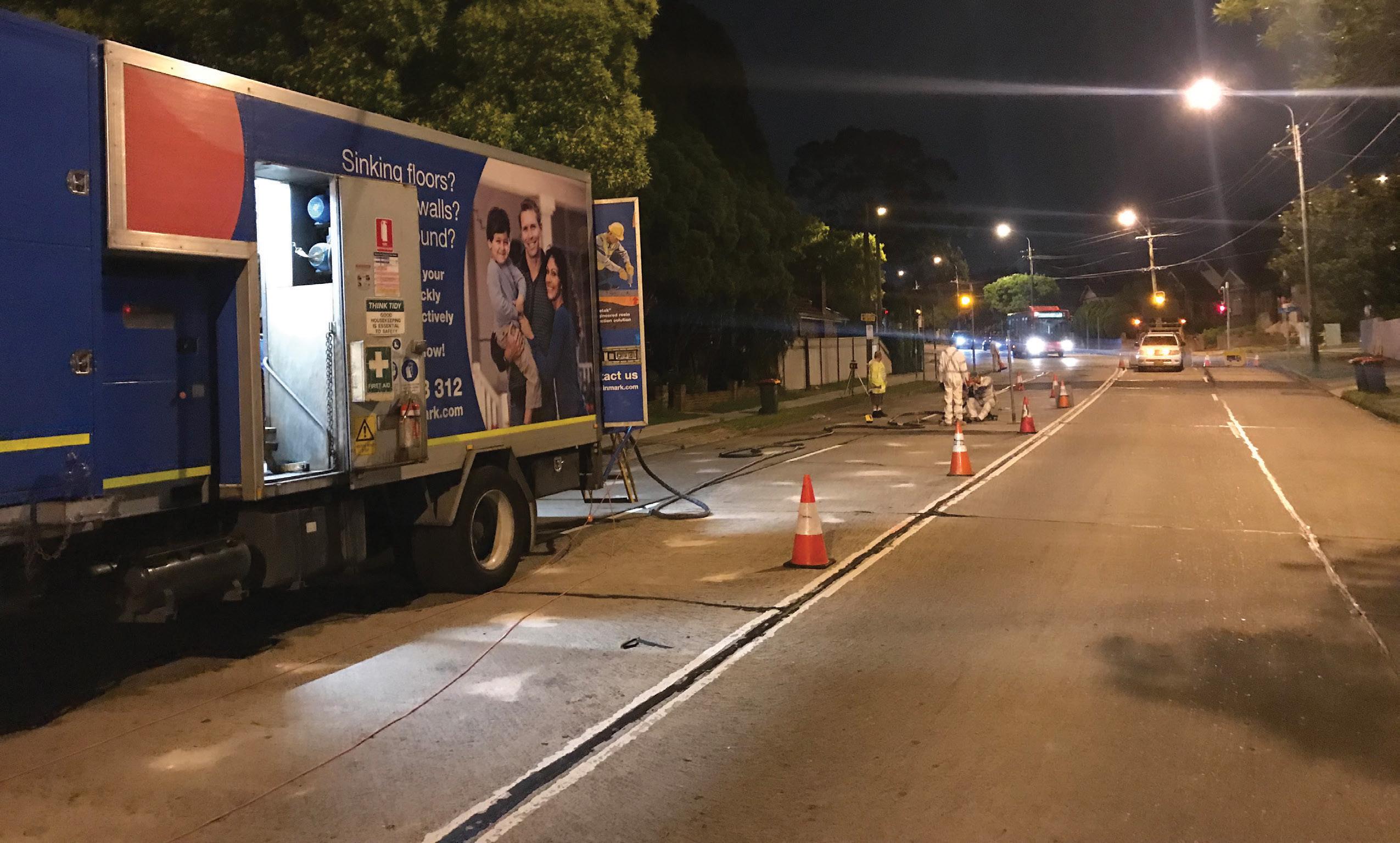
pavements (concrete slab roadways). While concrete slabs make excellent long-lasting heavy-duty pavements, they can become susceptible to deterioration due to water ingress.
After many years of service, the concrete slabs were suffering from various levels of deterioration; some were breaking up and needed to be removed and replaced, others required the voids that had formed underneath them to be filled to re-support the roadway and the slab joints sealed to reduce water ingress and water ponding. Several slabs had also sunk significantly and required raising and re-levelling to remove stepping between the slabs.
The deterioration was hazardous for traffic, cyclists and pedestrians, so the Council issued an open tender to find a cost-effective and time-efficient solution to repair and extend the life of the roadways. As the affected area included a main arterial roadway and busy bus route, the solution could not cause significant disruption to local traffic or excessive noise that would disturb residents.
Objectives
The City of Canada Bay required their main contractor to take responsibility for all aspects of the works including service location, notifying residents of impending work, traffic management, and supply and delivery of a ground remediation solution to raise and re-level the sunken roadway slabs. The project also needed to be completed after hours, between 8pm and 5am to minimise disruption to local businesses and traffic, including bus routes; it was important that buses could continue to travel uninterrupted without diversions.
Solution
Mainmark’s proprietary Teretek resin injection solution was identified as an ideal option to help improve the lifespan of the pavement slabs. Teretek has been used to successfully remediate roadways in Australia for more than 20 years. As an alternative to using traditional mud-jacking with cement grout, Teretek has a much longer life expectancy as it does not become brittle or break up under dynamic loading.
areas along the roadway were deflecting under load, pumping fines and showing differential settlement. By remediating using Teretek, rather than replacing the slabs, the Council was able to make significant cost savings. Teretek is a ground strengthening solution that uses expanding structural resins to fill voids and stabilise, raise and re-level roadways. On injection, the resin components mix together and expand by chemical reaction, hardening immediately, leaving a smooth and trafficable surface above within 15 minutes. This allowed the roadway to remain open while the work was being undertaken without the need to divert traffic or bus routes. The tight project timeframe was a challenge, especially given the heavy traffic including the intersection of Burwood Road and Parramatta Road which could not be closed off.
Mainmark was also responsible for service location works. Due to the complex network of underground services including telephone lines, fibre optic cables, live electrical lines, gas lines, and sewer and stormwater pipes, 3 full shifts were required to complete the service location portion of the project. This involved lifting each manhole along the route to obtain a trace on wires and pipes in order to scan and accurately locate services to avoid the risk of breaking existing underground infrastructure when drilling.
Mohamed Aliyar, Co-ordinator Infrastructure Planning, City of Canada Bay said “Mainmark’s solution provided great value for money and given our experience with working with the company we were very confident in their ability to deliver this project. We would recommend Mainmark for similar jobs.”
Mainmark Ground Engineering Pty Ltd | ABN 55 160 982 366 Building Contractor Licences: ACT: 20191004 | NSW: 288848C QLD: QBCC Act Licence No: 1316403 | SA: BLD 269074 TAS: 104771555 | VIC: CCB-L 57503 & CDB-L 49144 For an obligation free, expert opinion contact us 1800 623 312 | www.mainmark.com Leaders in Advanced Ground Engineering and Asset Preservation Technologies.
COMMONWEALTH GAMES 2026 TO BRING HUGE BOOM FOR VIC REGIONAL COUNCILS
Victoria’s regional councils are set to gain an economic boost, with Victoria confirmed as the host of the 2026 Commonwealth Games and the state’s regional councils set to host most major events.
The announcement by the Commonwealth Games Federation (CGF) comes after a period of exclusive negotiations, with Commonwealth Games Australia (CGA) and the Victorian Government submitting a delivery concept for consideration in March 2022.
It is estimated the 2026 Commonwealth Games will contribute more than $3 billion to Victoria’s economy, creating more than 600 full-time equivalent jobs before the Games, 3,900 jobs during the Games and a further 3,000 jobs beyond the Closing Ceremony.
While the Opening Ceremony will be held at the Melbourne Cricket Ground (MCG), the Games will be held across multiple regions, creating a new multi-city model.
Four regional hubs will be established in Geelong, Bendigo, Ballarat and Gippsland, each with their own athletes’ village and sport program.
The regional hubs will host athletes, officials and fans; using Melbourne as the gateway to regional Victoria.
Victorian Premier, Daniel Andrews, said it’s a great honour to have Victoria chosen as the host venue for the 2026 Commonwealth Games.
“We can’t wait to welcome the world to all of our state,” Mr Andrews said.
“The Commonwealth Games in regional Victoria is great for jobs, hospitality and our economy.”
President of CGF, Dame Louise Martin, said the CGF is absolutely delighted to award the 2026 Commonwealth Games to Victoria.
“CGA and the Victorian Government have set out a bold and innovative vision that provides an exciting new blueprint for hosting our major multi-sport event,” Dame Martin said.
President of CGA, Ben Houston, said, “CGA is thrilled to welcome the athletes of the Commonwealth back to Australia and we look forward to working with both the CGF and the Victorian Government to bring the Games to life across Victoria in 2026.”
Victoria 2026 will also invest significantly in community infrastructure, including housing and world-class sports facilities.
This will leave a legacy of affordable housing for the regions and modern sports infrastructure, to encourage Victorians to get active and attract future major events.
Victorian Minister for Tourism, Sport and Major Events, Martin Pakula, said hosting the Commonwealth Games in four years’ time will deliver major benefits, particularly for the regions, and leave a lasting legacy for the growth and development of sport throughout Victoria.
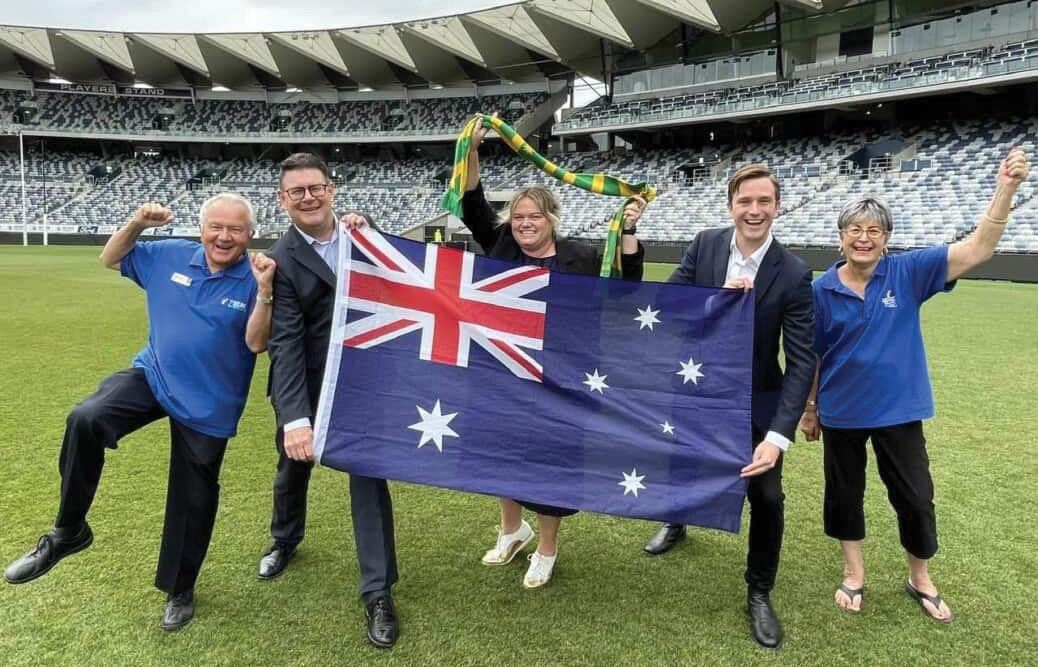
City of Greater Geelong Council celebrates Victoria 2026. Image: City of Greater Geelong.
REGIONAL COUNCILS CELEBRATE ANNOUNCEMENT
City of Greater Geelong and City of Ballarat Council have both welcomed the Victoria 2026 announcement.
City of Greater Geelong Deputy Mayor, Trent Sullivan, said that Geelong will host seven sporting events including the aquatics (swimming, para swimming and diving), beach volleyball, gymnastics, hockey, triathlon and para triathlon, T20 cricket matches, table tennis and para table tennis.
“The Games attract more than 5,000 athletes from more than 70 nations, so the economic benefits for our tourism, events and hospitality industries will be enormous,” Deputy Mayor Sullivan said.
“This is not just about sport: thousands of athletes and spectators will experience the growing buzz about Geelong, including our fabulous food, culture, and beaches.
“After the Games the athlete’s hub could be turned into affordable housing and leave lasting benefits for our region.
“We want to use the Commonwealth Games as an opportunity to deliver a legacy for our region for decades to come.”
Ballarat will host the majority of sporting events for the Commonwealth Games, with Ballarat named as the host city for athletics, para athletics, boxing and cricket T20.
City of Ballarat Mayor, Councillor Daniel Moloney, said a regionally focused Commonwealth Games would deliver endless opportunities and economic benefits for Ballarat.
“Ballarat has a long standing history and a strong track record of being able to host national and international level events,” Mayor Moloney said.
“Dating back to rowing at Lake Wendouree for the 1956 Olympics all the way through to present day hosting the National Road Cycling Championships, AFL, A-League soccer and international and national level basketball – we are confident our city can deliver a world class event.”
Shepparton will also host sporting and cultural events as part of Victoria 2026.
There will also be a strong para sport program, with six sports already locked in.
Victorian Minister for Regional Development, Mary-Anne Thomas said, “We’ve always known the value of regional Victoria and the 2026 Commonwealth Games will provide a chance to showcase all we have to offer to the world.”
Victoria 2026 will also feature a program of cultural and business engagement experiences that bring to life the Commonwealth Games values of humanity, equality and destiny – embracing the state’s diversity and rich cultural history.
A Victoria-wide program of live sites and activations will ensure visitors are welcomed in every corner of the state, with the Queen’s Baton Relay to traverse the regions in the weeks leading up to the Opening Ceremony.
Winter 2022 // ISSUE 3 www.councilmagazine.com.au
6 NEWS
NORTHERN RIVERS RECONSTRUCTION CORPORATION CREATED TO ASSIST FLOOD REBUILDING
The New South Wales Government has established a coordinating body to lead the long-term reconstruction of flood impacted areas across the Northern Rivers region, coming into effect from 1 July 2022.
The Northern Rivers Reconstruction Corporation (NRRC) will coordinate planning, rebuilding and construction work of essential services, infrastructure and housing across multiple government agencies to help people and communities rebuild their lives.
The NRRC will work within local government areas of Ballina, Byron Bay, Kyogle, Tweed, Richmond Valley, Clarence Valley, and Lismore, to rebuild homes as quickly as possible.
The new body will be supported by an advisory board consisting of local representatives, such as mayors, and other leaders in the community for local expertise and knowledge.
The NRRC will have a long-term remit of three to five years for reconstruction of flood-hit communities, which will continue beyond the immediate response and recovery phase.
New South Wales Deputy Premier, Paul Toole, said the floods have left a devastating impact.
“As we transition from recovery and clean-up the focus will shift to how we can make the infrastructure and homes of the region more resilient in the event of future natural disasters,” Mr Toole said.
The NRRC will lead reconstruction projects including:
∞ Prioritising and sequencing projects
∞ Coordinating procurement and financial planning
∞ Industry capacity and engagement
∞ Planning and land acquisition
∞ Local government liaison
∞ Betterment identification
More specifically the NRRC will:
∞ Identify, assess, develop and make recommendations on projects and programs that can help rebuild Lismore and other flood impacted Northern Rivers communities quickly and for the long-term
∞ Work with councils to identify, prioritise and support projects that can rejuvenate communities within the Northern Rivers area, with a particular emphasis on housing and supporting social infrastructure
∞ Work with the Department of Planning and Environment to fast-track planning and environmental approvals to make it easier for people living in the Northern Rivers to rebuild homes and get back to normal life quickly
∞ Work with businesses to attract and retain investment in the region, with a particular focus on job creation and longterm economic growth
∞ Fund the delivery of enabling infrastructure to develop long-term, resilient and economically sustainable communities, including new or upgraded roads, water, power, digital connectivity and social infrastructure
∞ Act on and implement recommendations from the Independent Flood Inquiry and the Parliamentary Inquiry into the Northern Rivers Floods as directed by government
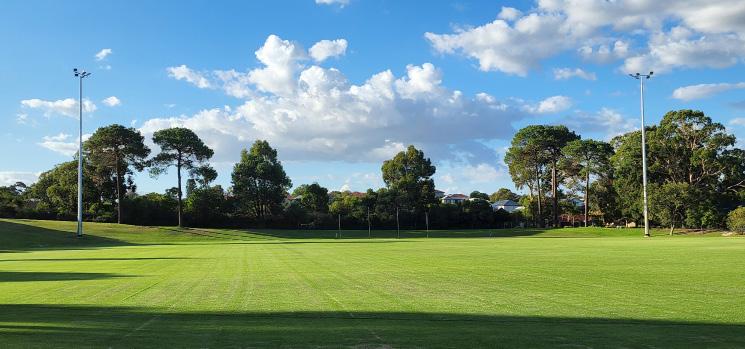


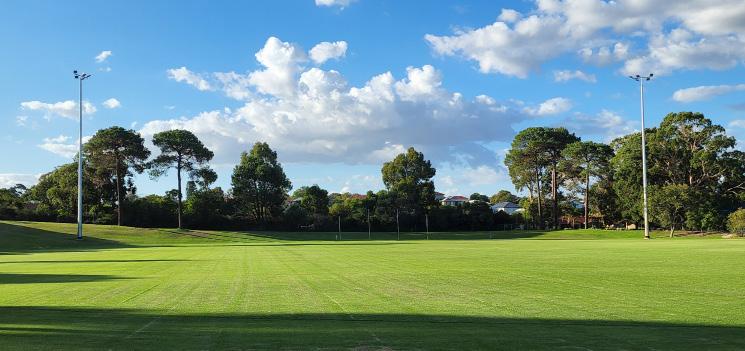
www.councilmagazine.com.au Winter 2022 // ISSUE 3
7 NEWS
WE SET STANDARDS, NOT BOUNDARIES Contact us today to discuss your project Telephone: (08) 9417 4999 Email: sales@futureau.com.au Website: www.futureau.com.au Office Locations: Western Australia | South Australia | New South Wales | Queensland WE NOW OFFER A FULL RANGE OF LIGHTING POLES AND ACCESSORIES INCLUDING CROSSARMS AND SPIGOTS TO SUIT YOUR SPECIFIC REQUIREMENTS. Floodlight Poles Street Light Poles Telecommunication Poles Power Poles Special Purpose Poles Full range of Standard and Custom Accessories
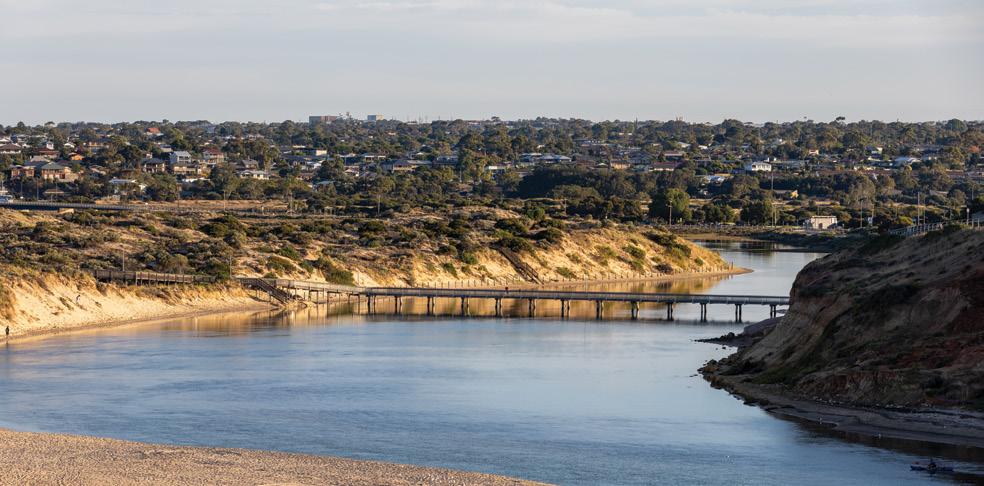
Resilient South member councils in South Australia have welcomed a $99,000 grant from the Federal Government to develop a Regional Climate Action Plan.
Resilient South is a partnership involving the neighbouring Cities of Marion, Holdfast Bay, Onkaparinga and Mitcham, and the South Australian Government.
It was set up eleven years ago, aiming to get on the front foot in addressing the localised impacts of climate change.
The Regional Climate Action Plan will be the second five-year strategic document prepared by Resilient South.
The Plan is funded through the Federal Government’s Preparing Australia Program.
Resilient South Regional Coordinator, Stefan Caddy-Retalic, said the $99,000 grant would allow the partners to continue their current climate action
initiatives, while allowing them to review and plan adaptation priorities and direction for the next five years.
“The Preparing Australian Communities Program was set up by the Commonwealth to provide support to locally identified and locally-led projects that will improve the resilience of communities against natural hazards,” Dr Caddy-Retalic said.
“We know climate change is only going to exacerbate the occurrence and intensity of natural hazards of bushfire, flood and storms. Resilient South has spent the past decade working collaboratively to mitigate the impact of climate change on our communities and adapt to a changing climate.
“One of our flagship programs is the Resilient Asset Management Project, which is leading the way in integrating climate change risk into the management of council assets.
The City of Launceston is undertaking a $26,000 project to install four new electric vehicle charging stations across the municipality.
The project has been part-funded with a $10,000 grant from the State Government’s ChargeSmart Grants Program.
A 7kw charger will be installed at the Cataract Gorge, while three 22kw chargers will be installed at Riverbend Park, the Inveresk half-circle car park and at the Lilydale Memorial Hall.
The new chargers add to the City of Launceston’s existing electric vehicle charging stations at the Paterson Street West and York Street car parks, and the 50kw fast-charger which was installed in the Paterson Street East Car Park in 2018.
According to statistics from the Federal Chamber of Automotive Industries, electric vehicle sales in Australia in 2021 increased 191 per cent over 2020 figures, while plug-in hybrid (PHEV) sales jumped 99 per cent.
The FCAI’s end-of-year sales figures showed Australians bought 5149 electric
cars in 2021 – up from 1769 in 2020 –and 3372 PHEVS – up from 1691.
City of Launceston Mayor, Albert van Zetten, said while overall electric vehicle sales accounted for a small percentage of vehicle sales in Australia, it was a growing segment of the market.

“Electric vehicles have many benefits, including helping to lower CO² emissions,” Mayor van Zetten said.
“Most industry experts expect this segment of the vehicle market to continue to grow in the future and see prices for new EVs dropping, as technology and manufacturing processes improve.
“We’re pleased to have received a ChargeSmart Grant to enable us to install more EV chargers around
“The partner councils are responsible for over $5 billion in assets, and we need to make sure we are using the best available tools to ensure they are available for the community.
TAS COUNCIL TO INSTALL NEW EV CHARGERS SA COUNCILS’ CLIMATE ACTION PLAN AWARDED FEDERAL GRANT
“Other projects include our urban heat mapping program, upgrading street lighting with energy-efficient LED lighting and our Cool Places program to create greener areas with water sensitive urban design.
“The Preparing Australian Communities Program grant will assist with our efforts to continue these important and locally-led projects that will ensure the Cities of Marion, Holdfast Bay, Onkaparinga and Mitcham remain great places to live.”
Round one of the Preparing Australian Communities Program has funded 158 projects across the nation, including 20 in South Australia valued at $30 million.
Launceston, particularly at those visitor destinations like Riverbend Park and the Cataract Gorge, which draw high visitor numbers on a daily basis.
“We hope the growing number of EV charges across the city will make EVs a more attractive option for those in the market for a new vehicle.”
Tasmanian Minister for Environment and Climate Change, Roger Jaensch, said the Tasmanian Government was supporting electric vehicle charging infrastructure across the state, as part of its commitment to a lowemissions economy.
“Tasmania is ideally suited to benefit from the growing electric vehicle market, powered by our renewable energy, and the Tasmanian Government’s second ChargeSmart grants program is providing $773,000 for fast destination charging throughout our regions,” Mr Jaensch said.
“I am pleased that funding has been provided to the City of Launceston for four electric vehicle chargers that will support Tasmanians and visitors alike to explore our beautiful city and surrounds.”
Winter 2022 // ISSUE 3 www.councilmagazine.com.au
8 NEWS
TOWNSVILLE COUNCIL’S $5.3 MILLION PIPELINE TO IMPROVE WATER SECURITY
Townsville Council has commissioned a new $5.3 million water pipeline to provide improved suburban water security, by connecting the Douglas Water Treatment Plant to Condon under the Ross River.
Local business CivilPlus completed the works to design and install the pipeline, which included drilling under the Ross River to install approximately 360m of 900mm diameter pipe.
Townsville Mayor, Jenny Hill, said the Council was committed to ensuring all of Townsville continued to have a safe, reliable, secure and healthy water supply now and into the future.
“Council has prioritised our investment in critical infrastructure and services,
continuing our strong focus on the city’s water security,” Mayor Hill said.
“This $5.3 million investment will secure Rasmussen and Condon’s water supply for decades to come and support future development of the city.”
Townsville Water and Waste Committee chairperson, Russ Cook, said the replacement of the water pipeline would enhance the Council’s ability to service the growing suburbs in the area.
“This pipeline was initially damaged beyond repair by the monsoon in 2019, however Council staff were able to isolate it and continue servicing Rasmussen and Condon thanks to our extensive water network,” Cr Cook said.
“This meant we were able to prioritise funding and resources for repair works
at the time. With the ongoing growth of the city and these suburbs, Council allocated funding in this year’s budget to replace the pipeline, ensuring our capability to provide services to the community matches the demand.”
Cr Cook said it was great to see locals benefiting from big contracts throughout the city.
“The works, completed by CivilPlus Constructions, supported about 12 jobs throughout the project’s duration,” Cr Cook said.
“By using local businesses as much as possible we are able to provide an economic boost to the community and help grow the capacity of businesses, while enhancing our water security.”

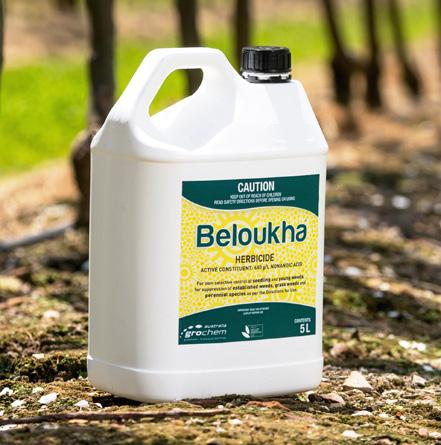








www.councilmagazine.com.au Winter 2022 // ISSUE 3
9 NEWS
Features Benefits 680g/L Nonanoic Acid Highest load Nonanoic Acid on the market Lower use rates per treated hectare More treated hectares per drum Transport and storage efficiencies Rate: 6 – 8L of product/100L of water Rate range to give more flexibility Applied in 200 to 600L of water/Hectare More treated hectares per spray vat Less time wasted filling spray tank with water Lower rates of product per hectare Fast acting with visible effects on green plant tissue Most weeds show effects within hours of applications Derived from natural occurring substances sourced from Sunflowers Derived from plants to kill weeds Biodegradable Breaks down into carbon dioxide and water Many use patterns Orchards and Vineyards, Grapevines - Unwanted suckers, Fallow soil Paths, Driveways, Around sheds, Gardens, Amenity horticulture areas, Protected cropping situations, Around Nursery stock General uses - including around buildings, commercial and industrial areas, domestic and public services areas, rights-of-way Spot spraying in Lawns and Turf Available in 1L, 5L, 20L, 200L & 1000L packs A pack size for every situation THE ORGANIC CHOICE FOR FAST WEED CONTROL ® Beloukha is a non-selective, bio-degradable, broad-spectrum, foliar applied herbicide that acts exclusively on contact, attaching and destroying the cell membrane of the plant epidermis causing rapid tissue dehydration. HERBICIDE For more information please call: 1800 777 068 or email: info@grochem.com.au grochem.com
SMART CITIES 2022: THE KEYS TO CONNECTED, CIRCULAR, FUTURE COMMUNITIES
From May 10-12, Council hosted Smart Cities 2022, a fully virtual conference that brought together leaders in local government with those in the development of pioneering technologies to exchange information and tackle the critical challenges facing the Australian smart cities and communities sectors.
Over three days, and exploring three unique themes, attendees heard from some of the leading experts in smart cities, digital transformation and circular economies, learning innovative strategies that will help transform their organisations and create the cities and communities of the future.
FUTURE COMMUNITIES
On day one of the conference, we explored the idea of the community of the future, drilling down to what residents are expecting of their communities, and what actually makes a smart, desirable place to work, live and be in a post-pandemic world.
Simon Hunter from the NSW Cities and Active Transport Division discussed the Smart Places Action Plan, highlighting the milestones that have been achieved thus far, while noting there is still much to be done. Simon noted that the work of smart cities implementation is challenging, gritty work; but there has been an incredible amount of work over the past two years, with local governments really leading the charge in assisting with that learning.
Simon also issued a challenge to the smart cities community to explore the different initiatives that can be undertaken as smart initiatives; and he invited government departments to collaborate and come up with new and different ways of bringing smart technologies to their communities.
Next, Brook Dixon from Delos Delta shared his thoughts on the do’s and


don’ts of developing a smart cities program of work.
Brook advised people to have a plan, have a strategy, and have a plan of action that leads to a coordinated smart cities approach. He also said that people need to think about how their plans will change over time.
According to Brook, everyone needs champions within their organisation to embed smart city ideas and technologies and ensure they proliferate.
He also warned against the common mistake of employing a digital technique or practice just because we can – there always needs to be a strong reason behind any digital practice.
Another key piece of advice was that there needs to be clear governance in any organisation that clearly states who is responsible for smart initiatives – he warned that if there’s no one clearly
responsible for smart cities, nothing will happen.
Our panel session, featuring Greg Curcio, Zoe Eather and Michael Smit was wide-ranging, covering many topics. One of the overarching themes was the fact that smart cities are so much more than just tech for the sake of tech – something we have always known, but has become particularly important in the post-pandemic world.
Another important idea that was floated from Greg Curcio, our local government representative, was the idea that smart cities works need to be integrated into the capital works program of any local government, to ensure they are prioritised and actioned.
Our next speaker, Claire ChaikenBryan, gave us detailed smart city case study insights from the Lake Macquarie Smart Beaches project, which has been underway for a couple of years now.
Winter 2022 // ISSUE 3 www.councilmagazine.com.au
10 NEWS
Laura Harvey, Michael Smit, Zoe Eather and Greg Curcio speaking on the Future Communities panel.

This project is all about improving the experience of Lake Macquarie beaches across the board for residents, gathering data on surf conditions, parking, toilets and much more. The learnings from this project are being widely shared with other coastal councils, which is fantastic to see.
Our final speaker was Di Rutter from PwC, who shared insights from her firm’s Citizen Engagement Report for 2022. Important insights gathered from the report include the fact that citizens are less optimistic now than they were in June 2020; Australians value engagement more than ever before; and that engagement helps to build trust, with digital technologies an important enabler in achieving this.
Smart Cities Event Partner Axis Communications also spoke at the event, with Johnny Lee, Business Development Manager for Smart Cities, discussing the company’s role in the evolution of our cities. According to Johnny, Axis is focused on helping to develop urban areas of the future and create cities that people love to live in. With their global expertise, experience and partner network within public safety, urban mobility and environmental monitoring, Axis want to share and inspire authorities about solutions that shape cities today and in the future.
DIGITAL CONNECTIVITY
Conference two at Smart Cities explored digital connectivity, the backbone of modern life.
Our expert speakers explored the networks that connect us professionally, socially and technologically; and looked at the work we need to do to keep these secure, efficient and fit-for-future purposes. We also explored the digital divide, and considered how we can close the gap between the haves and have-nots.
Our keynote speaker was Ian Oppermann, NSW’s Chief Data Scientist. Ian highlighted the fact that connectivity is at the heart of any smart cities project; and he drilled down on the work the New South Wales Government has been undertaking in the digital connectivity realm.
The Government’s Data Reform Program began in 2020, and according to Ian, began to awaken the team’s understanding of the power of data and analytics, and has led to a constant focus on putting data at the heart of decision making.
Our next speaker was Catherine Caruana-McManus, the Director Strategy and Sales at Meshed, who explored how IoT and data sharing are transforming cities, precincts and places.
According to Catherine, nationally digital transformation budgets have increased by 63 per cent as a result of COVID-19.
Nowadays,
digital connectivity is all about real time data – of the over 70 local governments that Catherine and her team are working with, they are all moving towards this more dynamic form of data gathering.
Increasingly, data and connectivity are being recognised for their ability to strengthen decision making and assist in managing risk. We are starting to see data being gathered and ingested into portals such as the NSW Digital Twin, and we are realising that the options for using data to inform opportunities around
11 NEWS

economic development are almost endless – the only real limit is our imaginations.
Our next session was a panel discussion, titled “Ensuring digital equity across urban, regional and rural Australia”. During this session we heard about some particularly exciting initiatives being undertaken at City of Casey and City of Yarra focused on digital equity.
Laura Baker from City of Casey gave us a sneak peek into a new project being launched next month in Doveton, their least connected suburb, to enhance connectivity there, including smart bus shelters and a tech festival, with more information to be announced soon.
Our panellists all agreed that ensuring digital equity across our communities is a “wicked problem”, and one of the great challenges we currently face in society. It’s always been a challenge, but COVID-19 has only served to highlight the differences in accessibility and equity in our communities.
Our panellists noted that this challenge is not something councils can solve on their own – they can shine a light and advocate for residents, but all levels of government need to work together to solve this issue.
Our final presentation for the day was from Tanya Lipus who is leading the smart city transformation on the Gold Coast. Tanya shared many of the initiatives that have been undertaken on the Gold Coast, including the installation of Australia’s largest city-owned LoRaWAN network with 94 gateways and 5500 devices.
Digital Connectivity Session Partner
Madison Technologies also spoke at this session, with CEO Paul Calabro discussing how the company works with clients on smart city initiatives through data enablement.
“As an Australian business with a mission of enabling our customers to connect and protect people, assets and the environment, we are helping create the smart cities of the future today,” Paul said.
“We understand the networking communications challenges cities face to improve the quality of life through connectivity. We work with local and global partners to improve connectivity in metro and regional areas so that everyone can benefit from a digital infrastructure. We deliver solutions to move from reactive to
proactive and predictive outcomes for optimised asset use through data enablement achieving asset visibility, asset responsiveness, asset intelligence and data analytics while securing the solution infrastructure from sensor to cloud with embedded cyber security. Our mission promotes the smart cities of the future that are safe, reliable, connected and sustainable.”
CIRCULAR ECONOMIES
Our final conference focused on circular economy, and the opportunities circularity has to offer in the smart community and local government.
Our keynote speaker was Lisa McLean, CEO of NSW Circular, whose presentation focused on the overriding aim of the circular economy framework, which is decoupling economic growth from virgin resource use. Lisa also looked at the economic drivers for circularity – which are really about extracting more value from resources.
As a result of these economic drivers, Lisa said it’s important to note that there are opportunities that come with circularity – not just costs. Globally the circular economy market is valued at $4.5 trillion and nationally the value is nearly $2 trillion; and the circular economy is expected to generate hundreds of thousands of new jobs in the coming years.
In closing her presentation, Lisa encouraged all councils to set targets around circular economy, as this is what we need to see for action to unfold.
We then moved into our panel session, which focused on turning ideas into action in the circular economy space. Our panellists were Sean Trewick, CEO of Circular Economy Victoria; Les Stokes, Executive Manager Waste & Environment, City of Ballarat; and Serena Yang, Manager Policy and Evaluation, Green Industries SA.
The panel discussed the huge shift in awareness when it comes to circularity in the past three years, with panellists describing the growth as exponential. Our panellists also noted that they are seeing many different approaches to circularity at the local government level – and there’s no right or wrong way to go about it.
The important thing is to get started; with our panellists also encouraging organisations and councils to learn from those that are further advanced in their circular economy journeys and replicate the things they have done successfully.
www.councilmagazine.com.au 12 NEWS
Megan Turnley, Stephen Farrugia, Laura Baker and Zoe Eather during the Digital Connectivity conference.

The panel was followed by Django Seccombe, Circular Economy Manager at Sydney Water, who joined us to discuss the circular opportunities Sydney Water is progressing, as part of its development of the Western Parkland City in Sydney’s west.
It’s a unique region, with its population forecast to double to two million by 2056, and it faces significant heat stress and pressure on waterways.
Django discussed the six key areas Sydney Water is focusing on when it comes to the circularity of the region, which are:
1. Set targets and policies for a circular city
2. Value circular economy outcomes in business cases for infrastructure investment
3. Centralise information with a onestop-shop for resources
4. Create systems and incentives to connect circular supply chains
5. Integrate water cycle management for a green, cool and climate resilient city
6. Aggregate local organic waste collection for bioenergy production
Our next speaker was Ian Davies, the manager of the Hume Circular Business Network, who discussed the inroads he and his team have made in circularity in the City of Hume.
City of Hume has taken a communitycentred approach to circularity; with the Hume Circular Business Network seeing themselves as an enabler to capture ideas and community interests and ideas; and then acting as an advocate to secure funding.
The City also has a fully developed plan and timeline and is working towards becoming a circular economy. By 2025 Hume intends to be a waste management city; and by 2030 Hume wants to be a resource recovery city; with the goal that the City is a fully circular economy by 2045.
Our final speaker was Azaria Dobson, Director of Activation Precincts and Partnerships at the Regional Growth NSW Development Corporation. Azaria spoke about the Special Activation Precincts being developed in New South Wales, highlighting the sustainable and circular approach that has been adopted in developing these regions.
Azaria explained that there is a huge focus on data, and ensuring data-driven decision making is undertaken as part of the circular initiatives of the precincts is critically important.
The Corporation has also issued a challenge for circular innovation by calling for new ideas and initiatives in circularity through the NSW Smart City Innovation Challenge.
NEXT STEPS FOR BUILDING SMARTER AUSTRALIAN COMMUNITIES
After three fantastic days of speakers, presentations and insights, we’re excited to see how the smart cities and community journey continues to unfold at the local government level.
There are so many brilliant projects already being undertaken and planned in the smart council space; and our coverage of smart initiatives will continue in Council in print, online and in our e-newsletter.
If you missed any of the presentations from Smart Cities 2022, they’re available to view on demand at a time that suits you. Head to www.smart-cities.com.au to watch all of the presentations.
www.councilmagazine.com.au Winter 2022 // ISSUE 3 13 NEWS
Laura Harvey, Serena Yang, Les Stokes and Sean Trewick discuss circular economy initiatives.
IT’S TIME TO CONNECT LIVE AT AUSJET22
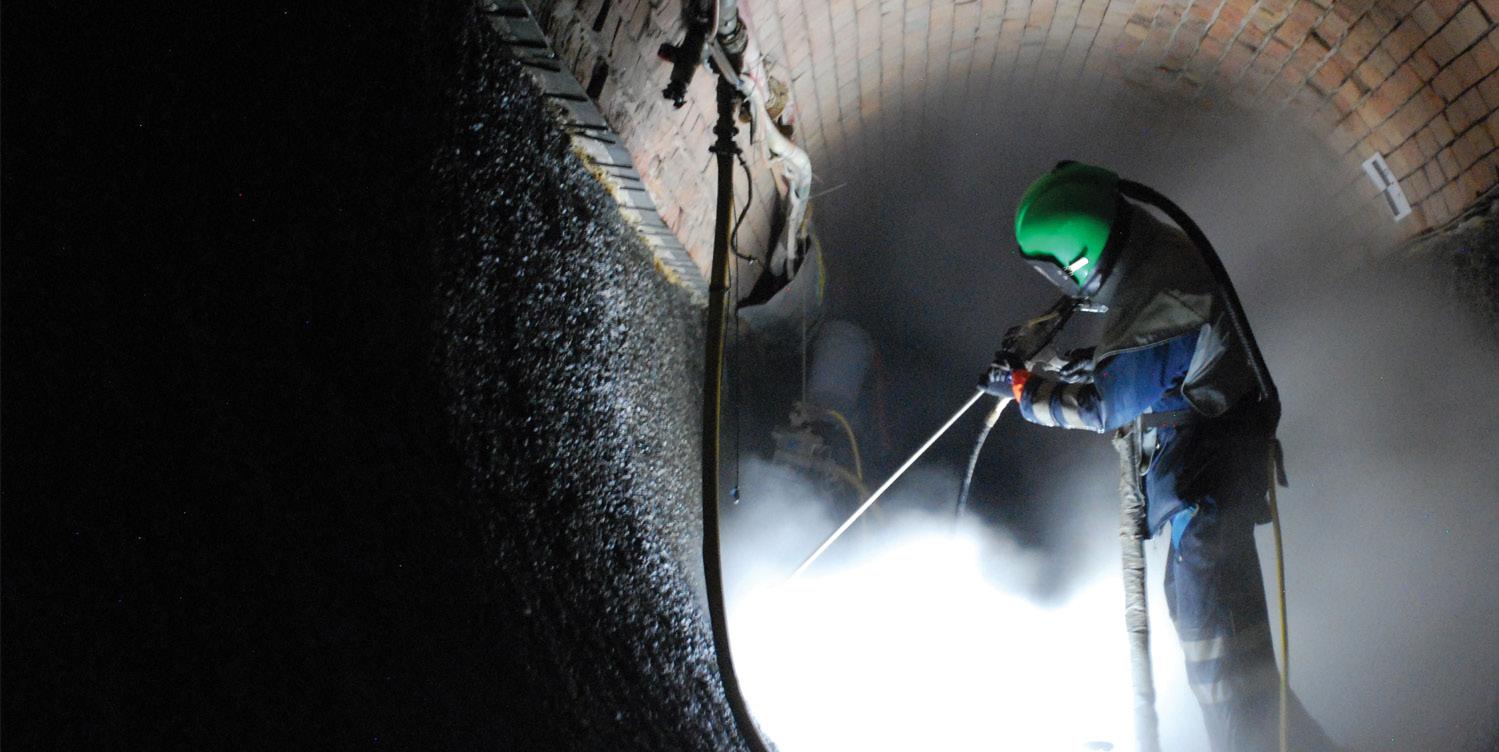
After two years of cancelled events thanks to COVID-19, in-person events are back, with a new dedicated biennial water jet, hydro excavation, drain cleaning and vacuum loading technology exhibition and conference being held this October.
The new AUSJET22 conference is presented by the industry’s peak body, the Australasian High Pressure Water Jetting Association (AUSJET), as well as the Australasian Drain Cleaning and Vacuum Association (ADCVA).
The inaugural AUSJET22 is taking place on October 12-13 2022 at the Melbourne Showgrounds.
AUSJET22 is set to be the most significant in-person event of 2022, and will be a single source of knowledge, innovation and solutions for the industry – with all key suppliers set to attend.
Come and build real connections at an indoor and outdoor event, where dedicated water jet, drain cleaning, hydro excavation and vacuum loading industry leaders will be gathered together to showcase new products, technologies and state-of-theart supplies.
The program will cover specific new technology and industry relevant topics, with talks to be incorporated to give further insights to products and industry topics, dedicated conference streams, and a keynote address from Australia’s first ever Gold winter Olympian Steven Bradbury.
Throughout the event see live demonstrations in the AUSJET connect Demo arena, network with industry experts and experience the newest advancements in these industries.
It’s time to catch-up with old friends, make new ones, and have some fun! Sip + Connect, a cocktail networking-style function, will take place on the show floor and be held on 12 October from 5pm to 6pm.

Winter 2022 // ISSUE 3 www.councilmagazine.com.au 14
NEWS // SPONSORED EDITORIAL
Xylem’s Flygt TOP pump stations deliver world-class performance in handling the most challenging wastewater applications. 13 19 14 | xylem.com/au WE SOLVE YOUR WATER CHALLENGES Stay up to date by visiting www.ausjetconnect.com.au
Real Connections Building
The wait is over! Australia’s first dedicated water jet, drain cleaning, hydro excavation and vacuum loading technology industries event is ramping up for October 12 – 13, 2022 at the Melbourne Showgrounds. Presented by the industry’s peak body, AUSJET & ADCVA.
Build real connections with key suppliers and experts, attend dedicated conference sessions, network and discover.
Register by scanning the QR code and for more details log on today at www.ausjetconnect.com.au







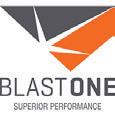
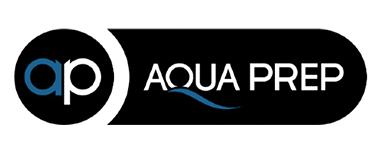

Organised by Est 1990 Official Media Partner Conference Sponsor Water Bottle Sponsor Coffee Cart Sponsor Lanyard Sponsor Proud Platinum Partner Proud Gold Partner
COLLINGWOOD HERITAGE SITE
REVAMPED INTO INDIGENOUS FASHION HUB
by April Shepherd, Editor, Council magazine

In Melbourne a historical church hall and caretaker’s residence in Collingwood has been transformed into a First Nations fashion hub, thanks to support from the Yarra City Council and Kinaway Aboriginal Chamber of Commerce, reinvigorating a heritage site to a creative space championing Indigenous Australian fashion designers and artists.
16 CULTURAL ENGAGEMENT
Mural by Ky-ya Nicholson-Ward on the outside of
KIN Fashion.
Image: Monkey Media.
The suburb of Collingwood in Melbourne is known for its iconic art scene, but as housing prices skyrocket, the dream for many artists of having a gallery or showcase in the area is out of reach.
KIN Fashion, located in the heart of Collingwood, began as part of Yarra City Council’s Room to Create program, a charitable fund delivered in partnership with the Lord Mayor’s Charitable Foundation and aiming to support artists with affordable and sustainable creative spaces. The Room to Create program utilises under-used council buildings to house creative organisations, artists-in-residence, and in this case a hub for Indigenous artists and designers to showcase their work.
The Room to Create program utilises under-used council buildings to house creative organisations, artists-in-residence, and in this case a space for Indigenous artists and designers to showcase their work.
Through this program the Council, in late 2021, opened Expressions of Interest (EOI) for a short-term tenancy of 12-16 Peel Street Collingwood, offering subsidised rent and making the space an affordable option for creatives.
City of Yarra has a high number of residents who work in the creative arts field, housing many iconic streets known for fashion, art, live music venues, galleries and artist-run spaces.
12-16 Peel Street had been vacant for many years and required major building works supported by a $100,000 grant, provided by the Victorian Government’s Creative Neighbourhood Pilot Program, through Creative Victoria. Yarra City Council Mayor Sophie Wade said, “KIN Fashion is a First Nations Fashion Accelerator Project, supported and founded by the Kinaway Chamber of Commerce, which supports Victorian Aboriginal and Torres Strait Islander business owners.”
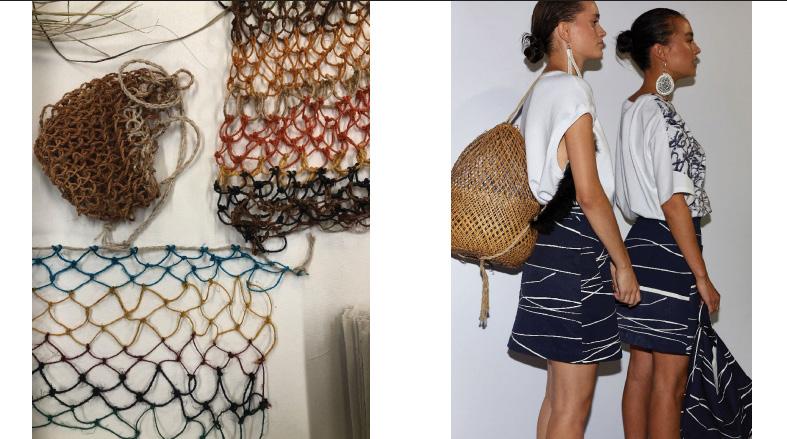
KIN Fashion secured the lease as part of a competitive EOI process, choosing eight designers to be featured through its 18 week pilot program, the KIN Fashion and Textiles Program 2021, which supported creative entrepreneurs to connect with local manufacturing networks in Melbourne.
KIN’s designers then launched their designs in Federation Square at the Melbourne Fashion Festival in March 2022.
STRENGTHENING INDIGENOUS AUSTRALIAN FASHION AND BUSINESS
KIN Fashion’s occupancy aimed to create an Indigenous Australian arts and cultural hub in the precinct, with the Yarra City Council commissioning a mural by artist Ky-ya NicholsonWard to be painted on the external walls of the building, adding a striking addition for locals.
Since the beginning of their tenancy, KIN Fashion has selected a number of Indigenous designers to present their work in the Peel Street building, who got to work with experts in the industry and ethical materials to create their collections.
Mayor Wade said KIN has set up a “fashion and textiles design studio with high digital capacity, strengthening innovation in the First Nations fashion sector development.
“The program aims to support artists and designers to engage with local manufacturing networks and to use digital marketing tools to enter the global market.”
Mayor Wade said that initiatives such as the Room to Create program make a critical contribution to the culture and vitality of the Council region, and create an opportunity for these Indigenous artists to showcase their work, in an area that has become less affordable for many.
“With iconic live music venues, more than 60 galleries and artist-run spaces, peak arts organisations, film production houses, recording studios and more, Yarra is an engine room for the arts. But with the price of land skyrocketing, artists need more support than ever to secure creative spaces,” Mayor Wade said.
BRINGING THE RUNWAY TO PEEL STREET
Peter Naughton, hired by Kinaway, The Victorian Aboriginal Chamber of Commerce, to be the Program Director for KIN Fashion, has been an instrumental part of the studio's inception and development.
Mr Naughton has worn many different hats throughout the development of the initiative, alongside Marketing and Communication Manager and Creative Director of the First Nations runway at Melbourne Fashion Festival 2022, Rhys Ripper, a Yorta Yorta man who is known internationally for his expertise in fashion media and communications. The project was also aided by Production Manager, Alison Geppert, an accomplished manager with over 20 years’ experience in the industry.
“My role has been a mixture of focus areas. Developing the program with the support of our Production Manager. Working with the designers to understand their fashion ambitions and building a plan to meet those goals from a product perspective,” Mr Naughton said.
Mr Naughton said the project has been hugely successful, and met with support from the Council and community alike.
“The experience of developing and launching this program has been incredibly successful. One of the gaps in the sector for emerging creatives is the lack of access to the building blocks required to design and sample a collection,” Mr Naughton said.
“We have been able to connect creatives with high quality resources and materials that have elevated their creative vision, all of our manufacturers are ethically accredited, and our raw materials and print studios are world class.”
Mr Naughton said that not only has the project allowed the designers to have a taste of running their own fashion business, they also were lucky enough to be featured in the First Nations runway at Melbourne Fashion Festival and the event’s official opening ceremony.
“Other aspects of the experience have been the swell of support from other peak bodies and organisations. We had the incredible support of the Melbourne Fashion Festival to launch a stand-alone textile exhibition in Federation Square, paired with the First Nations Runway.”
www.councilmagazine.com.au Winter 2022 // ISSUE 3
17 CULTURAL ENGAGEMENT
Pieces created by fashion label Yanggurdi. Image: Peter Naughton.
The project’s successes are measured in many ways, all championing First Nation voices and designers.
“Yarra City Council has been really supportive to the community through their commission of the full external wrap-around mural by Ky-ya Nicholson-Ward on the building, and the nightly themed projections of First Nations artists on the park wall on Peel Street,” Mr Naughton said.
“The development of the First Nations Fashion and textile studio underlines Council’s commitment to support the First Peoples culture, creativity and entrepreneurship,”
Peter Naughton, Project Director of KIN Design Studio Pilot collection
The Council began working with KIN Fashion after Kinaway’s successful application for the Peel Street Space.
Mayor Wade said that Room to Create is Yarra City Council’s unique approach to responding to a local and global challenge.
“Council hopes to make a tangible difference in ensuring artists and creative organisations continue to live, work and contribute to our city.”
Mr Naughton has described the project as a “very significant moment as we witness the rise of First Nations Fashion.
“However, despite the amazing collaborations, runways, and editorials there is still a lot of work to do to make the fashion industry truly inclusive,” Mr Naughton said.
THE CHOSEN DESIGNERS
The designers featured in KIN Fashion were selected by Kinaway, through a promoted EOI on the organisation's social media networks.

“We promoted an EOI on social media via the Kinaway network – we received a significant number of applications reflecting the level of interest in this sector. The selection process was taken in line with a cross between government and industry in the selection committee, and a mix of Indigenous and non-Indigenous backgrounds,” Mr Naughton said.
Kinaway settled on eight Indigenous Australian designers, artists and creatives:
∞ Amber Days – an ethical childrenswear label inspired by the Australian landscape, especially the bush, desert and sea
∞ Clothing the Gaps – an ethical Victorian-based clothing label focused on raising awareness and truth telling. Cofounded Laura Thompson, who is also the Free The Flag campaign leader
∞ Adjadura – a streetwear label which means "my people’s art" in Narungga language. Founded by Daen SainsburySmith who is an artist and content producer
∞ Solid Ochre – fashion label created by Indigenous model Nathan McGuire, inspired by culture and connection to Country
∞ Yanggurdi – Yanggurdi means “walkabout” in Taungurung language, with the label’s collection titled Mungan Biik, inspired by founder and designer Cassie Leatham’s travels across Country
∞ Ngali – a clothing label aiming to bring Indigenous and Torres Strait Islander artwork to the world through the medium of clothing and collectibles
∞ Wa-ring – creating art and clothing inspired by waring, which means ‘river is kin’ in founder Annette Sax’s Taungurung Language, and represents a place where Indigenous women gather to share Ceremony on Taungurung Country
∞ Taylah Aimée – a textiles design and homeware label using multiple mediums for storytelling through art, and embracing the slow fashion movement
THE WIDER BENEFITS FOR THE CHOSEN DESIGNERS
Featured designer and Yanggurdi founder, Cassie Leatham, said her business joined Kinaway for support and has since been able to connect to more businesses, join in partnerships with corporate connections and be featured in the KIN Fashion studio.
Ms Leatham’s label is inspired by her travels across Country with her blue budgie, Mr Beaky, with her collection titled Mungan Biik – meaning “weave on Country.”
The logo shows a budgie near a waterhole; where lomandra and other native grass are harvested for weaving the pieces in the collection, and then screen-printed onto cotton. This is an example of how Ms Leatham showcases and honours past and traditional Indigenous practices, with futuristic art and design.
“This is how my fashion journey began, with applying through Kinaway for the KIN Fashion design pilot program,” Ms Leatham said.
Ms Leatham said that thanks to KIN Fashion, her label Yanggurdi will continue creating and designing work commitments for future fashion events.
“Creating and designing with KIN has given me some great opportunities to network with other major designers and businesses that give understanding into our culture and arts,” Ms Leatham said.
Annette Sax, founder and designer behind the Indigenous fashion label Wa-ring, has worked with Kinaway for many
Winter 2022 // ISSUE 3 www.councilmagazine.com.au
18 CULTURAL ENGAGEMENT
KIN Fashion facing onto Peel Street in Collingwood. Image: Monkey Media.
“Council’s involvement shows more awareness and support for our First Nations peoples and creating more conversations around not only creative fashion, but the stories behind the designs, history and importance of continuing partnerships for future collaboration and reconciliation.”
Cassie Leatham, Yanggurdi founder and designer
years through her business Yarn Strong Sista – which won the Kinaway Excellence Award in 2021, just as her new label Wa-ring came to be.
“Wa-ring means “river is kin” in my Taungurung Language, and is the place where Aboriginal women gather to share Ceremony on Taungurung Country,” Ms Sax said.
After a successful application to the KIN Fashion and Textiles Program 2021, Ms Sax decided to develop Wa-ring as a separate business to Yarn Strong Sista, which offers a variety of services such as visits to Early Childhood environments to facilitate storytelling with children and Indigenous designed resources and educational tools.

“I quickly realised I needed to develop my fashion label as a separate entity to my existing business Yarn Strong Sista (YSS). Yarning with my Gamilaroi Sista, Priscilla Reid-Loynes, we shared stories of our experiences with wa-ring. Our waterways are central to our being as River Women. This is how we named my new label,” Ms Sax said.
Ms Sax said the KIN program was the “perfect opportunity” for herself and new label Wa-ring.
“I’ve learnt so much from the KIN Fashion team who all have decades of expertise nationally and internationally. I was mentored by Marketing and Communication Manager and Creative Director of the First Nations Runway Rhys Ripper, Project Manager Peter Naughton and Production Manager Alison Geppert.”
For Ms Sax, the guidance of the KIN program allowed her to hone in and focus on her label, and its representation and connection to Country.
“In our weekly Zoom meetings, we had inspiring discussions of Japanese designers and the fashion revolution. Style ideas of fitted layers, asymmetrical and structured shapes and fluid motion of waterfall frill effect. These conversations moulded the Wa-ring collection, always keeping true to Country.”
Ms Sax said that through the support of this venture she has seen barriers removed for not only herself, but the other eight participants, to enter the fashion and textile industry.
“Local governments need to recognise First Nations social justice and economic empowerment
being a top priority,” Annette Sax, Wa-ring founder and designer
WHAT DOES THE FUTURE HOLD?
From all accounts KIN Fashion has been a success, and a real community effort, featuring collaboration between Council, Kinaway and designers to create an affordable space for Indigenous artists to showcase their work and heritage.
“KIN’s tenancy is currently 18 months with a possible extension of a further six months. Anecdotal feedback is people are loving having the space and they are using it as a home base while their projects scale up,” Mayor Wade said.
“There are relationships being explored with London Fashion Week and the team are also preparing for Melbourne Fashion Week later in 2022.”
Mr Naughton said that KIN fashion is “helping build the scaffolding that will support long-term ambitions within the sector.
“This will take time and will require layered investment and support from Council, government, fashion Industry, corporate investors, community and customers.
“Fashion is a notoriously complex business to navigate so there is a job ahead to create a fertile environment for new business to thrive.”
KIN Fashion's tenancy ends in June 2023 and may be extended. They are inviting sponsorship opportunities within the corporate and philanthropic sectors and welcome interested parties to make contact. Stay tuned to Council for updates.
www.councilmagazine.com.au Winter 2022 // ISSUE 3
19 CULTURAL ENGAGEMENT
Wa-ring designs at Melbourne Fashion Festival 2022. Image: Annette Sax.
LORD MAYORS: WHY DO SOME COUNCILS GET ROYAL RECOGNITION?
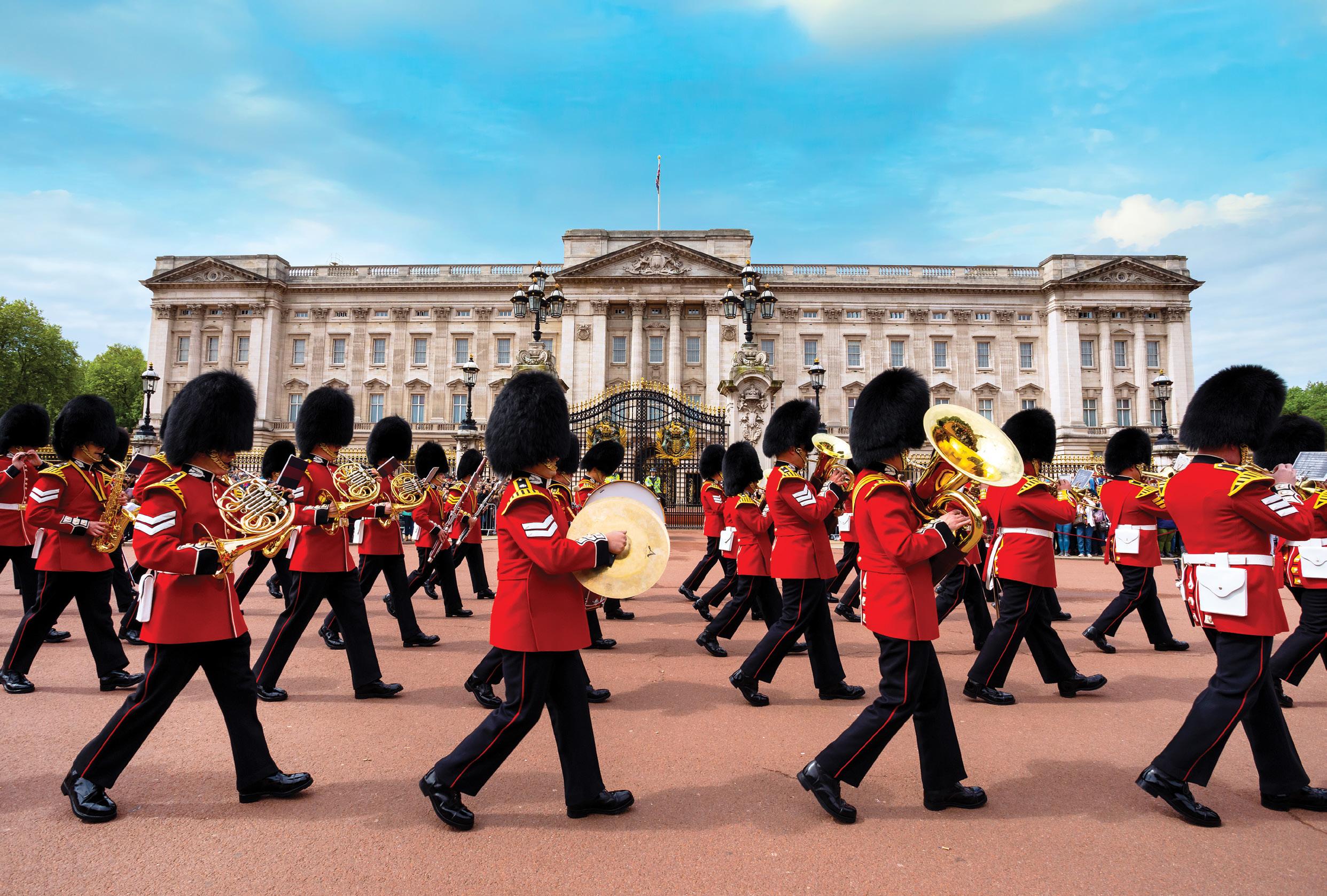 by Lauren DeLorenzo, Journalist, Council magazine
by Lauren DeLorenzo, Journalist, Council magazine
From David Attenborough to Adele, royal titles are typically bestowed in recognition of an individual’s contribution to their field. So why do some Australian councils have a lord mayor while others miss out on the title, and what does it mean for local governments?
Australia has over 500 local government councils, but only a select few of them elect lord mayors. Melbourne, Perth, Canberra, Sydney, Adelaide, Hobart and Darwin each have a lord mayor, recognising the capital cities as prominent areas for culture and history.
The British monarchy has also bestowed the title on Parramatta, Wollongong and Newcastle after they reached significant milestones.
Here, Council dives into why these cities were granted the title, how a mayor can be nominated, and what being lord mayor actually means.
THE SIGNIFICANCE OF A LORD MAYOR TITLE
The title of lord mayor does not come with any additional powers or advantages, save for the recognition it brings to the reputation of the council.
So what is it that sets lord mayors apart from regular mayors? Is it undertaking significant charity work? Setting forth grand council initiatives? Making bold policy decisions?
The answer is that there are no specific criteria to be eligible for the title of lord mayor.
Historically, the title has been granted to mayors of certain capital cities in Commonwealth countries. A handful of lord mayor positions exist in the UK, Canada and Uganda, where they are ceremonial posts recognising major cities.
In Ireland, which split from the Commonwealth and became a republic in 1949, the title of lord mayor has been kept in the country’s capital, Dublin, and in Cork as a symbolic title.
In Australia, the title functions a little differently, as the mayor of every capital city in the country is given lord mayor status.
But, it’s not just capital cities that are eligible for the title. In the UK, Bradford was granted the honour as it was (at the time) the largest municipality without the lord mayor title.
Winter 2022 // ISSUE 3 www.councilmagazine.com.au
20 CULTURAL ENGAGEMENT
Buckingham Palace in the United Kingdom.
Other cities in the UK, like Kingston upon Hull and Newcastle upon Tyne, were granted lord mayorship status due to their proximity and importance to sea ports.
DO LORD MAYORS HAVE ADDITIONAL RESPONSIBILITIES?
Mayors not only represent councils in civic and ceremonial duties, but they are also responsible for guiding councillors in their roles, acting as chair in council meetings, acting as the primary council spokesperson and developing opportunities for community growth and improvements.
Lord mayors of capital cities have the added responsibility of contributing to the Council of Capital City Lord Mayors (CCCLM). This organisation aims to provide national leadership on the coordination of issues relating to Australian capital cities, particularly in how they relate to other levels of government.
There are slight differences in the responsibilities of lord mayors depending on the city. The Lord Mayor of Sydney is responsible for specific functions delegated by Council. The Lord Mayor of Melbourne leads regular reviews of the CEO, who is the only staff member appointed by Council and is responsible for overseeing the dayto-day management of Council operations.
In Hobart, the Lord Mayor appoints and monitors the performance of the general manager, assisting in its support of Council.
WHO CAN BE NOMINATED FOR LORD MAYOR?
In Australia, councils can nominate their mayor for the title by writing to the State Government, which can then pass on the application to the monarchy for approval.
the community. Because of this, applications for the title have been disparaged as ways to improve public perception without adding substantive value to councils.
Liverpool Mayor, Nen Mannoun, criticised Liverpool Council’s application for the title in 2017, while a different mayor was in office.
In a Facebook post, Mr Mannoun wrote, “What do you think is important for the Mayor and Council to be discussing and fixing? Better train services, increased funding for CCTV, better parks, more jobs?
“Instead, they are wasting their time (and your money) discussing the importance of changing the title of the mayor to lord mayor.”
The outcome of Liverpool’s lord mayor application has not been announced.
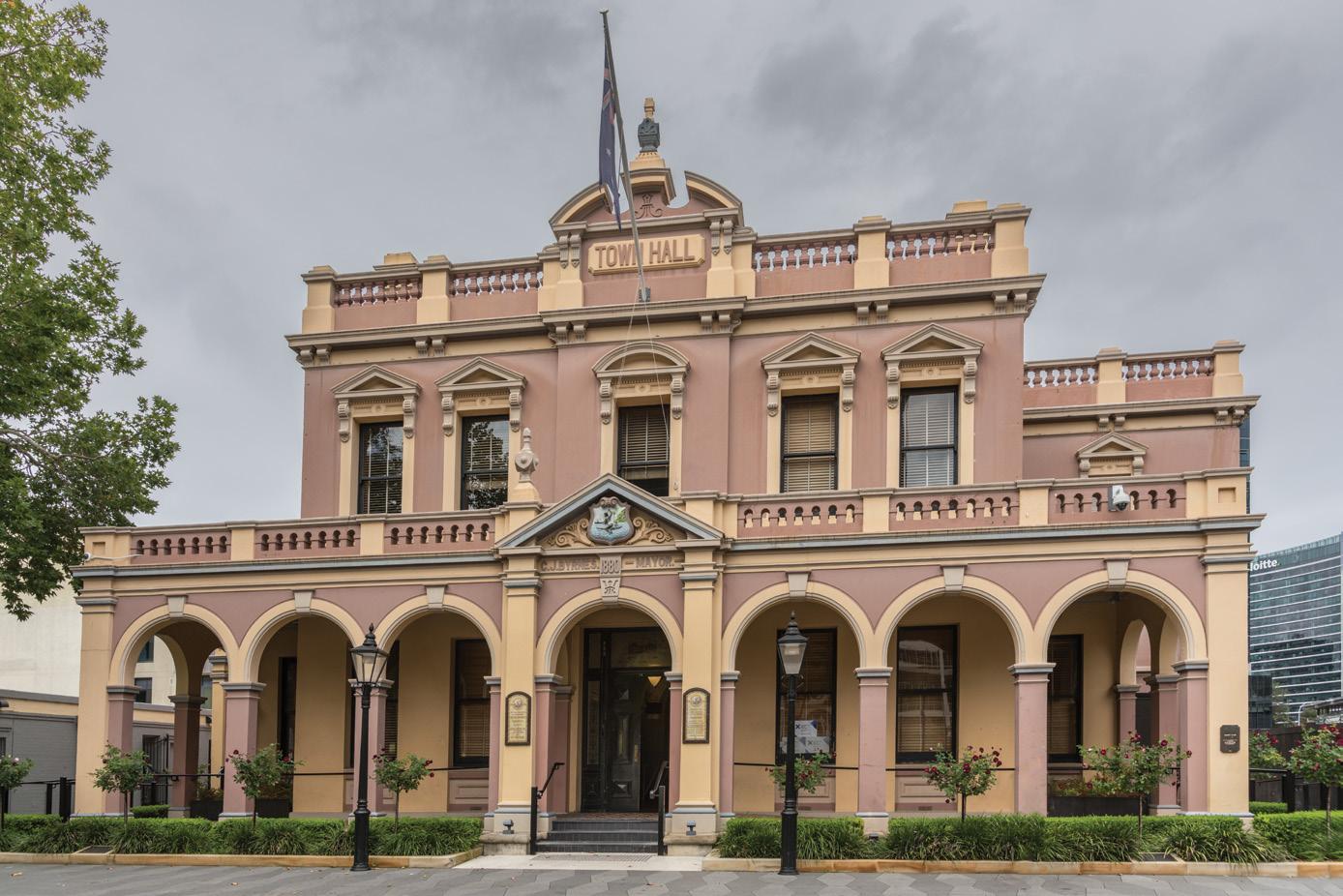
This was the process that Liverpool Council began in 2017, when it nominated its mayor for the title. This was shortly after Liverpool was reclassified as a large metropolitan city, reflecting its growing population.
As the fourth oldest settlement in Australia (after Sydney, Parramatta and Hobart, all of which hold lord mayor titles), Liverpool Council highlighted the historical importance of the city.
Liverpool’s historical significance includes over 500 Indigenous sites containing artwork, archaeology, scarred trees and artefacts.
The area also includes some of the first examples of domestic colonial architecture from the 1800s and military barracks used for training in World War I and World War II.
Another consideration for Liverpool is the opening of the Western Sydney Airport, which is anticipated to bring even further growth and international attention to the region. A lord mayor title, proponents argue, would elevate the reputation of Liverpool.
In regards to granting the lord mayor title, the Office of Local Government has advised that, “Although there are no specific qualifications required for such bestowal, it appears that the local government area would need to have a very special significance in the history and geography of the state.”
CRITICISM OF LORD MAYOR APPLICATIONS
As lord mayor is a ceremonial title, whether a council is granted the honour or not has very little tangible effect on
LORD MAYORS OUTSIDE OF CAPITAL CITIES
Other than the capital cities of each state and territory, Australia currently has three councils that elect lord mayors — Wollongong, Paramatta and Newcastle in New South Wales.
In 1948, Newcastle became the first non-capital city to receive the honour of a lord mayor title. It was recognised by King George VI for being the second oldest and largest city in New South Wales.
Wollongong Council first applied for the lord mayor title in 1951, with subsequent applications in 1956, 1959, 1964 and 1965. Wollongong was finally granted the title by Queen Elizabeth II in 1970, following a tour of the city and a longrunning community campaign led by Council.
Parramatta Council received lord mayor status in 1988, after making an application by a letter to the State Government during its bicentennial year.
The title was approved in a message from Buckingham Palace, which read, “It is established practice in the UK that the mayor of an important city is raised to a Lord Mayor only to mark some very special national or local event.
“The City of Parramatta’s own bicentennial, in Australia’s own bicentennial year, seems to meet that criterion most aptly, so the Queen is happy to approve the Premier’s recommendation that the Mayor of Parramatta should be raised to the dignity of Lord Mayor.”
www.councilmagazine.com.au Winter 2022 // ISSUE 3
21 CULTURAL ENGAGEMENT
Parramatta Town Hall.
TEACHING YOUNG MINDS ABOUT DIVERSE CULTURES THROUGH FOOD FROM THE GARDEN TO KITCHEN:
Most people can relate to the sense of community that food can inspire. It’s the simple act of gathering around a table together that inspired Stephanie Alexander AO to start The Stephanie Alexander Kitchen Garden Program over twenty years ago. Teaching young people to grow and prepare food is the Program's passion, collaborating with local governments and schools to deliver a range of health, education and community benefits.
For over twenty years, the Stephanie Alexander Kitchen Garden Program, founded by one of Australia's most wellknown cooks, has proven itself as a powerful tool in drawing communities together through kitchen garden programs, supporting cultural safety and heightening social cohesion at schools and early childhood services around the country.
The Kitchen Garden Program helps schools implement community gardens and teach students how to grow and harvest a diverse range of food, prepare a variety of cuisines and appreciate pleasurable food education.
Now a Foundation, it provides professional development and support for educators and local communities, working with local governments and schools to deliver food education for young people.

“Gathering together over a meal is one of my greatest pleasures. To enable individuals to do that is precious; to enable communities to do that is beneficial in vast ways,” Ms Alexander said.
HOW FOOD CAN CONTRIBUTE TO CULTURAL INCLUSION
The Foundation works with many schools and local governments that house a variety of diverse communities, using food as a way to teach young minds about different cultures.
In the Journal for Multicultural Education, authors Karen Block, Lisa Gibbs, Susie Macfarlane and Mardie Townsend discuss how the Kitchen Garden Program increases cultural diversity and inclusion in schools, in their article Promoting appreciation of cultural diversity and inclusion with the Stephanie Alexander Kitchen Garden Program.
“In a culturally diverse school, the program enhanced the school’s capacity to engage and include children and families from migrant backgrounds. In less diverse settings, the program provided opportunities for schools to teach children about cultural diversity.”
The article also said that the findings suggest “the program can help to promote social equity and inclusion for culturally diverse groups”.
Belonging and inclusion are vital for the healthy development of children and young people, and school and early education settings are an important place to bolster this.
For Elizabeth Downs Primary School, north of Adelaide, promoting inclusivity and diversity is important given the school has children from 30 different cultural backgrounds.
Kim Meissner, Kitchen Specialist at Elizabeth Downs Primary School, believes the Program provides
Winter 2022 // ISSUE 3 www.councilmagazine.com.au
22 CULTURAL ENGAGEMENT
Students from Springvale Rise Primary School in their kitchen garden. Image: Springvale Rise Primary School
a necessary sense of cultural understanding, “particularly through the reinforcement of culturally-influenced dishes that reference and open discussion for foods, practices, and techniques they may not have been introduced to before”.
Ms Meissner said the Program draws from as many food cultures as possible, which centres and empowers the children.
“We talk about what the name of the product or dish is in their language. This is the same in the garden space, where students like to identify plants and talk about how to say and pronounce it in their native tongue.”
Kim Meissner, Kitchen Specialist at Elizabeth Downs Primary School
Karama School in Darwin, which has a high proportion of students who identify as Indigenous and Torres Strait Islander, as well as children from homes with diverse cultural and language backgrounds, has also seen the benefits of implementing a Kitchen Garden Program.
“Karama School has a well-established kitchen and garden program. The children at Karama love the garden and it is well respected. Many children report that cooking is their favourite subject and show great pride in sharing what they have produced in the kitchen and the garden with their peers, the school and the wider community,” a spokesperson from Karama School said.
TEACHING HEALTHY FOOD HABITS
The Foundation has partnered with a number of councils, including Brimbank, located in Melbourne’s West, to help more schools and centres start Kitchen Garden Programs.
Brimbank Council, in collaboration with the Foundation, helped nine schools in the area implement a
Kitchen Garden Program by subsidising a membership package that provided resources, professional development and access to guidance from the Kitchen Garden team.
Brimbank Mayor, Cr Jasmine Nguyen, said, “Brimbank City Council is really proud to support a program that gives young people hands-on experience in a kitchen garden at school. It is a great way for children to learn about the benefits of growing food for the environment and their own health.
“It is also wonderful to see the program include culturally diverse food.
“We are a diverse and multicultural municipality with more than 46 per cent of residents born in another country, and about 160 different languages spoken in Brimbank. And we are all the richer for it.
“For young people, being able to share or learn about the foods that they may grow in their home garden, prepare in their kitchens, or enjoy for family meals, helps boost pride and better understanding of each other’s cultures.”
Another school that has benefited from the program is Springvale Rise Primary School in Melbourne, where the kitchen garden is considered a “one-stop-shop.”
Springvale Rise Primary School Principal, Debbi Cottier, said, “We consider ourselves a community hub. We see the kitchen garden space as a way to embrace our community –addressing inclusion – we are really trying to create a safe place for families who are newly arrived to Australia.”
The school uses food as a way to connect with parents and foster a safe space.
“Sharing food is one of the most wondrous ways of connecting. And we’re such a culturally diverse community, we’re treated to some amazing foods among the way,” Ms Cottier said.
Kitchen Garden Programs can also provide an alternate setting for reluctant learners, those with special needs, or those who need a gentler way into their learning day.
Mary Giannakopoulos, Kitchen Garden Specialist at Springvale Rise said, “The garden is a bit of a refuge.
“Children who might not be having a great day can come and sit in the garden, have a chat, potter around, it
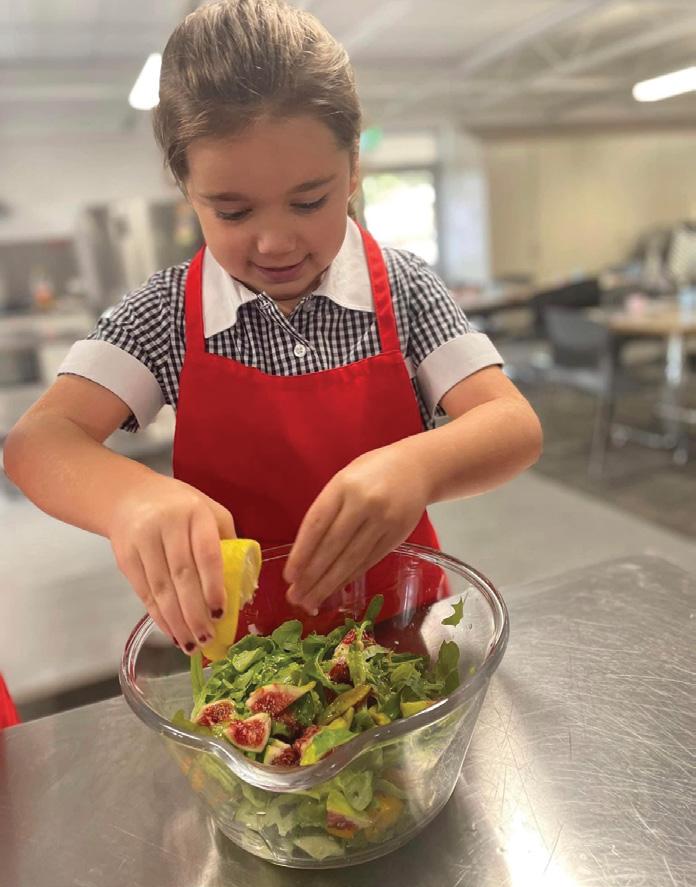
helps them turn the switch and change their view for the day.”
The Kitchen Garden Program supports schools and services to deliver curriculum requirements as well as social and emotional learning.
Denise Stone, Principal at Spearwood Alternative School said, “The Kitchen Garden Program provision of rich learning resources supports learning across the curriculum, in general capabilities, and the overarching outcomes are met with links to Aboriginal and Asian studies and certainly sustainability.
“It is an awesome, unifying vehicle for learning for all ages. The inclusion of parents in the program effectively meets our school connection and community values.”
MEANINGFUL CHANGES THROUGH
FOOD EDUCATION
Creating a space where children and young people’s lived experience is valued, and shown in a school context, is key to wellbeing. Community involvement strengthens this – nurturing the vital links between learning experiences, child, family and community.
“I believe that if our program was part of the educational experience of every child from early learning to adolescence, we would achieve meaningful change in health, education, cooperation and community spirit, cultural tolerance and understanding,” Ms Alexander said.
To find out more about the Stephanie Alexander Kitchen Garden Foundation and how local councils can support schools and services to deliver this program, visit www.kitchengardenfoundation.org.au
www.councilmagazine.com.au Winter 2022 // ISSUE 3
23 CULTURAL ENGAGEMENT
A student from Elizabeth Downs Primary School learning to cook with fresh ingredients from the garden. Image: Elizabeth Downs Primary School
Smart access solutions: IMPROVING QUALITY OF LIFE FOR COMMUNITY MEMBERS

For councils to offer valuable experiences for residents to explore, in the form of bookable resources, having the support of a reliable security system is a non-negotiable.
The system needs to be reliable and highly advanced, but also effortless to manage; especially since this will typically be the residents’ first point of access before entering the facility.
SMART ACCESS SOLUTIONS
In this day and age, residents expect councils to keep up with the latest technology and security standards –while creating smart access solutions that are as simple as possible to utilise without any compromise on security.
Installing smart access solutions benefits everyone within the community. For councils, it can cut costs relating to installing technology, monitoring keys and the physical need for staff members at the facilities’ entry points, which means councils can allocate these savings into other resources.
Local councils continuously endeavour to improve the quality of life for residents in the community. Whether locals are looking to create memories with family, immerse themselves in cultural ceremonies, or want to mingle with fellow community members over a common interest – councils offer plenty of bookable activities and resources for residents to make the most of.
With smart access control, councils can simultaneously achieve costefficiency and give their residents easier access to the great facilities at hand.
THE RIGHT SOLUTIONS TO CREATE SMART CITIES
Diverse bookable resources that are backed by the right security measures can create smarter cities and enhance community life – with solutions like TecomC4 having the capabilities to do just that.
TecomC4 is a management software system that delivers a centralised, multiuser solution through one interface and has already been employed across New South Wales city councils.
Fairfield City Council said, “The Tecom solution was at a cost-effective price point, delivered the outcomes we required, and the support is there when we need it, which gives us confidence.”
Any facility that needs a control mechanism to schedule and allocate usage times, or requires access codes to enter certain spaces, can be enhanced by TecomC4’s technology.
Since TecomC4 gives full control over access rights and permissions to match each individual application, it can be scaled to all unique council services, making popular tasks like booking a tennis court or a study room in the library quick and easy.
TecomC4 keeps council buildings and offices highly secure, since it can control who enters certain areas and monitors people coming in and out of different building levels.
TecomC4 also carries over 200 integrations, which means the performance of the building’s CCTV cameras will be even more reliable.
Other bookable resources that TecomC4 is optimal in includes community halls, sporting facilities, swimming pools, and boom gates.
TecomC4 is more than a smart access control solution – it’s a scalable and cost-effective investment that allows both council facilities and the public domain to grow faster and stronger, into the future.
Winter 2022 // ISSUE 3 www.councilmagazine.com.au
CULTURAL ENGAGEMENT // SPONSORED EDITORIAL
24


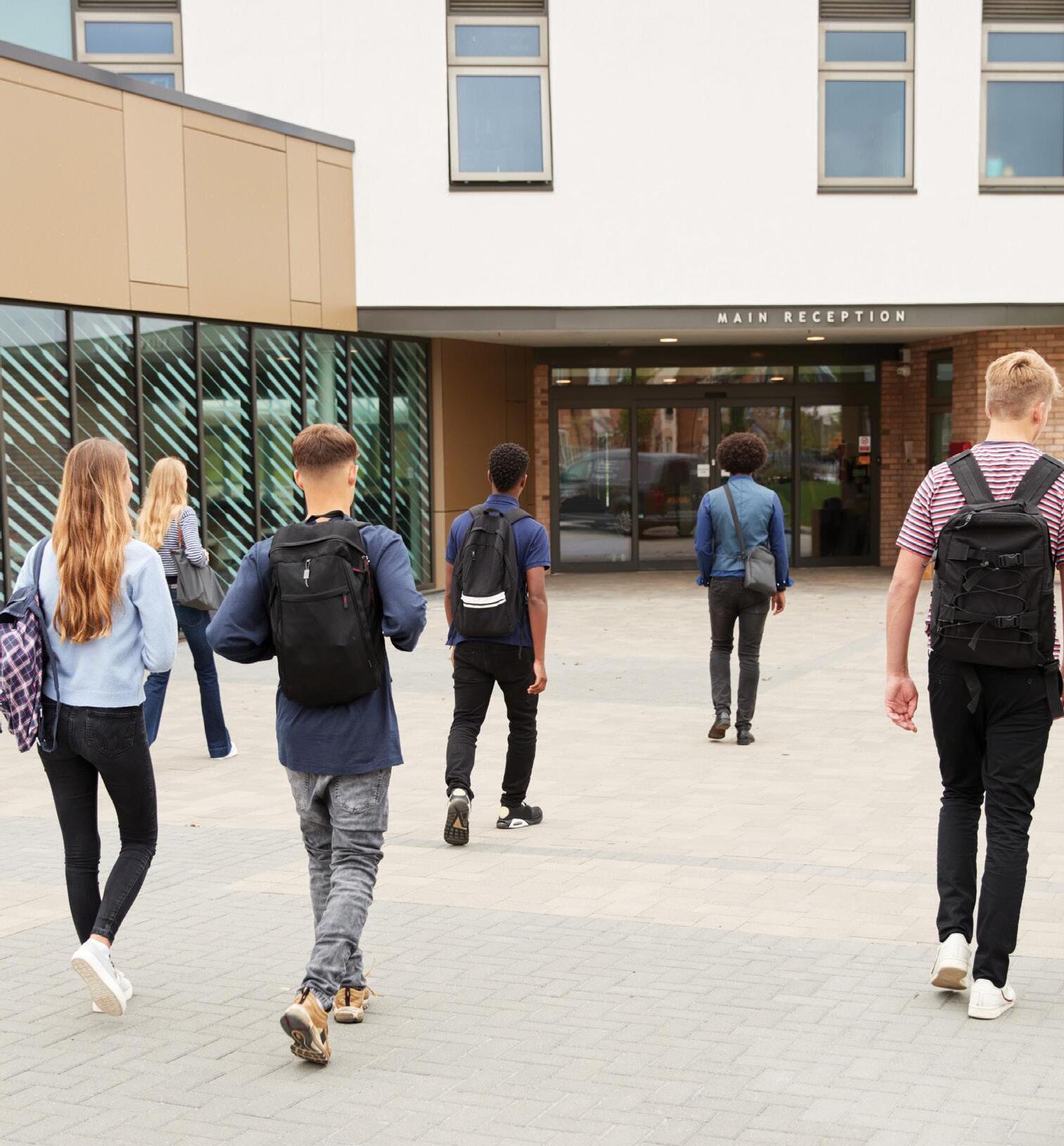





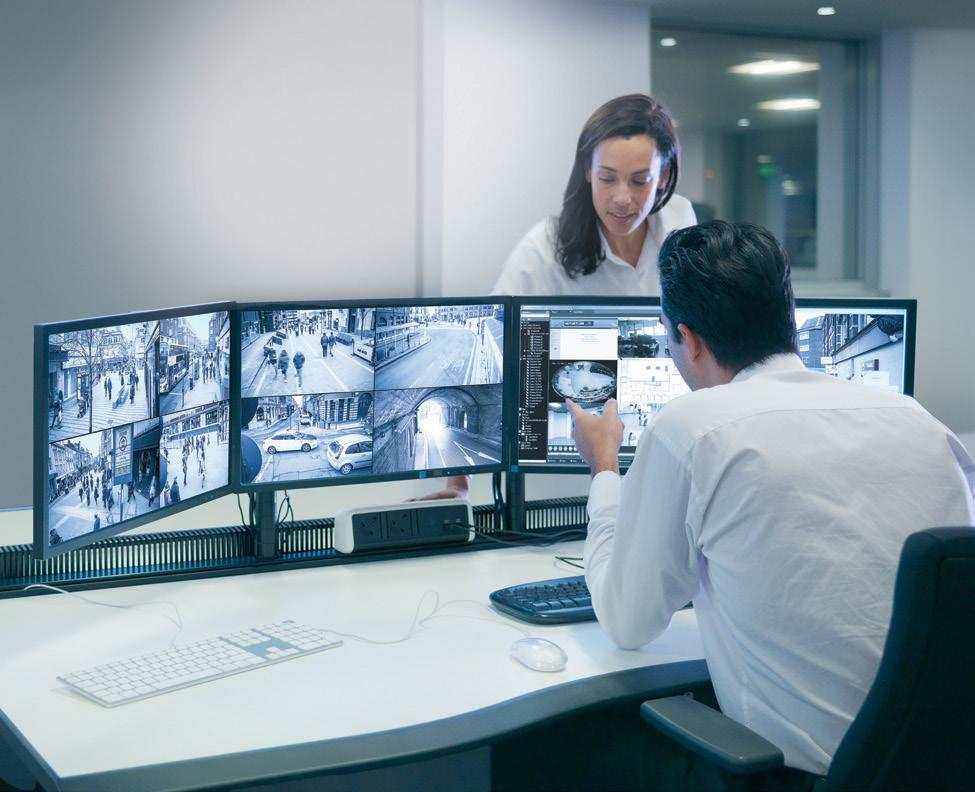
REMEMBERING THE SUBURBS IN AUSTRALIA’S POST-COVID-19 RECOVERY

DAfter numerous lockdowns and limited mobility due to COVID-19, revitalising the nation’s Central Business Districts (CBDs) has been front of mind. From amendments to Planning Laws to allow 24-hour trading, to the injection of funds for live music and the arts, there is no shortage of ideas for increasing foot traffic in these key districts – but not so much conversation around the suburbs that surround the city, and the role localism has played in the pandemic.
espite the focus on enticing locals back to Australia's CBDs, largely missing from recent conversations are the opportunities available to local governments to build on the communities built in the suburbs during the pandemic, and how Out of Home advertising can contribute to this recovery and growth.
SHIFTING HOW WE MOVE AND WORK
According to research firm Kantar, COVID-19 has driven a surge in localism around the country. More than simply a ‘Buy Australian’ catch-cry, this sharp shift in both consumer behaviour and mobility has seen an increased focus on local neighbourhoods, cafes and shopping centres, as residents found themselves with both the time and income to visit businesses close to home.
Many organisations based in the CBD have now settled on a hybrid working policy. The most recent statistics from The Property Congress show that 15 per cent of office-based workers are based permanently at home, while 30 per cent spend between one and three days in the office each week.
Interestingly for local governments, 26 per cent of those working from home want a local co-working space and 24 per cent want to work in a local café. A large shift when two years ago, less than five per cent of the workforce was based at home.
These statistics offer a vital insight into the resilience building that local governments can undertake when planning new developments and assessing the viability of Local Environmental Plans (LEPs) – to ensure that they are catering to resident’s needs.
GETTING TO KNOW THE NEIGHBOURS
There is more to this story than economics; millions of Australians struggled with loneliness and social isolation during the pandemic and while the lifting of restrictions has seen some reinvigorate social networks, there is a multitude of evidence to show that the strength of connection to local amenities keeps people happy and engaged.
Improved community connectedness during COVID-19 was realised in a variety of ways; from meeting neighbours, to supporting those who were elderly or vulnerable, to ensuring local shopping centres were supported.
All were of benefit to not only each local government area, but also to the community members who experienced increased confidence to maintain their own wellbeing while supporting others.
As the post-pandemic recovery continues in 2022, the next big question for local governments and the private sector alike is: How do we build on this momentum and cement suburbs in the psyche of Australia?
USING OUT OF HOME (OOH) TO BOOST LOCALISM
With a company purpose of making public spaces better, oOh!media is deeply invested in over hundred local councils around Australia. From building and maintaining bus shelters that reflect an area’s unique local heritage, to building data platforms to help retail centres inspire and inform – our focus and presence in local communities is stronger than ever post-pandemic.
We know that helping small businesses utilise the power of our advertising assets is a valuable investment for us and an effective way to demonstrate our ongoing commitment to local government.
In June 2022 we will be launching the oOh!media Small Business Boost program – the first of its kind in outdoor advertising – to help local businesses access media packages that would traditionally be out of their reach.
The program will see us provide $100,000 worth of media space to each small business in the program, to allow them to create hyper-local targeted campaigns across our Retail and Street Furniture network over a 12-month period.
The program highlights the confidence we have in localism continuing to be a key focus for all Australians in the coming years.
FINDING THE RIGHT BALANCE
CBDs will continue to hold a place of great importance in Australian culture; they are frequently the first stop for all visitors to our shores and – regardless of the challenges of postpandemic life – and will always be a vibrant hub of creativity. In the desire to push a return to the past, it is important to remember the vital role that the suburbs have played over the last two years and to commit to ongoing investment and growth in partnership with local governments, small businesses and the locals at the heart of these great communities.
Winter 2022 // ISSUE 3 www.councilmagazine.com.au 26
CULTURAL ENGAGEMENT // SPONSORED EDITORIAL
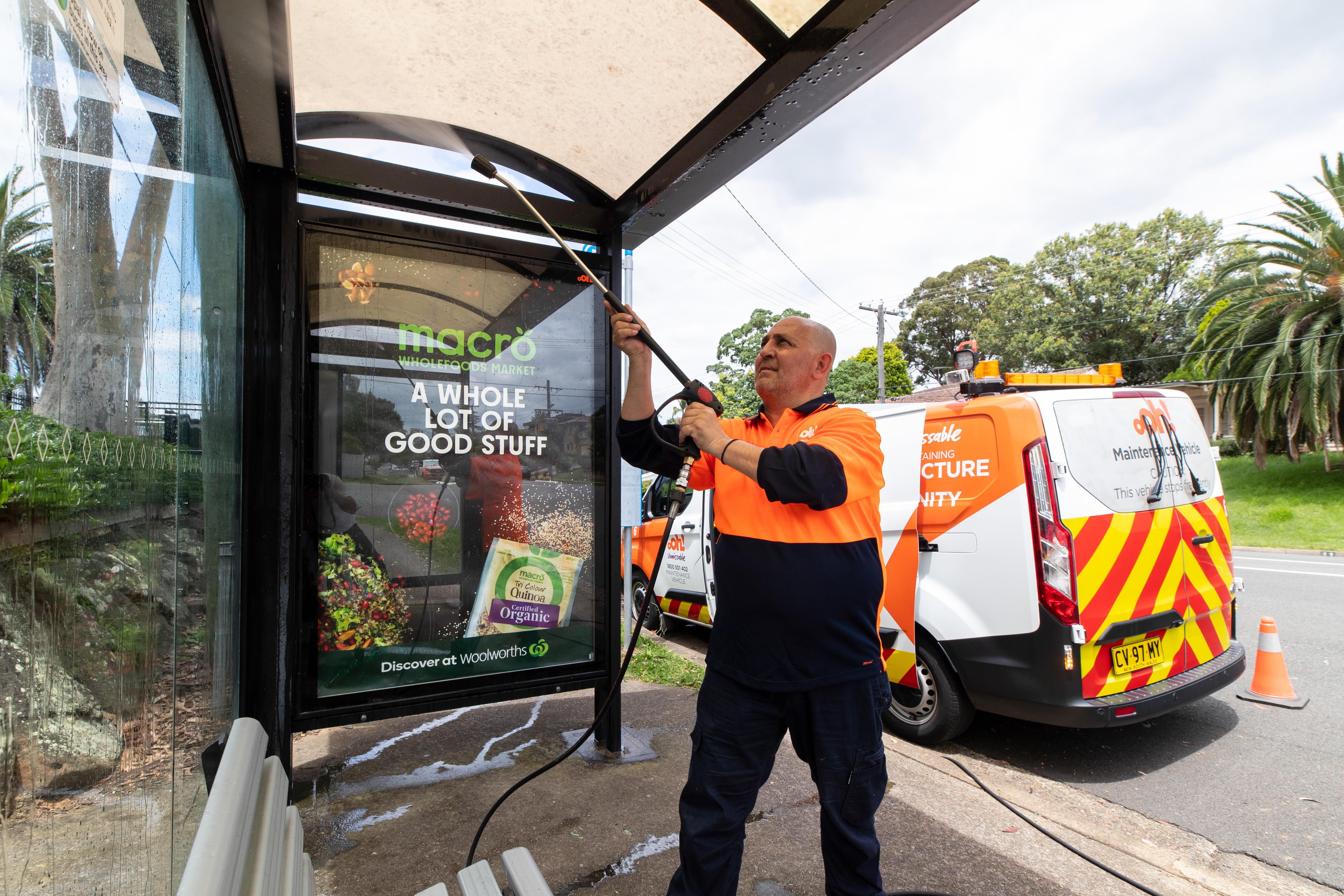
Making public spaces better
oohmedia.com.au l
Aust ralia’s leading Out of Home provider
PRESERVING HERITAGE BUILDINGS TO KEEP COMMUNITIES STRONG
As Australia's suburbs and cities grow, it’s critical for local governments to prioritise the preservation of heritage listed buildings, to not only provide an opportunity for a community to ponder its history, but because these buildings play a significant role in society and offer many social, economic and sustainability benefits to locals.
It’s crucial for members of local government to carefully consider how much is invested in the preservation of heritage listed buildings, because ensuring they are safe and structurally sound is an investment in communities. Many heritage buildings serve as community attractions or interesting landmarks and can contribute to economic growth by generating greater neighbourhood foot traffic through sight-seeing and tourism.
Visually appealing or historically significant heritage structures also help to attract external investment, which can lead to increased land values and healthy property markets. These buildings can also play a role in templating a historically inspired precinct development that provides neighbourhoods with a unique aesthetic that engages with visitors.
MAKING THE MOST OUT OF HERITAGE BUILDINGS
INNOVATIVE LOW IMPACT SOLUTIONS
Ground engineering specialist, Mainmark, has significant experience in helping to arrest damage to heritage-listed buildings. These include a former grain storage facility in Sydney with weakened soil around its foundations, compromising the surrounding footpaths and environment; as well as an 1800s school turned café that had experienced wall cracks and building rotation as a result of differential settlement.
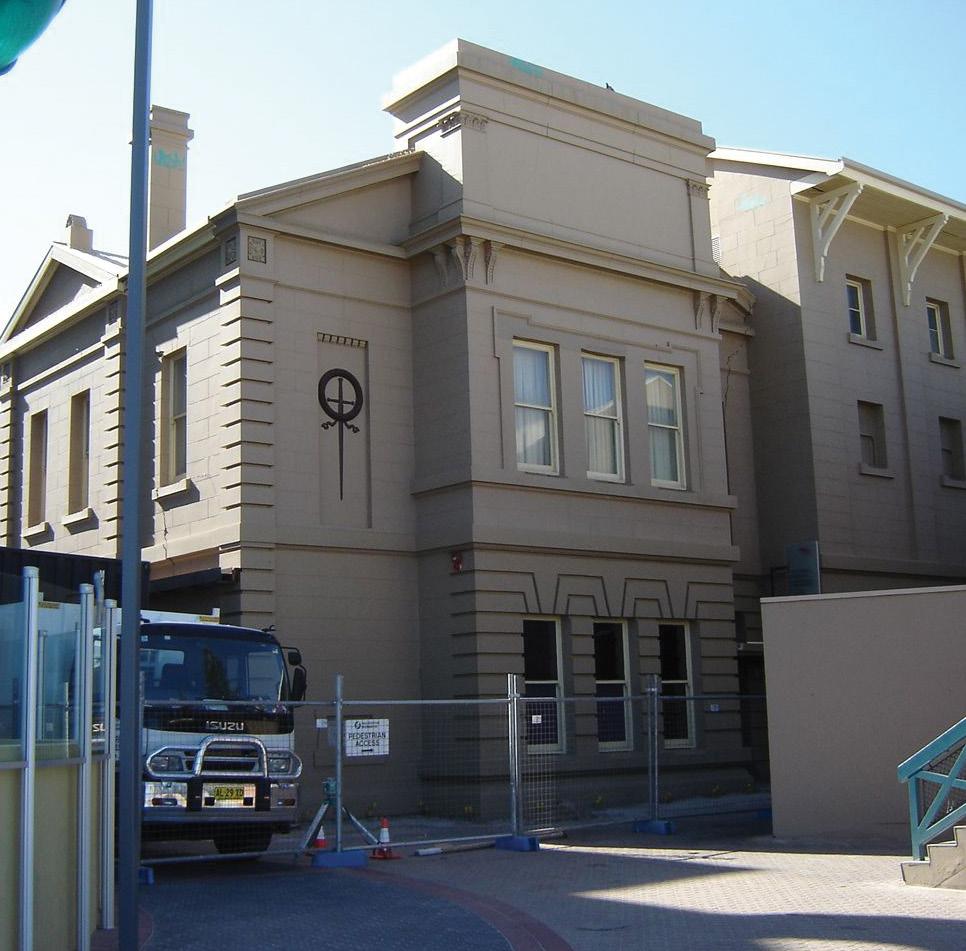

Heritage buildings with high-grade structural integrity can also be reused for different purposes as communities evolve. Typically constructed with brick, concrete, steel and stone, original foundations are often sturdy, reliable and reduce the need for demolition and resource consumption as a result of development. This reduces potential construction waste generation and limits the impact on business and surrounding natural areas that may be impacted by building works. These societal benefits make it important for councils to maintain heritage buildings, but the task can often be challenging. Over time these structures may degrade or begin succumbing to decades of ground movement or water ingress, making them fragile and prone to voids around the foundations. This can lead to damage including sinking floors, cracked walls, jammed doors and windows and other visible signs of subsidence.
In these two cases, and many others that involve heritage sites, the key to structural preservation is low impact solutions that remediate the problem without compromising the building’s structural integrity.
Mainmark’s engineered, proprietary solutions can raise and re-support structures, fill large holes and deliver ground stabilisation, with minimal impact to the site and minimal intrusion and interruption to occupants and visitors.
Mainmark’s non-invasive Teretek® polyurethane resin solution rapidly expands and cures in the ground, both compacting and strengthening the soil while limiting soil reaction to seasonal moisture changes. Applied in a process similar to keyhole surgery, Mainmark has been able to utilise Teretek® for a number of heritage structures, successfully remediating the issue and minimising disruption in the area – providing long-term structural stability.
Fortunately, the responsibility of preserving important heritage structures is no longer a process requiring significant financial investment, weeks of site access restrictions or invasive excavation works that risk causing further damage.
Councils can benefit from the modern engineered solutions available to ensure historical buildings can play an active role in the future of Australian communities.
ABOUT MAINMARK
Mainmark has 15 sites across Australia, New Zealand, Japan and the UK, and provides a range of specialist ground engineering and asset preservation solutions for residential, commercial, industrial, civil infrastructure and mining sectors. Committed to excellence, Mainmark’s state-of-the-art solutions are backed by more than 25 years of engineering expertise.
Mainmark products and services include solutions for ground stabilisation, void filling, stopping water ingress, raising and levelling on-ground and in-ground structures, fixing anchors into rock faces and embankments, and other related ground engineering processes.
Head to www.mainmark.com for more information.
Winter 2022 // ISSUE 3 www.councilmagazine.com.au 28 CULTURAL ENGAGEMENT // SPONSORED EDITORIAL
A historical cafe in Melbourne that was re-leveled using Mainmark's Teretek® solution.
The historical Glenelg Town Hall in South Australia, which had a re-level and re-support by Mainmark.
A NEW DAY.
DECIDE HOW YOUR WORK GETS DONE. A
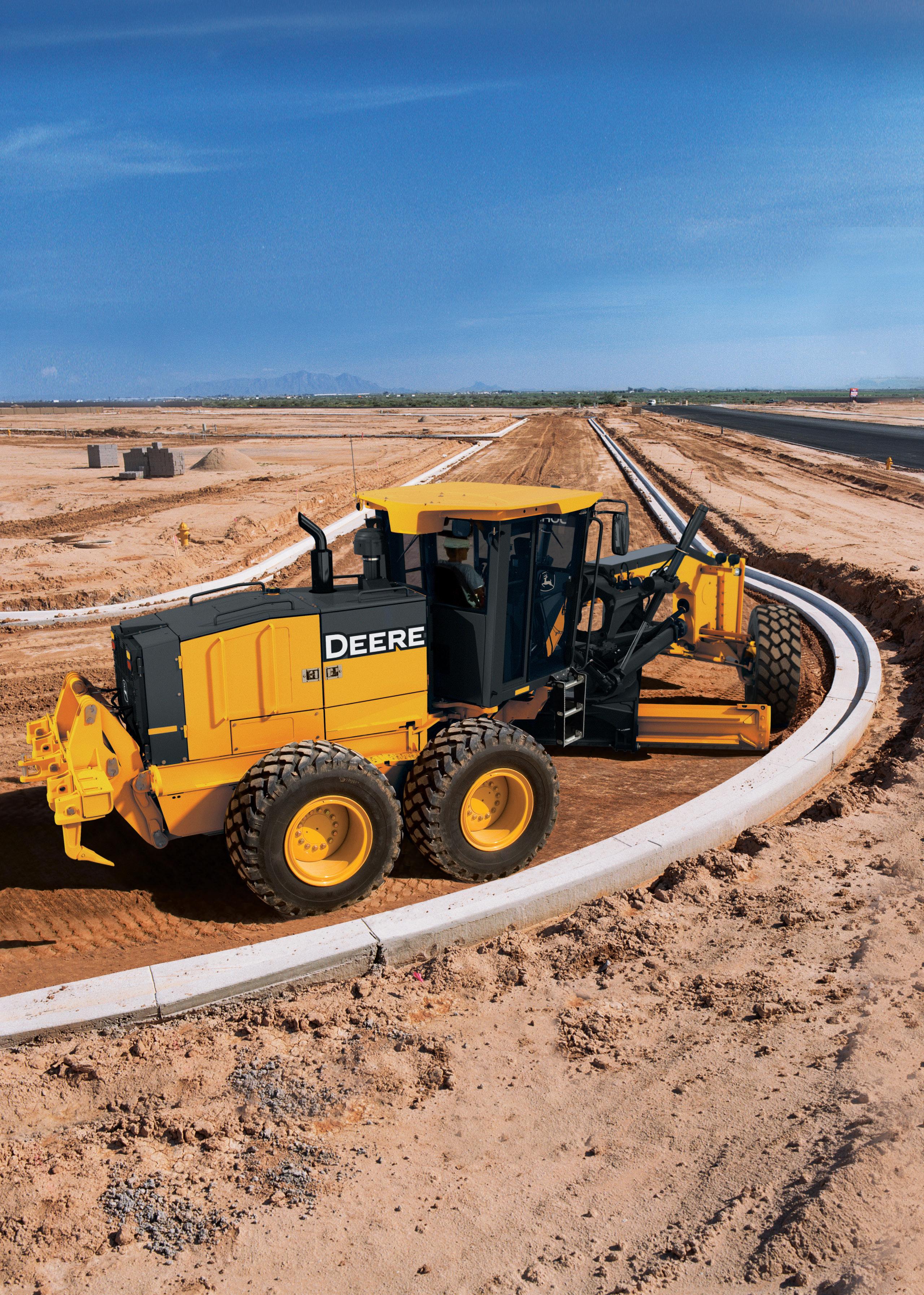
Take control with more options inspired by customers like you. John Deere G-Series Motor Graders include a host of innovative options like factoryintegrated SmartGrade™, dual-joystick controls on GP models, and precision mode on six-wheel drive machines. The smaller, more economical 620G and 622G deliver practical power and up to 10-percent fuel savings over their larger siblings. There’s an option to suit your application.
JohnDeere.com.au/ANewDay It’s a New Day and a New Deere. TRACTA_J64869_GRADERS_COUNCIL
NEW DEERE.
HOW AUSTRALIA'S MOST EXPENSIVE CITIES ARE BATTLING HOMELESSNESS IN 2022
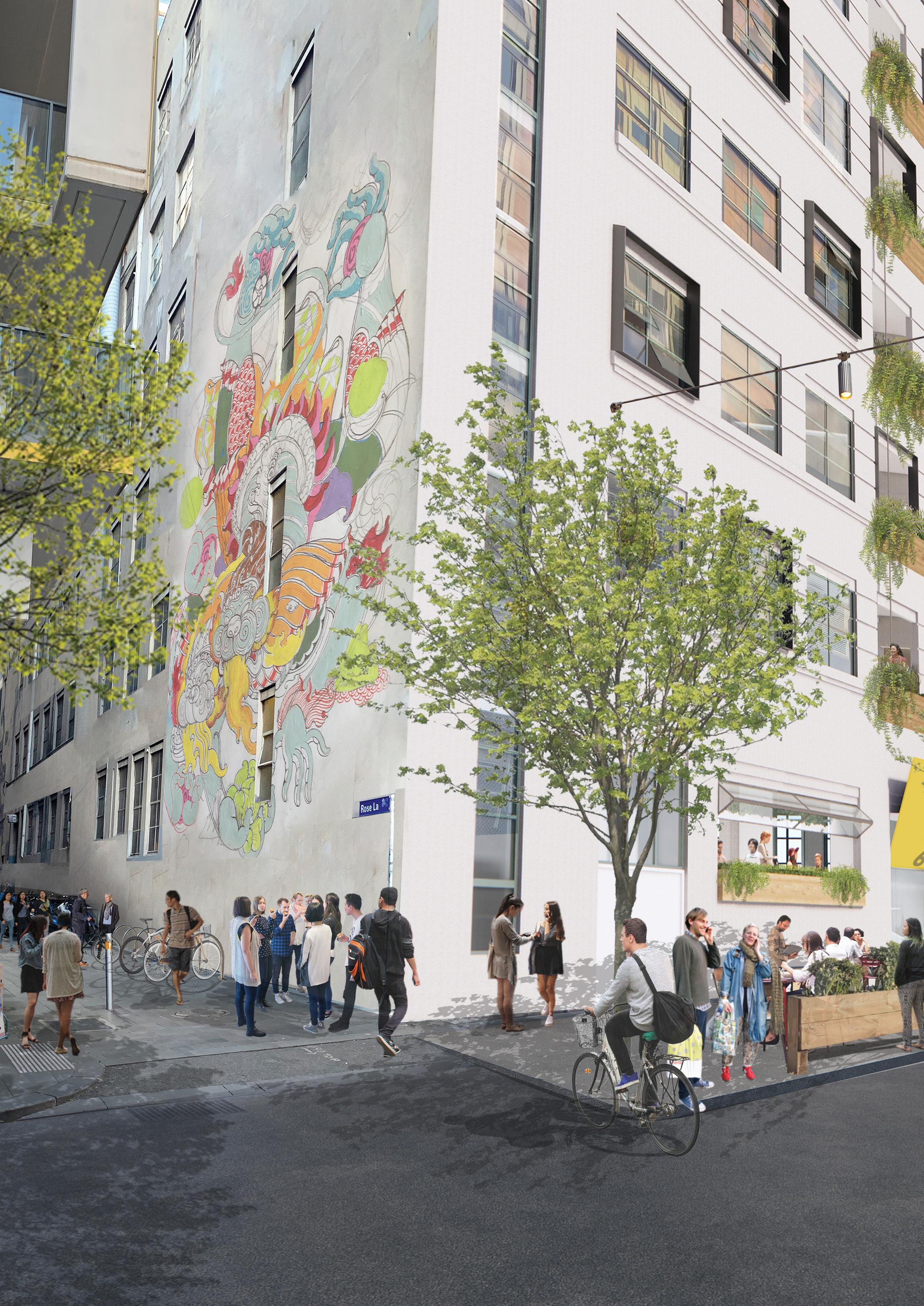 by April Shepherd, Editor, Council magazine, With contributions from City of Melbourne and City of Sydney
by April Shepherd, Editor, Council magazine, With contributions from City of Melbourne and City of Sydney
As the cost of living rises and Australia's housing prices remain some of the most expensive in the world, councils nationwide are facing a housing crisis, with more and more people of all ages and walks of life resorting to sleeping rough, as extra support available in the height of the pandemic dries up. Here Council investigates how two key CBD councils are working to curb homelessness.
30 PLANNING AND CONSTRUCTION

Australia's homelessness crisis is as prevalent as ever, despite funding and extra support during the pandemic briefly reducing the number of people presenting to homelessness services nationally.
Analysis of Australian Institute of Health and Welfare data by Homelessness Australia showed that increasing income support reduces the number of people experiencing homelessness, as seen in 2020 when the Federal Government provided additional support in the form of JobKeeper and the Coronavirus Supplement.
The analysis also showed that when the extra support diminished, the amount of people seeking homeless services increased.
COST OF LIVING RISING DRAMATICALLY
Household support going back to pre-pandemic levels is not the only contributor to Australia's housing crisis. The Australian Bureau of Statistics has reported the largest quarterly increase in household living cost indexes since September 2000, when the GST was introduced.
For capital cities Sydney and Melbourne, battling the homelessness crisis is becoming increasingly difficult, as both cities find themselves listed as some of the most expensive housing markets globally in 2022, according to Demographia's International Housing Affordability (2022 Edition) report.
Demographia’s research found these figures by median multiple (taking the median house price for a region, then dividing it by the annual median gross household income).
Sydney placed second, only beaten by Hong Kong, and Melbourne came in fifth.
The report stated that “the least affordable market is Hong Kong, with a median multiple of 23.2, followed by Sydney at 15.3, Vancouver at 13.3, San Jose at 12.6 and Melbourne at 12.1”.
The higher the ratio, the less affordable the housing market in that city is, with Demographia deeming a median multiple of 3.0 and under as ‘affordable’ and median multiple of 5.1 and over as ‘severely unaffordable’.
In a press release on 11 May 2022, Local Government NSW (LGNSW) President, Darriea Turley AM, said councils were seeing first hand the impact of rental vacancy rates at all-time lows because a significant part of the community is locked out of home ownership.
“Housing affordability is arguably the most pressing issue right now affecting communities across the state,” Cr Turley said.
As the pressure in communities builds, councils across Australia are introducing new initiatives to prevent homelessness in the communities, especially Melbourne and Sydney CBD councils – which both face unique challenges.
MELBOURNE: BUILDING SUPPORTED ACCOMMODATION
The City of Melbourne is converting an old industrial building in the CBD into supported accommodation in its Make Room project, to provide a safe place for those who are sleeping rough.
The redevelopment of 602 Little Bourke Street, a former electricity network building, will provide up to 50 studio apartments over several floors once the project is fully complete.
Accommodation will be offered via referrals from homelessness support agencies, with services designed to help people connect with support services while having a secure home.
City of Melbourne Lord Mayor, Sally Capp, said the project will provide a safe place to sleep for some of the city's most vulnerable people.
"Providing a safe and secure home will be life-changing for people who have been forced to sleep rough on our streets,"
City of Melbourne Lord Mayor Sally Capp
"Melbourne is a caring city and we know how deeply Melburnians care about making a positive difference for those currently experiencing homelessness. Residents and business owners are often distressed seeing people sleeping rough near their homes or shops, particularly during our cold winter months.”
Winter 2022 // ISSUE 3 31
PLANNING AND CONSTRUCTION
An artist's impression of the Make Room building in Melbourne’s CBD.
Image: City of Melbourne.
PROTECTING THE CITY’S MOST VULNERABLE
The City of Melbourne is providing a Council building valued at $7.45 million, and has secured more than $12.75 million for the $20 million project thanks to donations from charitable partners.
The Lord Mayor's Charitable Foundation, the Ian Potter Foundation and the Gandel Foundation have each pledged support for the project, and the City of Melbourne is in active discussions with other potential donors, supporters and partners.
Council is also partnering with the Victorian Government to deliver the bespoke accommodation, which will include housing and homelessness services, and tailored, wraparound support for residents to assist with wellbeing and the transition to long-term housing.
Unison Housing will refurbish and manage the building.
Health, Wellbeing and Belonging portfolio lead Councillor, Dr Olivia Ball, said delivering the project will change lives and help protect some of the city's most vulnerable.
"We are using a housing first approach, which means that people need to be housed before any other challenges in their lives can be effectively addressed," Cr Ball said.
"Our ultimate aim is to help people put homelessness behind them, because every Melburnian has a right to safe and secure housing.
“With some 300 people homeless in the inner city and 60 to 90 people sleeping rough on any given night, there’s an urgent need for accommodation as a step towards finding somewhere safe and secure to live long term.”
Unison Housing CEO, James King, said the organisation wants to give those sleeping rough the helping hand they need to get their lives back on track.
"We're excited to be part of this exciting project, which will reduce disadvantage and social exclusion, and deliver benefits to the entire community," Mr King said.
"When people find safe accommodation, they require less healthcare, are less likely to be victims or perpetrators of crime and are more likely to go back to study or find employment.”
HOUSING AND SUPPORT FOR RESIDENTS
The Make Room project isn’t just offering housing for those in need, but also has a 24-hour concierge service and will be home to a social enterprise on the ground floor, enabling further employment and training opportunities.
Lord Mayor's Charitable Foundation CEO, Dr Catherine Brown OAM, said the Foundation is committed to increasing the supply of affordable housing and preventing entry into homelessness in Greater Melbourne.

"The Make Room project is part of our Affordable Housing Challenge Initiative, which is demonstrating that cross-sector partnerships between philanthropy, local government, state government and not-for-profits can have great outcomes.
"We are pleased to be the philanthropic partner in the Make Room development and to be partnering with the City of Melbourne and funding Unison Housing, to provide the safe and secure housing needed to prevent homelessness.”
Ian Potter Foundation Chairman, Charles Goode AC, said the organisation is proud to support Make Room.
“The Foundation supports initiatives that address the factors that contribute to people becoming homeless, through intervention strategies that provide people experiencing homelessness; and with much-needed support to assist them to transition into longer term housing.”
Gandel Foundation CEO, Vedran Drakulic OAM, said the organisation is one of Australia's leading private family foundations, and is committed to projects that build strong, inclusive communities and empower the region’s most vulnerable people to improve their wellbeing.
"The Gandel family is proud to support the City of Melbourne's Make Room project and Unison Housing, and we are confident that this initiative will create a positive and lasting difference in the lives of so many Melburnians struggling with homelessness."
Mayor Capp said Make Room will have a real impact on the lives of many Melburnians.
“Everybody deserves a home, and this project will directly assist those in need with the difficult transition to permanent housing,’ Mayor Capp said.
“We are getting on with refurbishing 602 Little Bourke Street while we continue discussions with potential donors. I encourage corporations and charities to stand with us as we look to support some of our most vulnerable residents.”
The Make Room project will create more than 70 jobs in construction, and dozens of ongoing roles when the accommodation is open.
Works are scheduled to begin soon, with accommodation and services open by the end of 2023.
IMPROVING HOUSING ACCESSIBILITY
The City has also taken a leap forward in its quest to improve housing access and affordability, with the establishment of a new entity, Homes Melbourne.
Homes Melbourne is designed to deliver on the City of Melbourne's commitment to improve housing access and affordability.
Figures released by SGS Economics in 2019 identified there is a shortfall of 5,500 affordable homes for key workers in the City of Melbourne at present, and without action this is expected to grow to 23,200 by 2036.
The City of Melbourne’s draft Budget 2022-23 also includes $2 million to ensure rough sleepers have access to food, healthcare and other support services, in collaboration with the Salvation Army, Melbourne City Mission and Launch Housing.
Homes Melbourne will also accelerate its vital work to improve housing access and affordability across the municipality.
Cr Ball said the Council is committed to its important work to connect people to support services.
Winter 2022 // ISSUE 3 www.councilmagazine.com.au 32 PLANNING AND CONSTRUCTION
“We’re continuing to increase support for the most vulnerable members of our community, boosting access to affordable housing, and creating a sense of belonging.”
CITY OF SYDNEY: INNOVATIVE AND EVIDENCE-BASED RESPONSES
The City of Sydney is facing similar issues to Melbourne, implementing innovative, evidence-based responses to reduce homelessness in the city.
City of Sydney Lord Mayor Clover Moore said, “It’s a complex social issue that needs a whole government sector response. This is why we work closely with our partners in the NSW Government, including NSW Police, the NSW Department of Communities and Justice, and NSW Health, along with sector partners and community organisations.
"We are facing a housing and homelessness crisis in the city, with only one per cent of homes in Sydney classified as affordable and the numbers of people sleeping rough on our streets increasing.
"Affordable housing is essential infrastructure to enable workers like nurses and teachers to live close to work, and prevent our cities from becoming enclaves for the rich.
"At the height of the pandemic, we saw the government invest a huge amount in temporary accommodation to get almost every person sleeping rough into some sort of housing – so we know it can be done.
"To make the sort of impact we saw through the pandemic permanent, Sydney needs more appropriate, long-term social housing and diverse accommodation options.
"This is particularly urgent for those who don’t currently qualify for housing support, Aboriginal and Torres Strait Islander people and people with complex care needs such as brain injuries and trauma who have found themselves on the streets. We cannot have a situation where our most vulnerable residents return to the street without support."
IMPLEMENTING A DEDICATED TEAM ON THE GROUND
City of Sydney is the only council in New South Wales with a dedicated homelessness service that patrols the street daily.
Council’s homelessness unit patrols inner city streets every day, connecting people with services, offering advice, and providing those sleeping rough with essentials like water, masks and sunscreen.
The homelessness unit runs a street count twice a year to track the number of people sleeping rough in the city. For the most recent count, the team was joined by eight of the City’s homelessness advisers – volunteers with lived experience of homelessness.
Council also provides funding to specialist homelessness services, supporting young people, Indigenous Australians and Torres Strait Islander peoples.
City of Sydney implements the New South Wales Government’s Protocol for Homeless People in Public Spaces.
“The protocol helps ensure people sleeping rough are treated respectfully and appropriately, and are not discriminated against on the basis of their situation,” Mayor Moore said.
PANDEMIC SUPPORT KEPT VULNERABLE OFF THE STREETS
The Council’s latest summer street count found 225 people sleeping rough on Sydney’s inner-city streets – compared to 272 in February 2021 – and that crisis and temporary
accommodation beds were at 81 per cent occupancy, one per cent lower than at the same time in 2021.
In line with the statistics in Homelessness Australia’s report, City of Sydney also found the number of people sleeping on the street reduced during the lockdowns, when there was extra support from governments, and that the numbers have started to rise again.
“While our ability to conduct official street counts was impacted by the pandemic, reports from homelessness services suggest there were far fewer people sleeping rough during Sydney’s lockdowns,” Mayor Moore said.
“The NSW Government provided additional funding to homelessness services during the lockdown via the Together Home Program, which dramatically reduced the number of people sleeping on the streets.
“Since the lockdowns, there are more people sleeping rough without a pathway to housing due to their residency status. Currently 17 per cent of people sleeping rough in the City of Sydney are not residents.”
City of Sydney Lord Mayor Clover Moore
Council said that, while its latest street count didn’t record an increase in the number of people sleeping rough in the CBD local area, other locations (including regional areas), has shown more people sleeping on the streets than before COVID-19, which has been attributed to rental affordability and availability.
“The NSW Government’s Together Home Funding proved that these measures can have a positive impact in tackling street homelessness and should continue to be supported and funded,” Mayor Moore said.
Council said it would like to see a flexible approach to offering temporary accommodation to people sleeping rough.
“We would also like to see support extended to noncitizens wherever possible, and to see continued funding for permanent accommodation options,” Mayor Moore said.
PLANNING MORE AFFORDABLE HOUSING
Mayor Moore said the Council’s initiatives to reduce homelessness and provide more affordable housing include planning and development agreements, land rezoning and transfers, affordable housing levies and a dedicated fund to support the development of permanent affordable and diverse housing.
“We also advocate for the NSW Government to build more social and supported housing,” Mayor Moore said.
“Grants from our affordable and diverse housing fund have contributed to projects, including initiatives for both older and young people who are homeless and at risk of homelessness.”
Mayor Moore said that, while it is hard to predict, a higher cost of living will have some impact on the number of people experiencing homelessness, and that rental stress, job loss and other financial hardships can all contribute.
www.councilmagazine.com.au Winter 2022 // ISSUE 3
33 PLANNING AND CONSTRUCTION
PLANNING FOR SOCIAL CONNECTION IN AUSTRALIA'S METROPOLITAN FRINGES
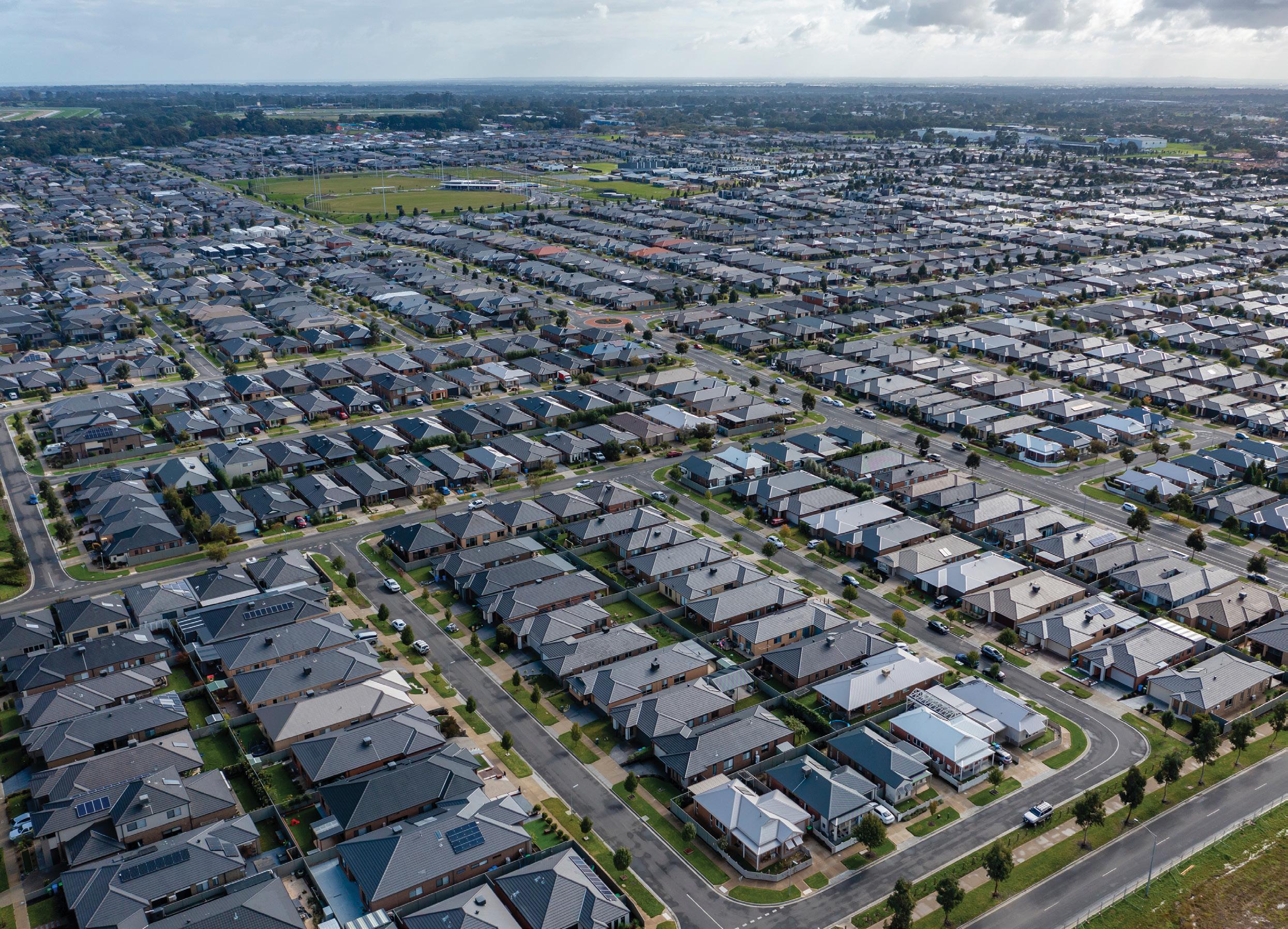 by Professor Jane Farmer, Swinburne University Social Innovation Research Institute, and Associate Professor Andrew Butt, RMIT Centre for Urban Research
by Professor Jane Farmer, Swinburne University Social Innovation Research Institute, and Associate Professor Andrew Butt, RMIT Centre for Urban Research
As the suburbs of Australia's capital cities continue to sprawl outwards, we continue to experience challenges with establishing new communities with strong social connections. A new research project is seeking to understand these issues and offer pathways for local government and other agencies to make change.
Australia’s fringe suburbs remain the places where the highest rates of population growth are occurring – effectively doing the ‘heavy lifting’ for creating new housing, new services, retailing and helping people to find belonging during a long period of high population growth nationally.
These places are the engine of new community life in Australia's cities, but the challenges associated with these new suburbs are well documented – a lack of transport options and local work, and gaps in early delivery of community and commercial services.
Increasing interest in planning for community health and wellbeing is also an important part of these new suburbs, adding in designs for physical health – such as generating primary health care hubs, outdoor ‘urban gyms’ and walking tracks – has become a mainstream consideration and selling point in many new developments.
COVID-19 revealed the value of a quality, ultra-local urban ‘health environment’ for many people, but also forced people to consider the less obvious issues that influence mental health and wellbeing, bringing a new exposure to the need for infrastructure to help generate social connection.
Outer-metropolitan suburbs are arguably at particular risk for social isolation, with lack of services and transport one issue, as is the time it takes for new people to come together to form a community.
For example, elements of neighbourhood design, the absence of local services and car dependency are each factors that appear to offer fewer opportunities for incidental meetings between neighbours.
WHAT IS A COMMUNITY, AND WHICH COMMUNITY ARE WE PLANNING FOR?
The experience of new suburbia is not usually presented as being varied – advertising for new estates often presents young families, and facilities can be aimed at an ideal type of new resident. Yet the reality is that these areas have a wide array of age groups, cultural backgrounds and day-to-day experiences with the city that they are in.
While the often cited examples of long commutes, or delays in local services, create challenges for households and communities, there are many other issues in making social connections.
Winter 2022 // ISSUE 3 www.councilmagazine.com.au
34 PLANNING AND CONSTRUCTION
The place of young adults and older residents are examples of this, especially when the development is geared to young families.
We often see new communities integrating into older established communities, with newer younger residents who are often from culturally and linguistically diverse groups, who are now neighbours, and interacting often, with older people or others ‘left behind’ in formerly rural, and sheltered, communities.
The urgency of placemaking in many fast growing fringe locations is challenged by the previous understandings of place, locality and community.
WHAT CAN SOCIAL CONNECTION LOOK LIKE?
There is considerable dispute in the literature about what social connection looks like. Is it simply connecting people for one-to-one interactions?
In our project, we understand social connection as more complex than this. Based mainly on Robin Dunbar’s extensive work combining evolutionary psychology with brain science, we understand social connection as experiencing quality in a number of domains or ‘circles’.
First, social connection involves having close connections who are good friends or family members, and second, it also involves having people who can give help if needed, in reciprocal arrangements.
Thirdly, social connection involves belonging to ‘identity groups’ – these could be around culture, interests, community, online hobbies, sports or fandom, etc.
Finally, social connection is about feeling a sense of belonging in locale and society.
BUILDING CITIES TO BE PRO-SOCIAL CONNECTION
A partnership between Australian Red Cross and researchers at Swinburne University has previously focused on an intensive search for research evidence about ‘pro-social connection infrastructure’ in order to construct guidance targeted at planners, community development staff and human services providers.
This led to identifying a whole set of design features that can be built into communities to help people feel they belong. Foundations like accessibility, choice and cultural safety, as well as a range of incidental ‘bumping’ and ‘facilitated’ spaces are significant. Additionally, important community-making activities are pro-social connections, such as problem-solving and mentoring, alongside synchronous activities like musicmaking and singing.
Environments that resonate with peoples’ backgrounds and cultures are significant for making people feel like they belong.
In new communities, social connection can be helped by services committed to supporting people to connect and having appropriately designed community infrastructure that supports social connection.
Social connection isn’t entirely something individuals and families can do for themselves, but having a pro-social connection community can be realised through design, support services and community action.
BRINGING TOGETHER URBAN PLANNING AND COMMUNITY SUPPORT IN LOCAL GOVERNMENT AND BEYOND
For local governments, bringing together different departments is important, but often difficult. Urban planners
are often keenly aware of the way design and the use of space matters in placemaking, and of the long-term nature of new development, while community service providers in local government, and their networks, are often used for addressing the needs of specific, often vulnerable, cohorts in society.
One aim of our project is to bring these ways of thinking, and framing the issues of new suburbs into better dialogue, with each realising the significance and the limits of their own policy domain in delivering connected communities.
WHAT DOES THE PROJECT AIM TO DO NEXT?
Our research project involves working with partners in local government and community sector organisations – Australian Red Cross and Neami, a national mental health and wellbeing services provider, to understand how social connection occurs in three communities on the metropolitan fringe of Melbourne.
It builds on examples of this in research, policy and practice, but aims to bring together new techniques to understand how people interact in place and online, and what the experience and barriers to connection look like in different types of neighbourhoods. Over the next year we will be working with communities directly, with service providers and local government.
In the first year we will be conducting in-depth and repeat ‘go-along’ sessions with around 60 people from a wide range of backgrounds, including those experiencing social isolation, those who have forged new connections in communities over time and those active in supporting others in their communities.
As well as exploring physical aspects of communities, we are interested in peoples’ experiences of connecting with their communities online, especially through ‘blended’ or ‘hybrid’ place-related experiences, some of which may have been particularly activated during the pandemic.
In parallel, we have mapped existing social connection infrastructure across these suburbs, such as parks, transport routes and online place-related services. We are keen to extend this mapping, informed by what we find out about social connection places and spaces from ‘go along’ sessions with community members.
Along with councils and other service staff, we will be sharing our findings about local peoples’ social connection activities, places and barriers and seeking to understand if these match practitioners' perspectives and what surprises are revealed.
Subsequently, we will build on existing tools and methods used by councils and services, using the evidence we have found to codesign enhancements; for example, tools to plan for social connection for particular groups, ways for measuring social connections and their impacts, structure planning design principles and guidance for generating digital placerelated services.
Given its complexity, it is obvious why social connection can be difficult to form – it takes a long time and firm commitment from people to make long-standing connections. However, in return for these social connections, there are proven mental and physical health benefits, as well as confidence in help from others and a sense of belonging.
This project is supported by the Australia Research Council and partners at the City of Casey, City of Whittlesea, City of Wyndham, Australian Red Cross, Neami National and Today Design.
www.councilmagazine.com.au Winter 2022 // ISSUE 3
35 PLANNING AND CONSTRUCTION

IMPROVING THE QUALITY OF LIFE FOR REMOTE HOMELAND COMMUNITIES
by Bethany O’Sullivan, Roper Gulf Regional Council
Roper Gulf Regional Council is a remote local government located in the Northern Territory, overseeing a land mass nearly three times the size of Tasmania and home to eleven remote outstations (or homelands), three of which will be upgraded with new solar powered infrastructure and water tanks, thanks to support from Council and funding from the National Indigenous Australians Agency (NIAA).
Those who have not lived in the Northern Territory before may have never heard of a remote outstation or be able to imagine what one would look like.
An outstation, or homeland, is a small, remote satellite community of a larger Indigenous Australian community, composed of Indigenous people who have chosen to take up residence on that land due to its cultural and spiritual significance.
Outstations are rich in culture and provide significant value to Indigenous Australian life in the region and the Northern Territory as a whole.
These remote communities are not without their challenges, and that’s why the Roper Gulf Regional Council, in partnership with the Northern Land Council, scoped the work that needed to be done at these outstations, and applied for funding from the National Indigenous Australians Agency (NIAA) through its Aboriginal Benefit Account (ABA) Homelands Project.
Their application was successful, with the region being awarded a total of $1,123,583 through the Homelands Project to go towards improving the living conditions of these remote outstations.
Roper Gulf Regional Council Chief Executive Officer, Marc Gardner, outlined the importance of outstations as part of Council’s operations.
“These places are very significant for people to maintain cultural ties to their land and home, and important for maintaining a good quality of life,” Mr Gardner said.
“Residents value an ability to live, work and play in areas where their families have lived and belonged to for generations.”
LIFE IN THE OUTSTATIONS
Within the Roper Gulf region, there are approximately 300 people living across the eleven outstations that the Council services, with the largest outstation population being approximately 60 people.
These figures are approximate due to the transient nature of these locations and the seasonal variations that occur due to wet weather restricted access. That said, it is not only extreme weather conditions that bring challenges to the residents of outstations.
The Roper Gulf Regional Council local government area spans 201,000km2 –almost three times the size of Tasmania
– making its operational footprint one of the largest in the Northern Territory.
Within this area are just 16 remote townships and communities, and eleven remote outstations, with a total population of 7,458.
The remoteness of the area means that common living benefits that are afforded to the rest of Australia are not available for people that live in these locations.
Access to electricity from the main power grid is not available to outstations, thus requiring residents to run critical electrical appliances with power sourced from diesel-powered electrical generators. There can be anywhere between five and fifteen houses running off one generator.
Fresh water is sometimes sourced from nearby springs where bore water or town water cannot be sourced, however the water being pumped from the spring is at risk of contamination, or can dry up due to the lack of rain during the dry season.
Spring water is often pumped through a diesel-powered generator as well. If the generator breaks down, residents may have to walk for kilometres in extreme heat to the nearest boundary fence where the spring is located, to
Winter 2022 // ISSUE 3 www.councilmagazine.com.au
36 PLANNING AND CONSTRUCTION
Jodetluk outstation, which will be receiving new solar street lights as part of the Homeland Project.
source fresh water for drinking, cooking and bathing.
Furthermore, running a diesel engine generator has substantial financial and environmental costs for those who reside in outstations.
These challenges are the reason the Homelands Project is crucial for the community, and essential to improve the quality of life for those who reside in the outstations.
Roper Gulf Regional Council has been granted funding through the Homelands Project and will use these funds to carry out works in Kewulyi, Mount Catt and Jodetluk – three remote outstations that sit within the Roper Gulf region.
The projects for each outstation and the benefits are as follows:
KEWULYI HOMELAND:
∞ Supply and install a new solar hybrid system
∞ Supply and install a water tank
MOUNT CATT HOMELAND:
∞ Supply and install a new solar hybrid system
∞ Drill a new bore and install a water tank
JODETLUK HOMELAND
∞ Supply and install solar street lights
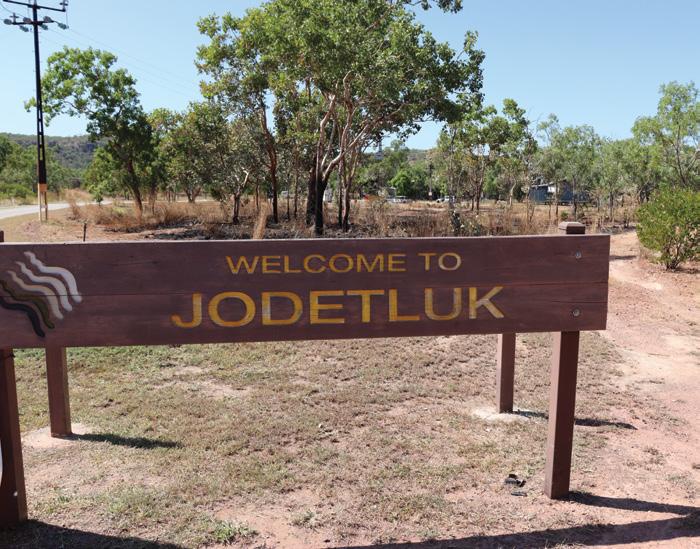
PRACTICAL SOLUTIONS FOR THE REGION
The installation of a new solar hybrid system in Kewulyi and Mount Catt will mean that residents no longer need to rely on electricity supplied by a diesel-powered generator, avoiding the risk of the generator breaking down or being overloaded.
Moving to a solar hybrid system will also reduce the costs associated with running a diesel-powered generator, making more funding available for other projects to be carried out in the community.
In addition to the installation of the solar hybrid systems, water tanks will also be supplied and installed at both Kewulyi and Mount Catt.
The water at Kewulyi is currently being pumped from a nearby spring, which often dries up in dry season weather conditions. When the spring dries up, the water level becomes low and the quality of the water decreases, sometimes producing brown, dirty water. The Northern Territory’s dry season runs from May to October, potentially leaving a whole community without clean water, or water altogether, for half the year.
Similarly to Kewulyi, the water at Mount Catt is also pumped from a local spring at the boundary of the outstation. Whilst this spring is permanent and has year round access to water, it requires a diesel engine pump to transport water to the houses.
This pump needs to be started several times a day at the spring, however in contrast to Kewulyi, which has issues in the dry season, the wet season conditions make the track to the Mount Catt spring too wet for vehicle access, and residents may be required to walk to the spring for clean water.
The installation of new water tanks will allow the outstations to store fresh water next to the dwellings for all-year-round access to high quality water supplies. The water tanks will be raised on stands to increase the water pressure running into the community reticulation – to ensure all houses can run water simultaneously.
The project in Jodetluk will involve installing two solar street lights to provide lighting to unlit areas where residents walk and children play. Community consultation will occur with homeland residents to select the best location for the street lights.
The purpose of this project, in addition to increasing the energy efficiency of the homeland, is to improve community safety.
This project is part of a Crime Prevention Through Environmental Design (CPTED) strategy which lobbies for appropriate technologies and techniques, such as LD solar lights, as a crime prevention method. The solar lights will benefit the community by decreasing black spots and enabling passive surveillance of the streets and houses.
Not only that, the street lights will deter buffalos, snakes and other wild animals from wandering through the homeland dwellings – another unique problem the Roper Gulf region faces.
BUILDING A SUSTAINABLE, VIBRANT REGION FOR ALL
These projects carried out as a result of the Aboriginal Benefit Account Homelands Project funding are instrumental to improving the overall quality of life of local people, and that of the community as a whole.
Roper Gulf Regional Council is grateful to the Federal Government for providing funding that assists Council in achieving its vision of being sustainable, viable and vibrant.
Mr Gardner said that, “Council looks forward to supporting and improving the quality of life for everyone that lives at a homeland or an outstation and understands their value to residents in our Council area.
“It’s for these reasons that our Council is behind providing a range of quality outstation and homelands services such as housing, water provision and waste solutions.”
Council would also like to thank the Northern Territory Government’s Department of the Chief Minister and Cabinet, and the Northern Land Council, who it works in partnership with to improve the living conditions for outstations in the local government area.

37 PLANNING AND CONSTRUCTION
Entrance to Jodetluk outstation.
Outstations provide significant value to Indigenous Australian life in the Northern Territory.
FLEXIBLE PIPELINES FOR DIFFICULT ENVIRONMENTAL CONDITIONS
As extreme weather and flooding becomes more commonplace, especially in Australia, investing in flexible and sturdy pipelines that can easily transport water over considerable distances is a must have.
Angus Flexible Pipelines
Australia offers a range of custom-engineered equipment to suit particular flood situation applications, creating flexible pipelines that are designed for ease of use when deploying, retrieving, transporting and storing in difficult environmental conditions.

WHY FLEXIBLE PIPELINES ARE AN INVALUABLE INVESTMENT
Today, flooding appears to be an ever-increasing factor in large parts of the world. The resultant impact can be devastating on life and property, so having the ability to quickly, and effectively, move large volumes of water in response to such a disaster is becoming more and more essential.
Angus Flexible Pipelines Australia has a Flood Relief package that is a fully

integrated system capable of pumping large volumes of water over considerable distances – away from infrastructures and residential areas.
Utilising a single line of Angus 12” Super Aquaduct, this system can pump up to 19,000L of water over a distance of 8km.
A typical system comprises several pieces of equipment, including satellite and boosting pumping systems, hose deployment and retrieval systems, XLD lay flat hose technologies and accessories.
COLLECTING HEADS AND MANIFOLDS COLLECTING HEADS
Custom Collecting Heads can be used to flow feed water from multiple inlets to a larger single source outlet – typically 250/300mm – to optimise flow over long distances and minimise pressure losses – especially when using Angus Super Aquaduct hose.
MANIFOLDS
Custom Spider Manifolds can be used to control water flow and distribution, allowing connectivity to smaller diameter hose lines –typically using Angus Armourline hoses via Gated valves with Storz or Instantaneous connections.
Inlets can be 200, 250, 300mm –either Storz, Twin Star or Victaulic connections for use with Angus Super Aquaduct hose.
Unvalved large Wye Manifold/Dividing breechings to direct water flow from a single source to smaller sources
– typically from 1 x 300mm to 2 x 200mm – ideal for use with Angus Super Aquaduct hoses when transporting water over distance. Connections can be Storz, Twin Star, Victaulic or other multiple configurations.
“Mo –Man” Wheeled Hose Hydrant Trailer can also be used for rapid easy deployment with 6 gated valves – either storz or any other connections, to direct, control water flow and distribution. Throughput either 250 or 300mm connections with valved options.
HOSE DEPLOYMENT AND RETRIEVAL EQUIPMENT
Angus Flexible Pipelines Australia supply single or quadruple hose reelers for easy deployment and retrieval of large diameter hoses such as Angus Super Aquaduct.
Each reel will house 600m of 300mm hose, so for a smooth, easy, efficient use, this can be trailer or skid mounted with a hydraulic control system.
SYSTEM CONNECTIONS
Typically used to connect the systems normal pipe-to-pipe connections, pipe to hydrant connections, pipe to pump connections or pipe to water supply connections.
STOCK AVAILABILITY
Angus Flexible Pipelines Australia has available stock for immediate delivery across Australia, featuring its full range of flexible pipelines for flood risk; the Super Aquaduct, Flowmaster and Wellmaster.
38 Winter 2022 // ISSUE 3 www.councilmagazine.com.au
PLANNING AND CONSTRUCTION // SPONSORED EDITORIAL
More information is available by calling 07 3256 7624, emailing sales.australia@angusfire.com or visiting www.angusflexiblepipelines.com.au
Angus Flexible Pipelines Super Aquaduct 2.
South Australia flood relief, using flexible pipelines.

BUILDING STRONGER COMMUNITIES
BY REINVENTING COMMUNITY FACILITIES
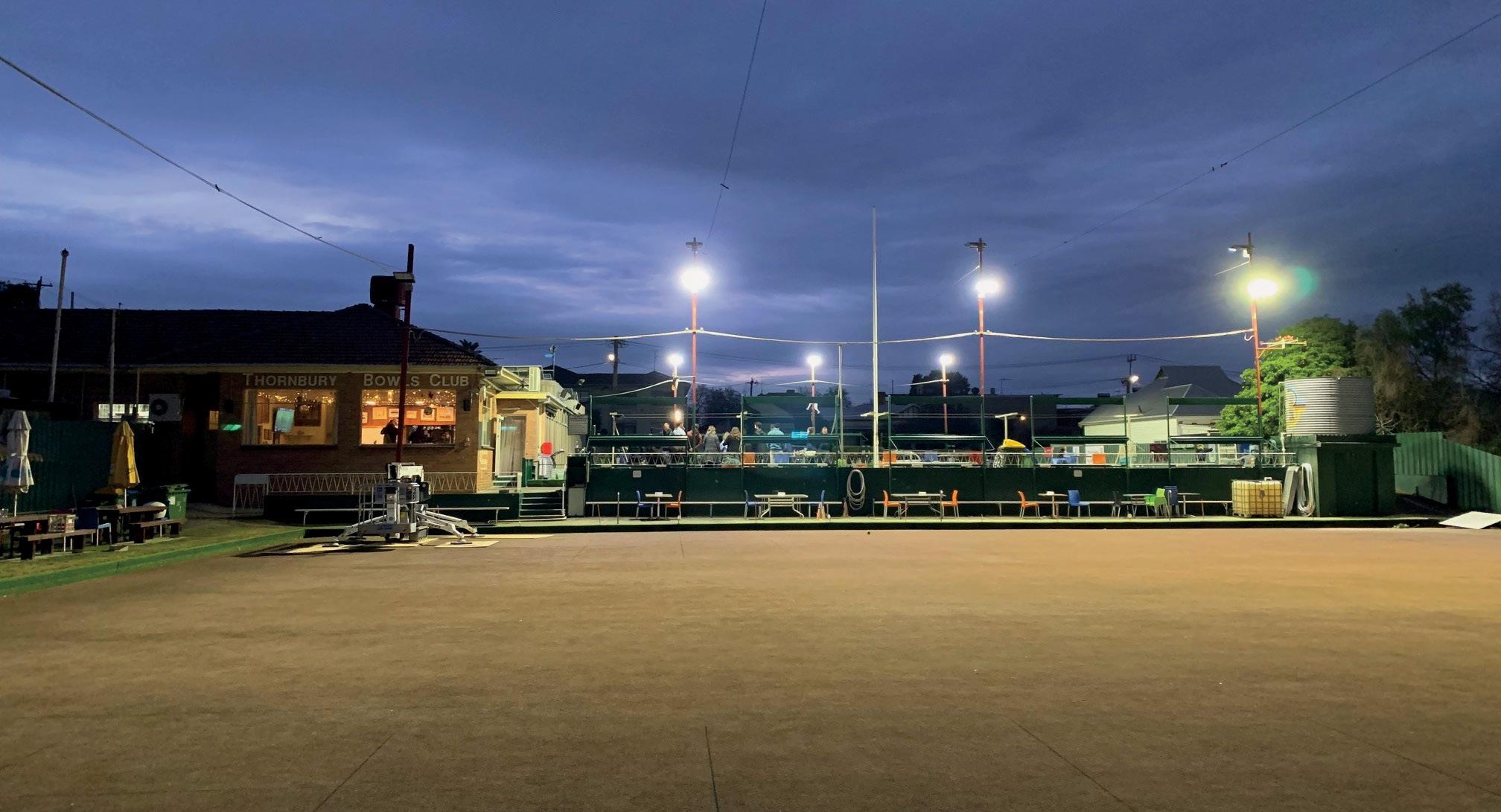
As communities re-discover their local sporting facilities post-pandemic, many clubs are looking for ways to appeal to a larger audience. Legacy Lighting is helping these clubs freshen up and upgrade their outdoor spaces, ready for the crowds.
Many facilities run by clubs, for example local bowls clubs, had a period of glory and have slipped into disrepair as management changed, social economics evolved or a variety of other reasons.
Many of the facilities are in dire need of an upgrade and repair, but there aren’t sufficient funds, so membership numbers decline as people move to better, newer clubs and revenues continue to drop. This doom-loop is well-known and afflicts most clubs at some stage.
Recently Thornbury Bowls Club in Melbourne was stuck in the same loop, until it came under new management and began considering ways to improve the experience for locals. It had plenty of indoor and outdoor space, but member numbers were dwindling and funds were low.
Slowly the club started minor internal improvements and attracted other groups to use the facility as a meeting place and club room. As that revenue filtered through, more improvements were made, which attracted more members from other clubs.
Improving the lighting was the next step; opening up the opportunity for night practices, summer evening parties and broader events.
A game of bowls was still part of the mix, but the club was now much more than just bowls, going from strength to strength and steadily gaining popularity.
The major winners in this upgrade have definitely been the local community of Thornbury, now having a facility that’s open most nights for a range of activities.
Allowing residents to meet new people, join new groups and build a stronger community; which is what a local club is all about.
5 STEP PLAN TO INCREASING MEMBERSHIP NUMBERS AT YOUR CLUB
A simple five step process has been used by many clubs, but is often overlooked in the gradual erosion of membership and revenues.
1. ACCEPTANCE
Is the management and leadership on board with the need to change? Without a will to change, all obstacles will be regarded as mountains and nothing will happen.
2. ASSESS
Where is the club at with membership numbers and revenue, and what has been the past 24 month trend? Be realistic – this is a critical catalyst for change.
3. INNOVATE
This is where the old thinking has to be changed. How can the club better utilise the facilities? Is there under-utilised space that can be made profitable? Can spare rooms be used for other clubs and activities, and can the facility appeal to a broader base? Rethinking the model will involve getting ideas from all age groups. If there is only one age group at the club, get locals to voice an opinion as to what they would like to see happening.
4. PLAN
Take these ideas and capitalise on the opportunity. Grants may be available, but don’t depend on them; and have a five year plan of what to do and how to achieve it. This is where marketing and finance members need to work together to make the numbers work.
5. ACTION
This is where the team ensures the plan is actioned, answerable to board members, who understand the process and plan.
There are numerous case studies where this process has changed the fortunes of a club within two years. Having a vision for what can be achieved is vital, along with a strong resolve to make it happen, and great resources to give the club the facelift it deserves.
Winter 2022 // ISSUE 3 www.councilmagazine.com.au 40
PLANNING AND CONSTRUCTION // SPONSORED EDITORIAL
Legacy Sport Lighting creates solutions for sports lighting, offering a full-service package that includes assessment, design, supply, installation, and maintenance. Need help with a sport lighting project? Go to https://legacysportlighting.com/
Thornbury Bowls Club in Melbourne lit up by Legacy Lighting.
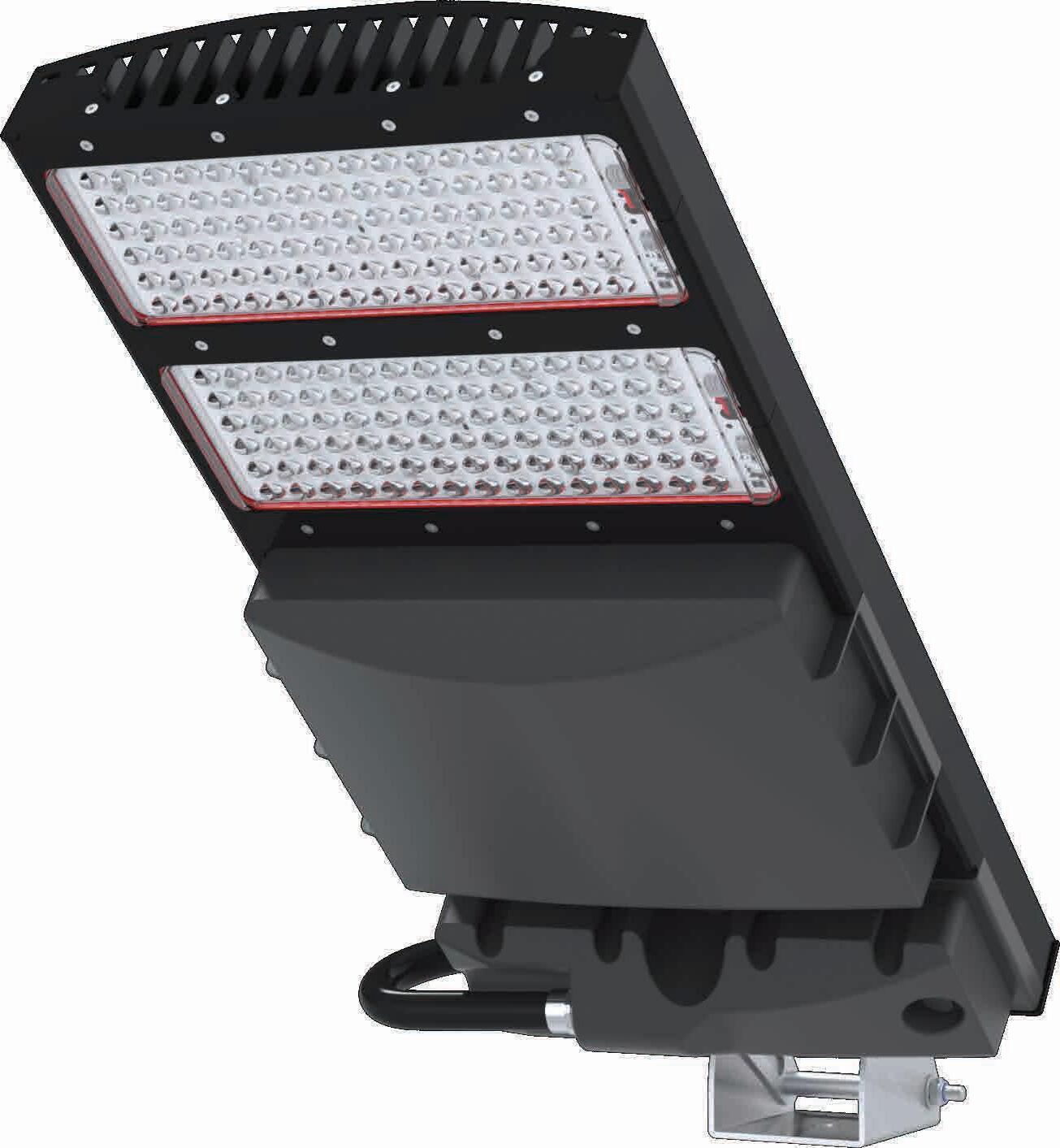

AUSTRALIAN MADE LED SPORT LIGHTING www.legacysportlighting.com
COMBAT FLOODING WITH SPECIALISED INFRASTRUCTURE
As Australia’s weather becomes increasingly extreme and heavy rainfall and flooding becomes more commonplace, the time to invest and protect against flood damage is now. Integrate flood protection seamlessly into infrastructure with AWMA.
AWMA Water Control Solutions is an Australian turn-key manufacturer of specialised water control infrastructure, including flood barriers, water control gates and self-cleaning screens.
Based in regional Victoria, AWMA has established specialist design, manufacturing and installation teams with the capacity and experience to service domestic and international markets.
CASE STUDY: FLOOD BARRIERS IN ACTION
The Ballarat GovHub, a new Victorian Government office located in the heart of the city, accommodates 1,000 government employees and features a multi-level basement car park with approximately 220 car spaces.
The location of GovHub is prone to overland flooding during heavy rain events, especially the basement carpark, so AWMA was engaged to design, construct and install a flood barrier from the FloodFree range, that would automatically deploy without the need for external power.
The self-actuating barrier can automatically deploy via floatation and integrates into existing infrastructure seamlessly.
Should floodwaters rise to a predetermined height, an alarm will sound and the barrier will automatically rise to prevent water from entering the basement car park. The flood barrier continues to rise with increasing floodwater depth, to protect the entrance from waters up to the nominated flood height.
“A strip drain was inserted into the driveway at the basement entrance to intercept water overflows,” AWMA’s Peter Ebenwaldner said.
“Water drains into a pit which, if it fills to capacity, floats the flood barrier into position to prevent water ingress flooding the basement.”
The 7.8m wide barrier was constructed to raise up to 800mm high, based on the ‘one- in-100-year flood’ level predicted, which would produce a water depth of 500mm at the barrier, leaving 300mm of freeboard.
“This type of calculation is made on every project we undertake, which translates into every AWMA product being individually designed and manufactured to suit the characteristics of the site and expected flood water such as flow, debris and height,” Mr Ebenwaldner said.
The GovHub building has a suspended slab in the driveway so the flood barrier was custom-designed and manufactured to be installed within a reinforced pocket recess, making it virtually invisible when not deployed.
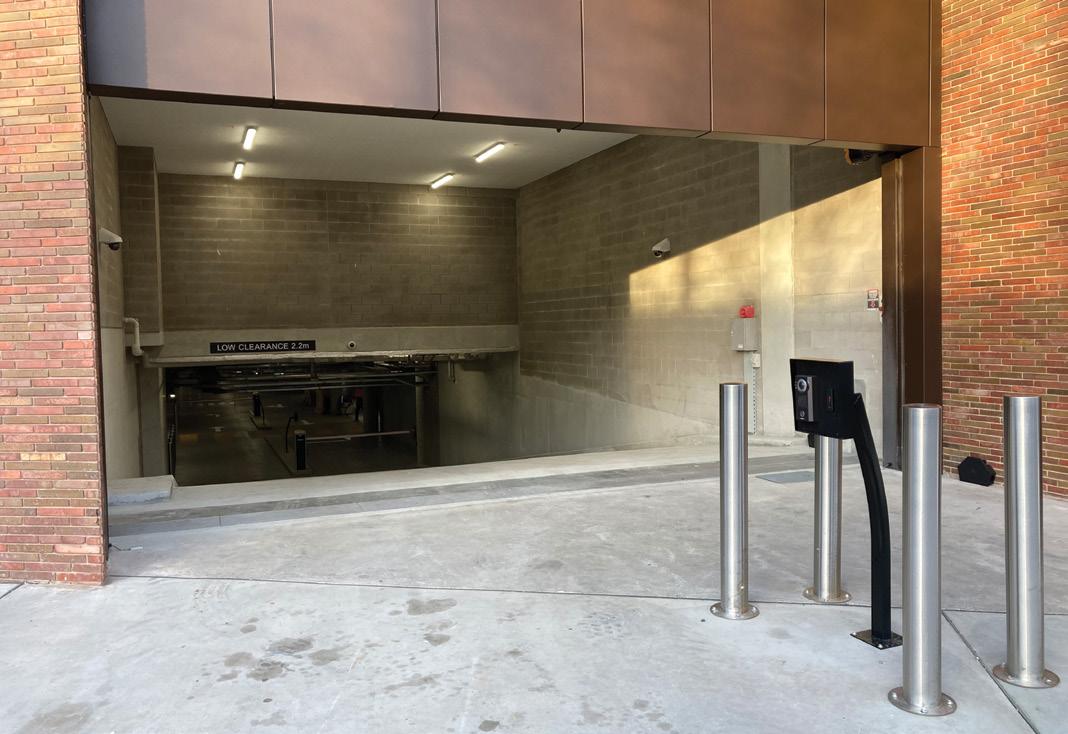
The Flood Barrier, when not deployed, integrates seamlessly into existing infrastructure.

AWMA’s FloodFree barriers offer a range of products including options for manual, powered and passive (buoyant) flood protection.
AWMA’s world class flood barriers protect many commercial office buildings and high-end apartment blocks across Australia, New Zealand and South East Asia.
To learn more about AWMA Water Control Solutions, go to: https://www.awmawatercontrol.com.au/ or for more information on AWMA’s FloodFree range of Barriers, go to: https://www.floodfree.com.au/
Winter 2022 // ISSUE 3 www.councilmagazine.com.au
42 PLANNING AND CONSTRUCTION // SPONSORED EDITORIAL
AWMA Flood Barrier deployed in the Ballarat GovHub basement carpark.
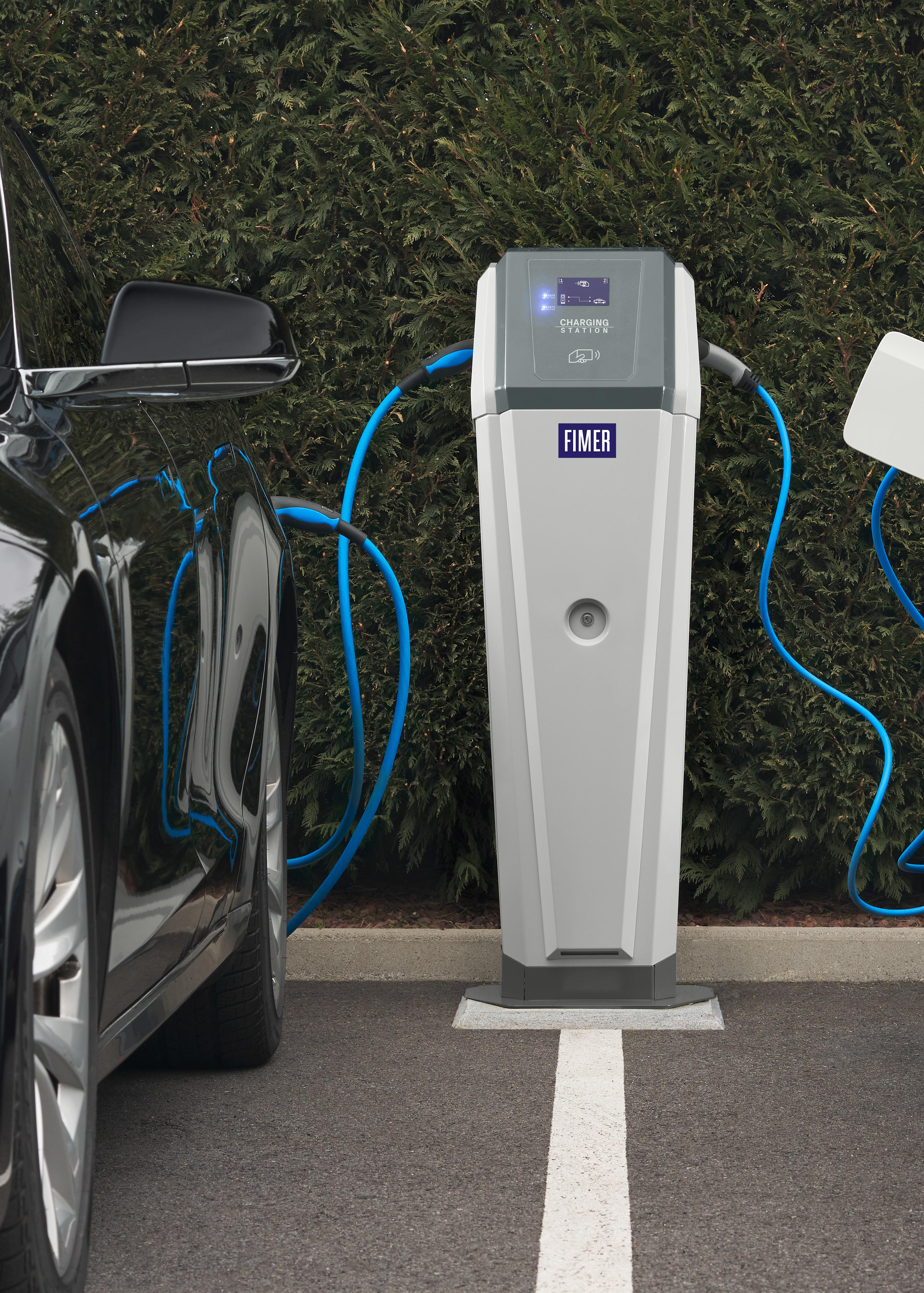
Let the energy drive you with FIMER’s charging solutions
Since 2017, we have supplied more than 54,000 charging stations around the world and partnered with the main players in the industry. We have developed AC and DC charging platforms designed to meet the diverse needs of users, who are seeking solutions for private, public and commercial use.
Our FIMER FLEXA AC Wallbox, FIMER FLEXA AC Station and FIMER ELECTRA (Fast) DC Station, are all easy to install and will provide an efficient, reliable and safe charge every time.
Learn more: fimer.com/charging-electric-vehicles
THE LASTING SUPPORT
LOCAL SUPPLIERS PROVIDE TO COUNCILS
Local councils rely on having the best equipment ready and available quickly, to better serve their communities and remedy challenges that arise with ease. That's why working with brands that can provide support with purchasing equipment, as well as offering maintenance services across the country, is crucial for councils to keep communities moving.
Engaging with local suppliers that have quick and easy access to water and wastewater equipment is critical for local governments to maintain their community’s quality of life.
The importance of such suppliers became apparent in late 2021 when COVID-19 struck down many of Australia's freight and supply workers – leaving heavy delays on many products.
SECA: PROVIDING RAPID, RELIABLE SERVICE
SECA is Australia’s leading supplier of equipment for the cleaning, testing, inspection and rehabilitation of pipes, sewers and drains. SECA supplies state-of-the-art pipeline camera technology and highly skilled maintenance services throughout Australia.
SECA boasts the largest and most qualified service team in the Australian industry, with over $2 million in spare parts in-house and specialist software from the manufacturer to help support technicians to service equipment to supplier standards.
EASY ACCESS EQUIPMENT FOR EVERY COMMUNITY
With a multitude of pipe inspection camera options available, councils are able to find their perfect inspection solution for pipe diameters ranging from 100 to 2000mm.
The six main options provided by SECA are:
∞ Miniflex – ultra flexible mini camera for curving pipes
Agilos – powerful and manoeuvrable with high
∞ Quickview Air HD – the fastest way to view inside manholes, controllable via mobile app
∞ CleverScan – rapid high resolution, fully automated manhole inspection
∞ Rovion – tractor driven inspection pan and tilt
iPek Rovion CCTV Inspection Systems are the most popular option for councils due to the user-friendly, highly compatible and robust design. The multiple camera options include axial, pan and tilt, fisheye lens and a shaft inspection camera with a rotation unit – allowing for use across a plethora of situations. The system has multiple options for control panels and features a modular design enabled to adapt for future growth and expansion.
SECA’s Cleverscan and Rovion systems are supported with WinCan reporting software and are able to inspect all types of pipes to WSA and NZPIM standard.
REMOVING LONG TRANSPORT WAITING TIMES
Councils working with SECA have direct access to equipment, cutting out long waiting times due to slow transportation and shipping, which have been made worse since the pandemic severely reduced the amount of transport employees able to work.
With SECA’s large, stocked warehouses across the country, councils will be able to place orders and have a smaller wait time compared to international suppliers.
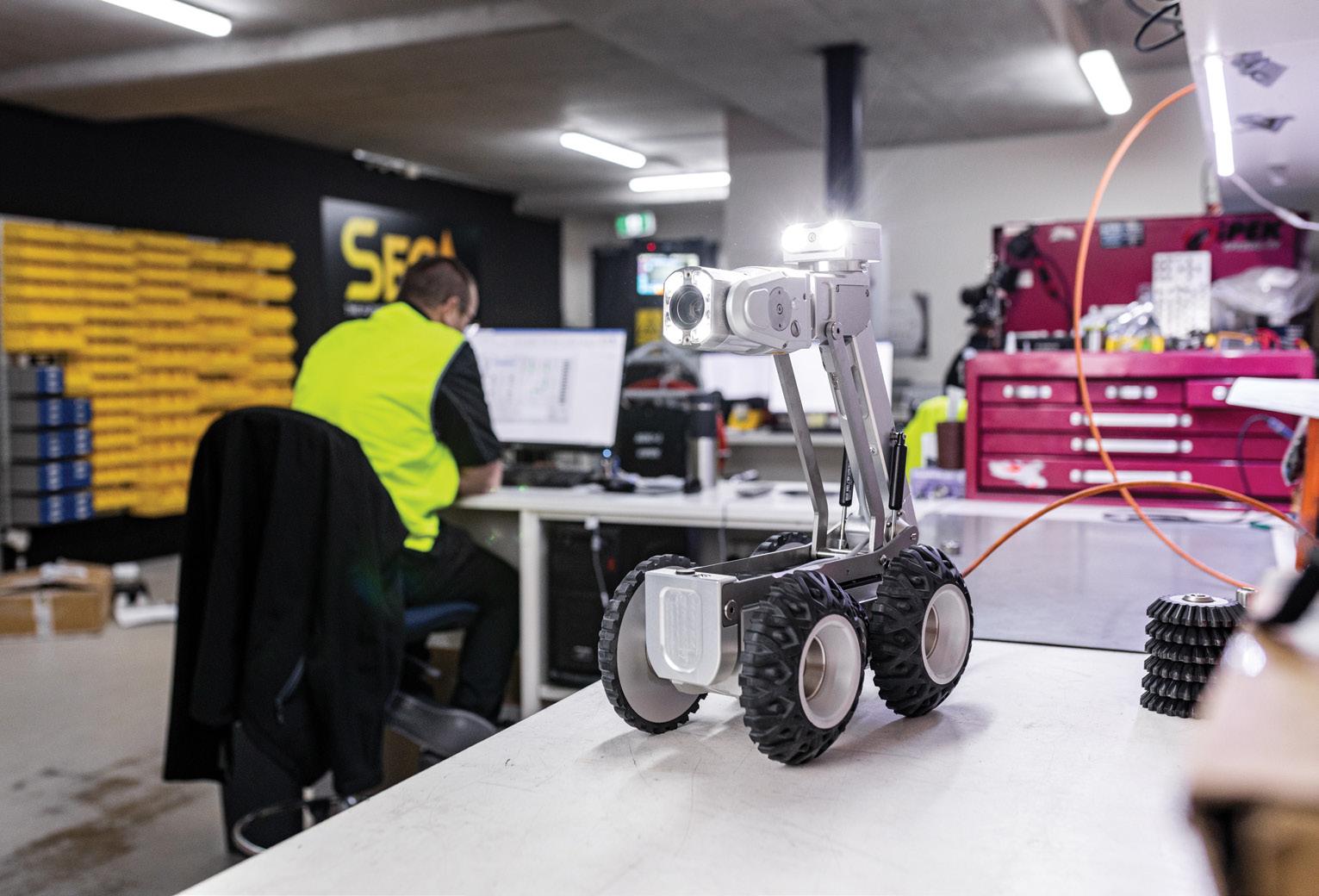
GET THE MOST OUT OF THE EQUIPMENT
SECA’s Aglios and Rovion camera equipment is fully supported by their European factory-trained technicians who are based out of Sydney, Melbourne and Brisbane, with contractors in Auckland and Christchurch.
For the inspection systems that use WinCan, councils can further benefit from SECA’s WinCan support and training services.
SECA has built its own demonstration, testing and training facility in its Chipping Norton warehouse and has commenced nationally recognised CCTV courses. The facility provides a space for product demonstrations where customers can see any equipment in action using an indoor, fully working pipe and drainage system, complete with manholes.
Winter 2022 // ISSUE 3 www.councilmagazine.com.au
44 PLANNING AND CONSTRUCTION // SPONSORED EDITORIAL
For more information on how SECA can assist your local government with a full range of water asset management solutions, head to www.seca.com.au
The iPek Rovion CCTV Inspection System.

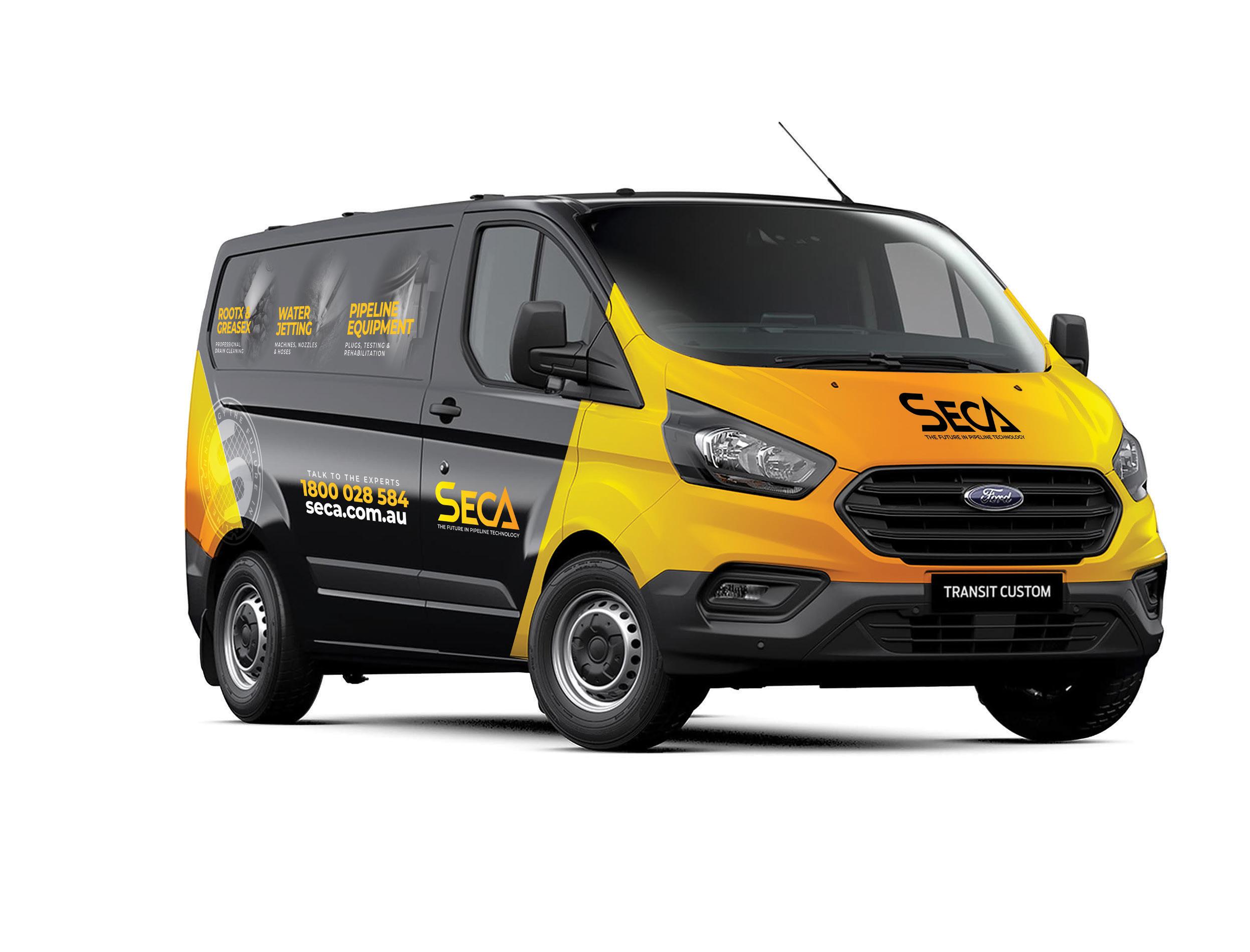
Pipeline inspection equipment & WinCan Software sales and training Large team of CCTV camera technicians located across the east coast states providing faster solutions to maximise return on investment.


After sales Training and support including Nationally Recognised CCTV Courses (Training Provided by Asset Training RTO No. 91255)
Technicians have a combined 60 years experience and undergo training and development to ensure techs are up to date with the latest software and repair procedure.
Exclusive software from manufacturer to allow techs to quickly diagnose any problem as quickly as possible.
We aim to reduce your down times of between 48-72 hours with the vast majority of parts on hand.
45 www.councilmagazine.com.au Winter 2022 // ISSUE 3 Talk to the experts 1800 028 584 or visit us online seca.com.au
you,
our
YOUR PARTNERS IN PRODUCTIVITY
To find a SECA workshop near
visit
website seca.com.au
WARRANTY •LIMITED WARRANTY
SERVICE • QLD NSW • VIC • CERTIFIED •SECA G U ARANTEED •
•
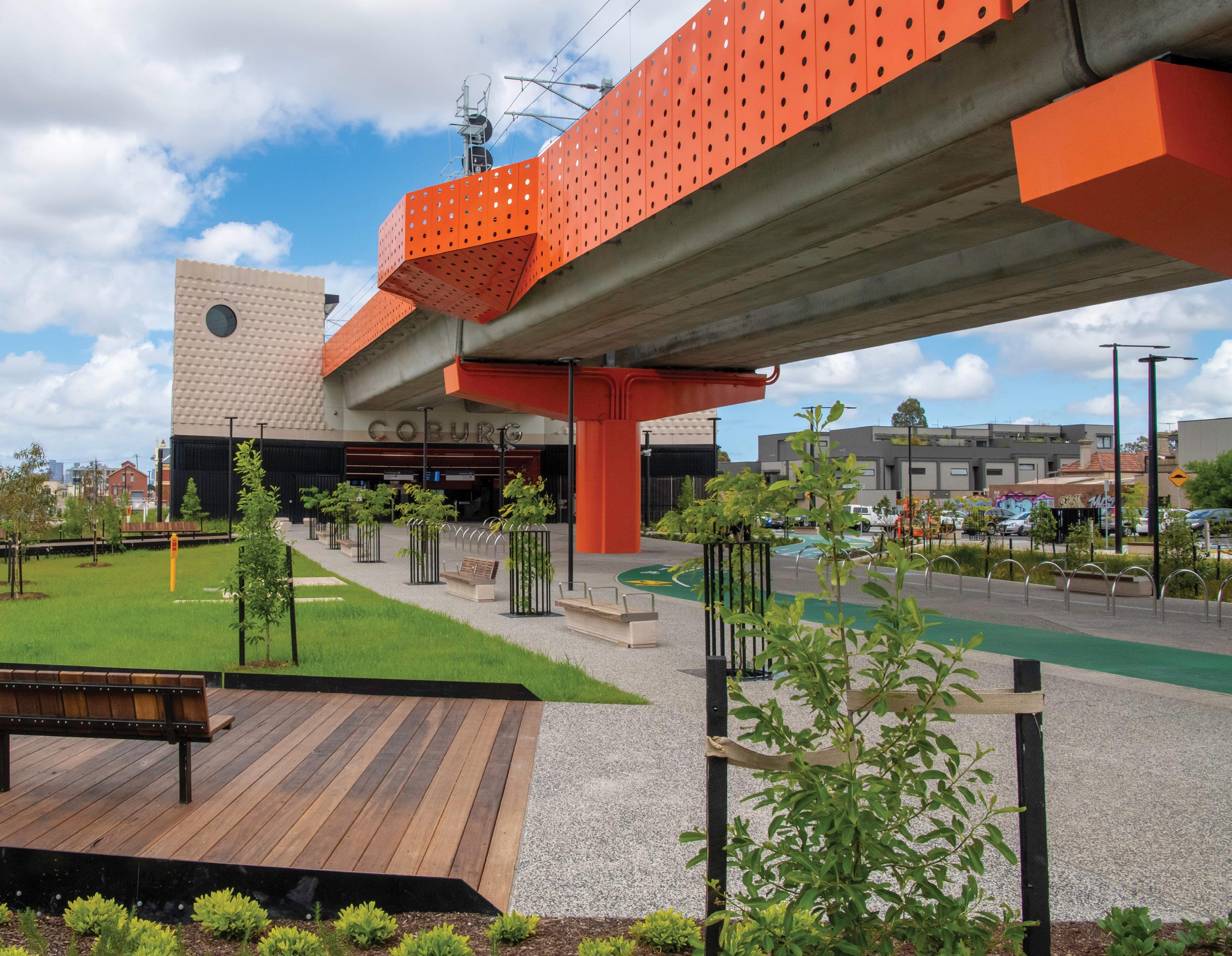
VICTORIA’S BIG BUILD
WORKING WITH LOCAL COUNCILS TO CREATE ACCESSIBLE COMMUNITIES
By April Shepherd, Editor, Council magazine
Victoria’s Big Build Level Crossing Removal Projects are transforming the wider Melbourne community, with the project team working with local governments such as Moreland City Council to champion mobility and create a more accessible community.
Victoria’s Big Build is a collection of road and rail projects being undertaken in Melbourne by the Victorian Government, in collaboration with local councils, to make the region’s transport more accessible and mobile, and to cater for the state’s rising population.
As a part of the Big Build, the Victorian Government is removing 85 dangerous and congested level crossings from around the city, with all set to be removed by 2025 and 60 already gone.
Level crossings are where cars, pedestrians and trains intercept, causing traffic congestion, accidents and unstable pathways.
The 60th level crossing was removed at Glenroy Road in the Moreland City Council, located in Melbourne's northern suburbs, by lowering the rail line underneath the road into a trench, and opening a new state-of-the-art premium station which opened to passengers on 6 May.
The area also received two new stations at the end of 2020 –Coburg and Moreland – after the level crossings at Bell Street, Munro Street and Reynard Street in Coburg, and Moreland Road in Brunswick were removed and replaced by a 2.5km section of elevated rail.
A spokesperson from the Level Crossing Removal Project said the team works closely with councils to remove the level crossings and build new infrastructure across the city.
Winter 2022 // ISSUE 3 www.councilmagazine.com.au
46 MOBILITY
The new station at Coburg featuring elevated rail in place of a level crossing. Image: Victoria’s Big Build.
Victorian Minister for Transport Infrastructure, Jacinta Allan, said, “We’re proud of the work we’ve delivered to bring huge benefits to local communities across Melbourne. We just removed the 60th level crossing at Glenroy, and the new station will be enjoyed by generations to come.”
NEW STATIONS BUILT FOR ACCESSIBILITY
By removing level crossings and creating alternative elevated routes for trains, and new modern stations to match, the city is not only safer, but more accessible and inclusive.
The removal of level crossings also allows for new stations to be built to modern accessibility standards, which feature stairs and lifts to connect passengers to platforms and adjoining car parks with accessible parking spaces, to create all-ability access to trains.
“The removal of level crossings by the Victorian Government at railway stations in northern Brunswick, Coburg and Glenroy has greatly boosted accessibility in Moreland."
Moreland City Council
Mayor Mark Riley
“The upgrades by the Victorian Government have delivered safer options for people travelling through on footpaths and cycle routes, as well as lift access at the new Moreland and Glenroy Stations.”
A spokesperson from the Level Crossing Removal Project said the team works closely with councils to advise on local matters and the demographics of the communities the projects are being undertaken in.
Level Crossing Removal Project staff meet regularly with council counterparts, and to improve this process, said they are working on including disability advocacy groups and community leaders.
MAKING A SAFER AND MORE CONNECTED CITY
The Level Crossing Removal Projects also make room for new community open spaces and parks, with the projects so far creating nearly 20 Melbourne Cricket Grounds worth of open space, and planting around 2.5 million trees, shrubs and plants.
The projects also allow for more walking and cycling infrastructure around the new stations and rail corridors, improving accessibility and station access, and engaging people to walk and cycle for transport and connectivity.
Ms Allan said, “On our project to remove four level crossings and build two new stations in Brunswick and Coburg, we also upgraded the Upfield shared use path and created brand-new community spaces including half basketball courts, table tennis facilities and playgrounds for the whole community to enjoy.”
THE 60TH LEVEL CROSSING REMOVAL
The new Glenroy Station is now open and the dangerous level crossing removed, making the area much safer for locals. Works on the western station entrance will continue until September 2022, and once complete, the ground-level Glenroy Station entrance and concourse will provide pedestrians
with easy access across the lowered rail line, and improved landscaping for locals to enjoy.
“When our works on the western side of the station are completed later this year, it will connect both sides of Glenroy for the first time in 100 years,” Ms Allan said.
The new station features two lifts with stair access to each lowered platform, undercover seating areas and improved lighting for safety.
“I’m delighted that the brand new Glenroy Station connects the suburb’s hub of activity, until now divided by the rail line. The removal means the entire activity centre is accessible to the whole community,” Mayor Riley said.
Passengers at Glenroy’s new station. Image: Victoria’s Big Build.
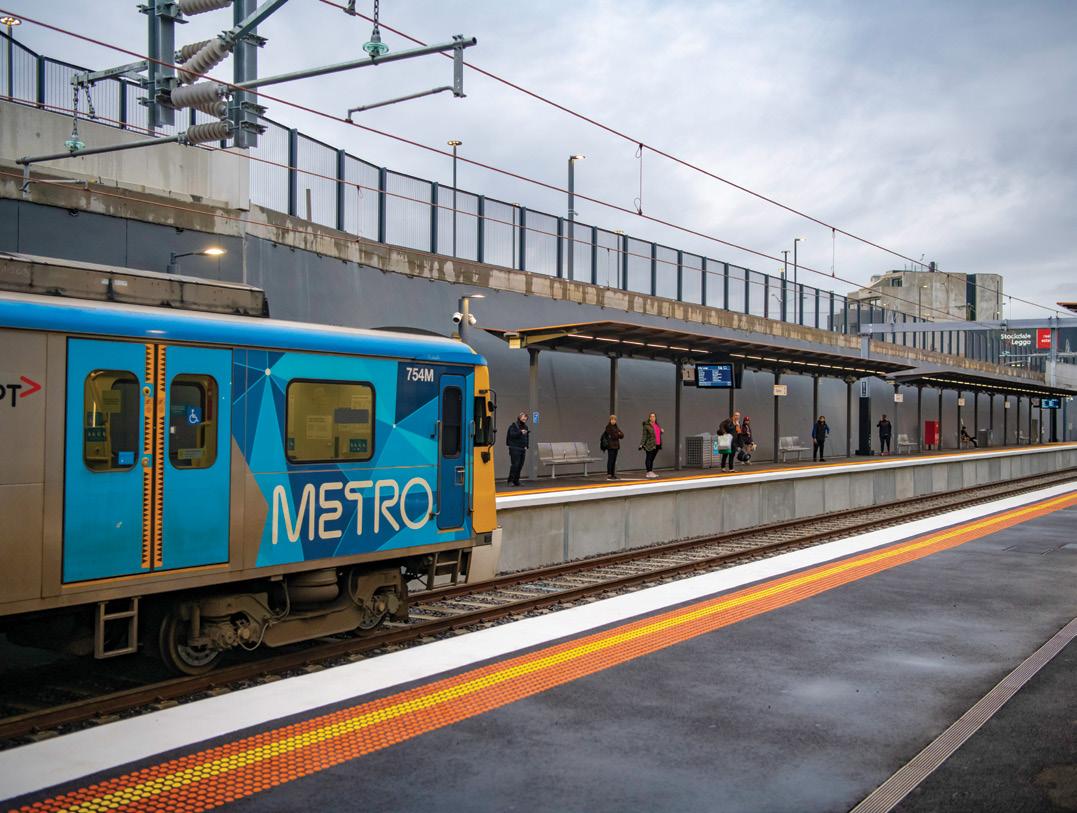
WORKING TOWARDS AN INCLUSIVE FUTURE
Mayor Riley said that despite the positives of the level crossing removals and the wider community improvements, there is still work to be done in the region to improve accessibility.
“But there is much more that can be done to improve the accessibility of public transport in Moreland and help people feel safe using public transport, particularly in our northern suburbs,” Mayor Riley said.
“Council has also been calling for increased resourcing for accessible tram stops, so that those trams that are accessible on the system can be accessed by wheelchair users, parents with prams, and also older people who use shopping trolley bags.”
Council is not only focused on accessibility, but also creating safe places for all to use comfortably, especially since the Royal Automobile Club of Victoria’s 2019 On Track survey listed Jacana Station as the sixth most unsafe station on the network.
Safety concerns for the station include inadequate lighting and poor maintenance of the station with the presence of litter, including syringes.
“We would love to see the Victorian Government directly engage with local residents, women and non-binary people to increase safety at Jacana railway station and see more people use this conveniently located station,” Mayor Riley said.
Now the Council’s level crossing removals are completed, parts of the pedestrian network that were blocked by the railway line are open to the public, meaning that the Council can plan and outline its priorities for future investment in accessible infrastructure.
www.councilmagazine.com.au Winter 2022 // ISSUE 3
47 MOBILITY
SUNSHINE COAST COUNCIL MAKING THE REGION ACCESSIBLE FOR ALL
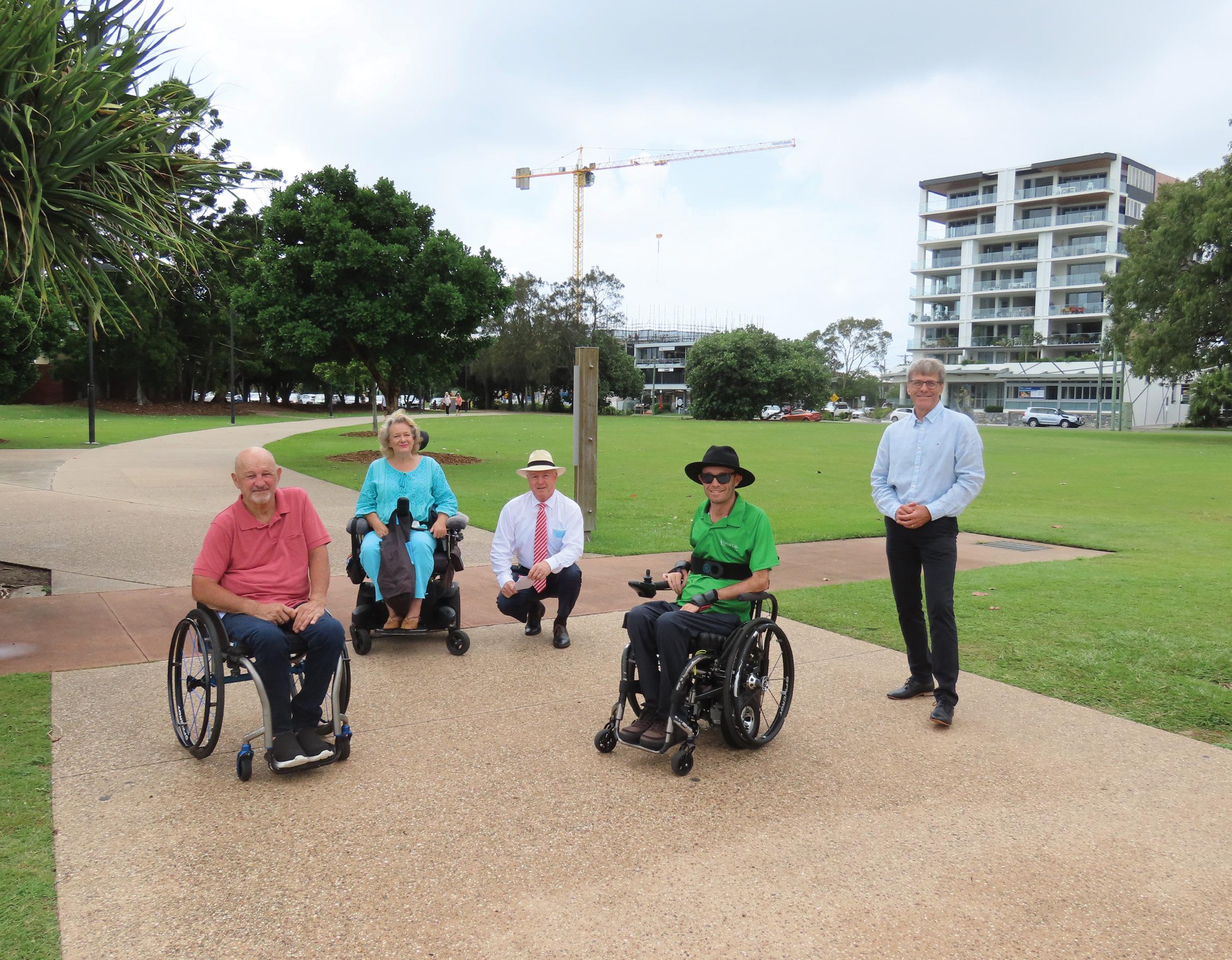
Sunshine Coast Council has completed a revolutionary pilot project focused on making life easier for people of all abilities and boosting mobility and inclusivity in the region. From mums and dads with toddlers in tow, to the elderly and people using mobility aids, this project aims to help the coast’s most popular areas become more accessible.
The innovative pilot project uses modern mappingtechnology to help change the way residents and visitors travel and access popular areas of the Sunshine Coast.
Sunshine Coast Council Mayor Mark Jamieson said wheelchairs were turned into mapping tools with specially trained local ‘pilots’ and advanced technology, to track routes from Maroochydore to Mooloolaba.
“I’m pleased to see Sunshine Coast Council partner with Briometrix and Spinal Life Australia to undertake the project –both leading providers of technology solutions for people with disabilities,” Mayor Jamieson said.
“Community members with limited mobility, whether permanent or temporary, often find it challenging to move around the Coast due to a lack of maps and wayfinding information about accessible routes.
“I would like to extend my thanks to the specialist pilots, Bevan Kearsley, Dane Cross, Lachy Chapman and Kay MacLean who made this initiative possible.
“The mapping project starts with the pilots who have lived experience, combined with innovative technology to collect information about our footpath conditions, access to public transport and parking, amenities, boardwalks, beach access and more.
Mayor Jamieson said that the maps are then generated, vetted and compared against the Council's existing maps to ensure consistency, before being uploaded to Council’s website.
“To be map-ready for the public by creating these easyto-use wayfinding maps, takes a collaborative approach across different teams within Council and externally,” Mayor Jamieson said.
“The maps will launch on Council’s website in June, allowing everyone to find their best path, according to their needs and ability.
“Identifying clear routes minimises mobility difficulties and allows the user to make informed choices before leaving the house to visit the Sunshine Coast.
Winter 2022 // ISSUE 3 www.councilmagazine.com.au 48 MOBILITY
Bevan Kearsley, Kay MacLean, Mayor Jamieson,Dane Cross, and Cr Law.
“Projects like this are important for the region to promote activity, provide mobility options and encourage visitation to our coastal areas.”
Sunshine Coast Council Mayor
Mark Jamieson
CREATING INCLUSIVE COASTAL AREAS
The stretch of pathways spanning between Maroochydore and Mooloolaba were identified as being of a very high standard.
Sunshine Coast Council Community Portfolio Councillor David Law said the pilots’ feedback was generally positive with only a small number of locations where effort ratings were high.
“When we refer to an ‘effort rating’ it’s based on the slope of the path, the surface condition, and the cross slope of the footpath which helps identify the easiest and least effort way to get around the coastal strip,” Cr Law said.
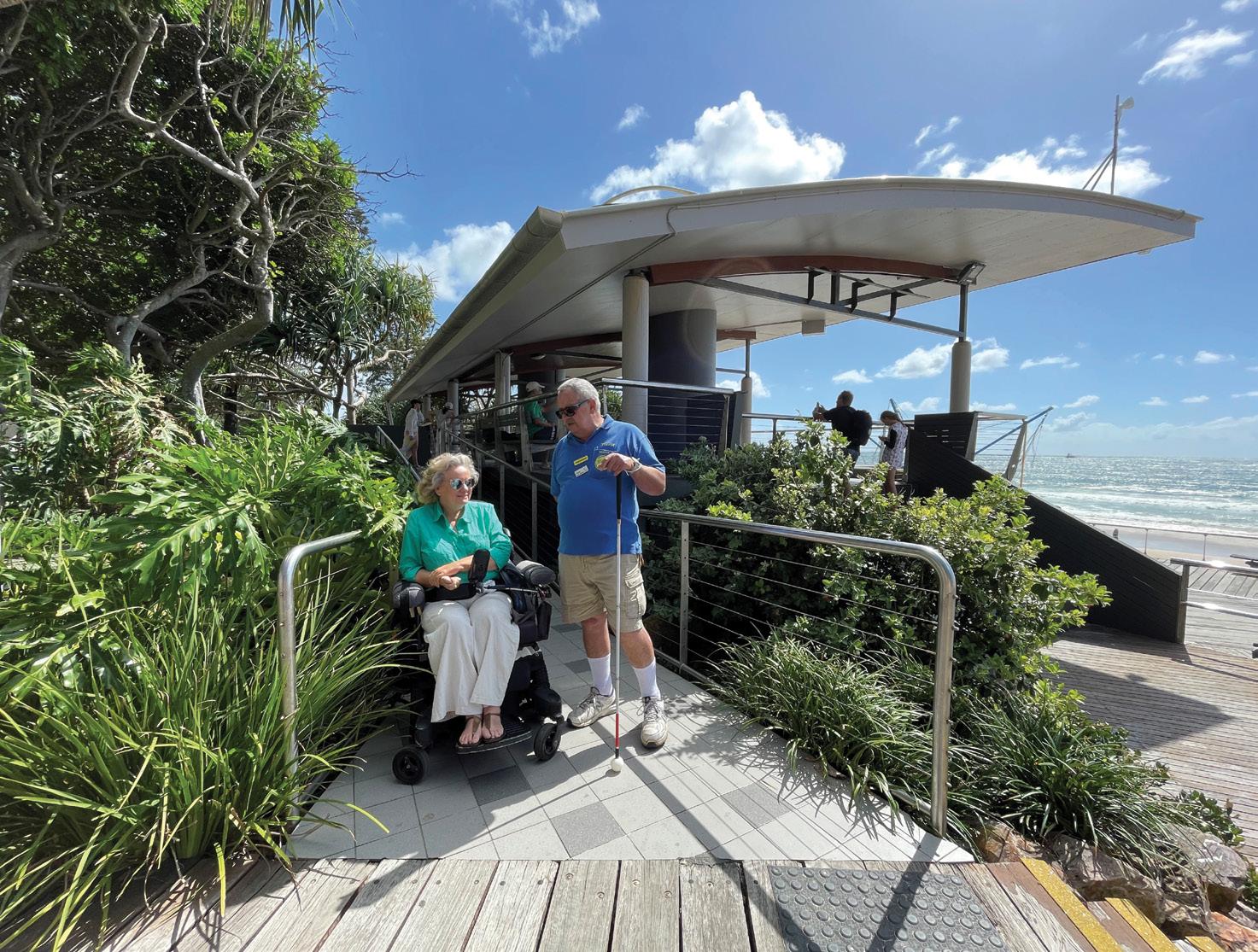
“The pilots identified the most suitable accessible parking locations and toilet facilities available at any given destination and have photographed the accessible entries to restaurants, hotels and entertainment venues to allow those with limited mobility to plan their visit.
“The maps have also identified where there may be limited access given steepness on site or the slope of a pathway.
“Equity and inclusion are key principles we value at Council and in our community, which is why this pilot project is essential in identifying accessible routes suitable for everyone.”
One area undergoing significant revitalisation with an emphasis on accessibility is the Mooloolaba foreshore.
“The Federal Disability Discrimination Act provides protection for everyone in Australia against discrimination based on disability,” Cr Law said.
“The law places a legal obligation on the designers, owners and operators of all public, work and human spaces to ensure access is not conditional on a person’s ability.
“In the lead-up to the Brisbane 2032 Olympic and Paralympic Games, the Mooloolaba Foreshore Revitalisation provides an opportunity to deliver best practice, fully accessible public amenities that better serve our wider community and prepare the region for the world stage.”
MOOLOOLABA REVITALISED WITH ACCESSIBILITY IN MIND
Disability groups have welcomed Council’s focus on prioritising accessibility and inclusivity and have commended recent projects which allow everyone to enjoy some of the region’s most beautiful locations.
Sunshine Coast Access Advisory Network (SCAAN) member and employee of Spinal Life Australia, Lachy Chapman, said the region was home to some of the most incredible natural environments in the country.
“However, many locations remain challenging for some community members including those with a disability, the elderly, carers, people with prams, the vision impaired and those using mobility devices,” Mr Chapman said.
“But the recently opened Mooloolaba boardwalk is a fantastic start.”
The 200m accessible boardwalk, connecting the Alexandra Headland to the Esplanade, was opened in
November 2021 and is part of the Mooloolaba Foreshore Revitalisation project.
The project was included in a recent Spinal Life television segment promoting Australia and the Sunshine Coast as an accessible destination.
“I really appreciate the consideration given to wheelchair access and space for wheelchair users at Mooloolaba’s new boardwalk,” Mr Chapman said.
“Something as simple as being able to sit side-by-side with friends and family along the way with new accessible seating and viewing areas is encouraging to see.
“I’m really keen to see how the project’s future stages will build on this great work.”
MEETING THE NEEDS OF THE COMMUNITY
Council is committed to ensuring facilities are meeting the community’s needs right across the Sunshine Coast. From inclusive infrastructure and wide coastal pathways, to beach matting that can take residents right to the water’s edge at a number of beaches across the coast.
Swap the beach for the hinterland at Mary Cairncross Scenic Reserve, which covers 55ha of tranquil rainforest with diverse flora and wildlife, and is suitable for walkers, prams and wheelchairs.
Discover new and dramatic scenery with Council’s online Adventure Sunshine Coast tool that makes it easy to find inspiration and information on walks suitable for each difficulty level, distance, ability and location.
Some of the Sunshine Coast’s must see walks for people of all abilities include Montville’s Russell Family Park, Cambroon’s Fig Tree Walk (near Kenilworth) and the Maroochy Wetlands Boardwalk.
Sunshine Coast Council will join other local governments and transport authorities across Australia including Brisbane, Townsville, Queensland Department of Transport and Main Roads, Wollongong, Sydney, Melbourne and Public Transport Victoria in deploying Briometrix Mobility Maps.
For more information about Accessible Tourism on the Sunshine Coast and Access, inclusion and disability visit Sunshine Coast Council’s website.
www.councilmagazine.com.au Winter 2022 // ISSUE 3 49 MOBILITY
Kay Maclean and Trevor Rice from SCAAN at Loo with a View.
Bass Coast’s wildlife corridors PRESERVING THE ENVIRONMENT AND ECONOMY
Bass Coast Shire Council, located in Victoria and encompassing the pristine Phillip Island, prides itself on its stunning natural environment and draws tourists from around the world.
So when the Council discovered the region had only 14 per cent of native vegetation cover left across the Shire, the Biolinks Plan was born.
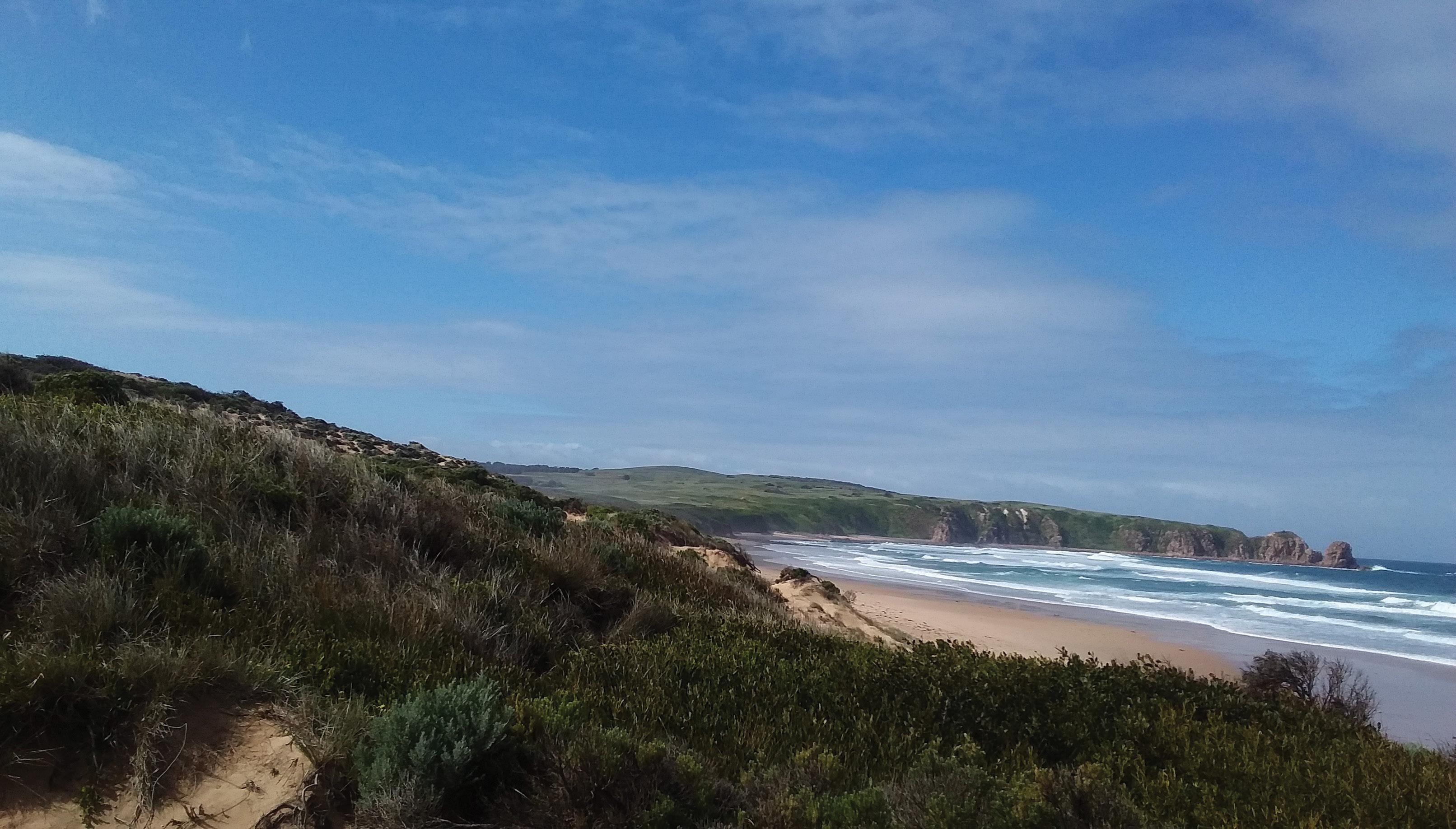
Biolinks are wildlife corridors that connect pockets of native vegetation and allow animals to move between these areas freely, increasing the genetic diversity in breeding populations and preserving natural flora and fauna. Community members and landholders identified 200 biolinks across the Bass Coast Shire Council.
Bass Coast Shire Council introduced the Biodiversity Biolinks Plan in 2018, to assist in linking conservation works across the Shire and providing an avenue for community involvement in restoring the landscape.
Bass Coast Shire Council Mayor Cr Michael Whelan explained the challenges Bass Coast faced, and what spurred the development of the plan.
“We discovered there was only 14 per cent of native vegetation cover across the whole Shire. This is very low. In addition, Bass Coast is home to 153 species of plants and animals that are classified as under threat or endangered.”
To understand why 14 per cent is alarming to this coastal Council, Mayor Whelan quotes a phrase often heard in the Bass Coast, “Our environment is our economy”.
“Our enormous tourism industry is heavily reliant on our environment. The internationally acclaimed attraction, the Phillip Island Penguin Parade, showcases to the world the importance we place on conservation,” Mayor Whelan said.
"In just four years since the development of this plan, over 2.5 million indigenous plants have been planted in 200 locations across the Shire, resulting in around 1100ha of revegetation."
Bass Coast Shire Council
Mayor Cr Michael Whelan
Winter 2022 // ISSUE 3 www.councilmagazine.com.au
50 ENVIRONMENTAL PROTECTION
Cape Woolamai coastal biolink.
LOCAL LANDOWNERS EMBRACING BIODIVERSITY
Alongside many locals, farmer Paul Spiers and landowner Dave Sutton provided input to the Bass Coast Shire Council Biodiversity Biolinks Plan in 2018.
Mr Spiers has described the transformation of his land as “like magic”, following the fencing off of a creek bed, the removal of blackberries from his farm and the revegetation of his land.
While Mr Spiers admits each landowner will have a different reason for revegetating their landscape, for him the provision of habitat and increased biodiversity were key.
“I’ve been walking on this land for 30 years, from when it was a weed patch. It’s now a cool temperate rainforest that provides a home for so many beasties,” Mr Spiers said.
The beasties Mr Spiers is referring to includes birds, insects and mammals that have returned to his property in droves.
Think Local, Act Global is a little too big and pretty depressing for Mr Spiers, whose advice to those interested in environmental protection is “Think local, act local. If we can fix thousands of microclimates that will make a huge difference”.
Mr Sutton, who is also Chair of the Gippsland Threatened Species Action Group, renourished his land over five years; revegetating 16ha and creating a biodiversity hotspot in a surprisingly short period of time.
“Our land is now home to wallabies, echidnas ,kangaroos and over 45 native species of birds,” Mr Sutton said.
“Biolinks allow animals to move between areas and increase the genetic diversity in breeding populations. They are critically needed and it’s important that both substantial east to west links and north to south links are created.”
COLLABORATION IS KEY
The project's collaboration with the local landowners has been critical to its success, alongside the commitment of multiple stakeholders including Bass Coast Shire Council, Bass Coast Landcare Network, Westernport Water, Melbourne
Water, West Gippsland Catchment Management Authority and the Bunurong Land Council.
The project enables a widespread area with different owners to be revegetated in a planned approach, working in unison with the Bass Coast Landcare Network, one of the biggest Landcare networks in Australia, which engages local farmers to revegetate their properties, select the correct vegetation for each location and organise community volunteers to plant the sites.
The Biolinks program also assists in engaging agriculture properties to help make waterways more resilient to local flood risk and climate change by increasing the amount of native trees and plants in the landscape.
Council, in conjunction with Victoria University and the Bass Coast Landcare Network, have also set up a monitoring program.
As the video monitoring equipment was installed by Mr Sutton and Diana Whittington of Bass Coast’s Council, the pair stumbled across a threatened species – a Lace Monitor.
“We had just put up the camera and were walking out of the bushland when I heard a rustle in the bush. I asked the others if it was a wallaby, but then we saw it climbing up a large gum tree and realised it was a Lace Monitor. They have a nasty bite if surprised so we kept our distance. It was fantastic to see and great to know there were more of them around the property happily breeding in the tree hollows,” Ms Whittington said.
FUTURE PLANS
As the project’s revegetation works for 2022 continue, there are 46 landowners signed up to do works.
“This is the largest number of landowners we have had participating in the Biolinks program since its inception. We will plant 125,000 indigenous plants across this Shire, with the assistance of the Bass Coast Landcare Network, volunteers, school students, community members and landowners. It’s a great project to be a part of,” Ms Whittington said.
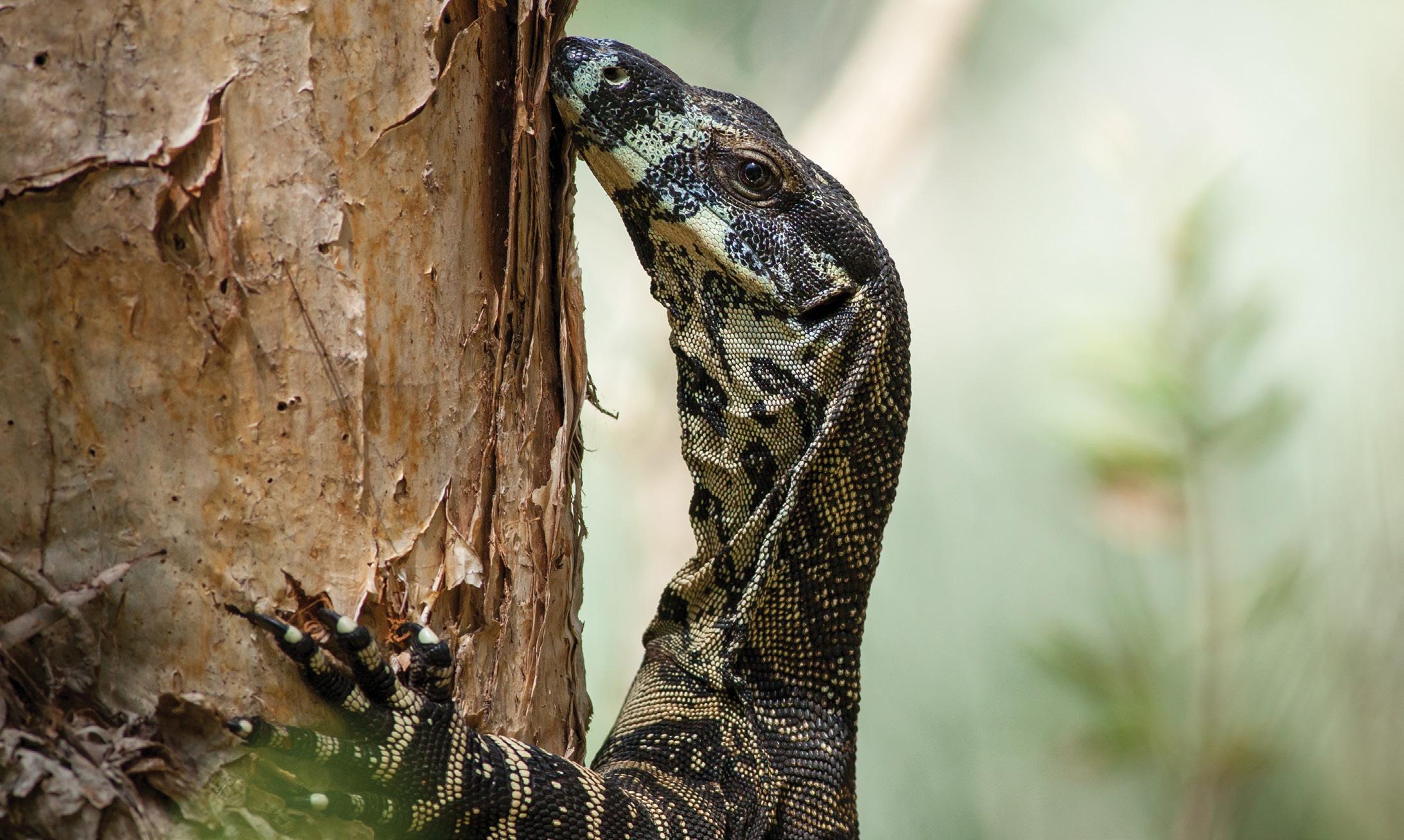
www.councilmagazine.com.au Winter 2022 // ISSUE 3 51 ENVIRONMENTAL PROTECTION
Lace Monitors are some of the many species flourishing in the Bass Coast Council's biolinks.
Preserving a SUBURBAN OASIS OF FLORA AND FAUNA HIDDEN
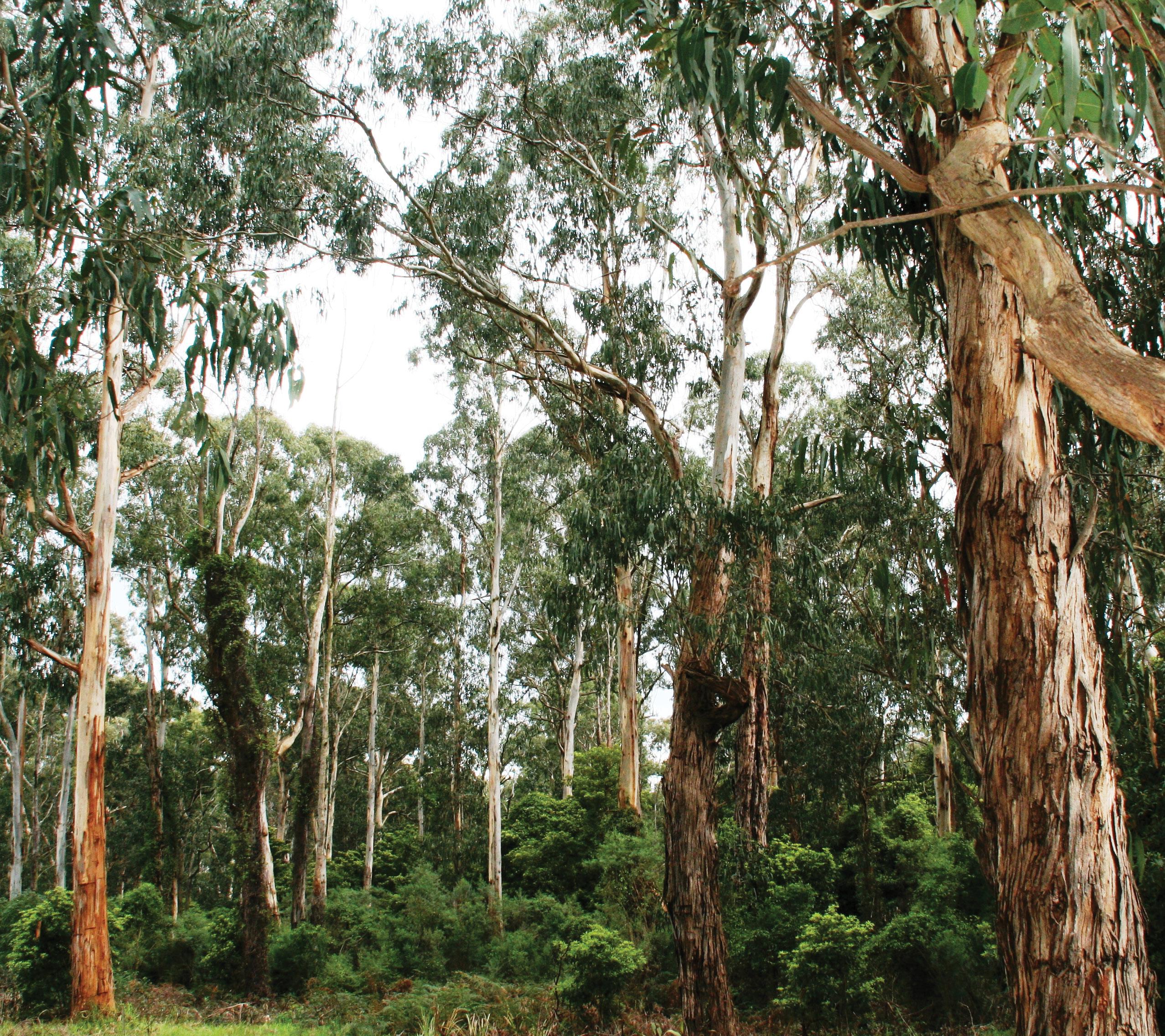 by Annabelle Powell, Journalist, Council magazine
by Annabelle Powell, Journalist, Council magazine
Baw Baw Shire Council, located in rural Victoria, is in the midst of purchasing a piece of land which houses many rare species and local wildlife, with the vision of creating an oasis for locals and critters alike.
Baw Baw Shire Council has purchased a 10.53ha property in Drouin with the intention of creating a community bushland reserve for preserving local wildlife.
Council is in the process of acquiring the Roberts Court Bushland Reserve, located at Longwarry Road, Drouin.
Purchase of the Reserve was identified within the Drouin Development Contribution Plan (DCP01) and included in Council’s Long Term Infrastructure Plan to occur in the 2021/22 financial year.
The reserve was identified as a high value environmental property due to its significant biodiversity values and potential
for future enhancements, such as meandering walkways, educational signage and wildlife viewing areas.
Retaining the bushland reserve will preserve natural habitats for local wildlife with species such as burrowing crayfish, lorikeets, Crested Shrike, rosellas, Eastern Yellow Robins, kookaburras, and many more calling the site home.
The reserve will also provide benefits for the surrounding community by lowering ambient temperatures, purifying air, and encouraging residents to adopt healthy recreational activities such as walking.
Baw Baw Shire Council Mayor, Cr Michael Leaney, said Council is pleased to be able to secure the future of this stunning bushland reserve, right in the heart of Drouin.
Winter 2022 // ISSUE 3 www.councilmagazine.com.au
52 ENVIRONMENTAL PROTECTION
Roberts Court Reserve.
Image: Friends of Drouin Trees.
“The value that places like this have goes far beyond the dollar figure of the land on which they sit, and it’s important to recognise this when making decisions for the future,” Mayor Leaney said.
MAKING PLANS FOR THE FUTURE
The first step moving forward with the reserve will be the development of a Master Plan, in consultation with the community.
“The Master Plan looks to preserve both the natural environment and allows for a level of enjoyment of this site by the community,” Mayor Leaney said.
“Obviously we don't want to turn it into parkland. It will need to retain its natural feel to it, but it then needs to also have the ability to have some form of access.”
Baw Baw Shire Council plans to engage a consultant to develop the Master Plan, and will also work with organisations such as Friends of Drouin’s Trees, a local community group who voiced their support for the purchase of the bushland reserve via a submission during Council’s 2020/21 Annual Budget process.
Judy Farmer of Friends of Drouin’s Trees celebrated Council’s unanimous decision to purchase the property.
“The Roberts Court Bushland Reserve is home to an abundance of plant and animal life and retaining places like this is vital to ensuring a sustainable future for our area,” Ms Farmer said.
“Hopefully, we will all get to see this area preserved and become one of the most visited and utilised environmental spaces in Baw Baw Shire.”
CREATING A LONG-TERM HOME FOR RARE SPECIES
Mayor Leaney said a key focus in developing the Master Plan will be ensuring that the biodiversity of the reserve is protected.
“Some of the key things we need to do is to look at things like bushfire management, waterway and biodiversity
endangered species local to the region, such as the terrestrial burrowing crayfish.
“The terrestrial burrowing crayfish and the Warragul burrowing crayfish are very small, and they're quite rare. And that's something that needs to be preserved in the area,” Mayor Leaney said.
The reserve is also home to a population of the nationally threatened Strzelecki Gum.
“An important element of the site is that it has a population of Strzelecki Gums, and they are listed as a threatened species on the national level; they're really important,” Mayor Leaney said.
“The Strzelecki Gums need to be preserved and certainly looked after. There is potential that the southern brown bandicoot occurs on the reserve, but that will be subject to assessment.”
ENSURING URBAN GREENERY IN A GROWING REGION
Baw Baw Shire and the towns of Drouin and Warragul are some of the fastest growing towns in Victoria, with a growth level of over 3.75 per cent. As the population increases, as does community concern about loss of farmland and open space.
“It's important that we preserve key parcels of land that are included in the Shire,” Mayor Leaney said.
“This isn't just a reserve that's like on the outskirts of town or it's kilometres away and people don't see it. This is actually almost in the centre of town. It's really important, and a key bushland area that I think people will enjoy for generations to come.”
Mayor Leaney said, personally, he envisions the future of the reserve as, “an island of originality within an area that's been developed really heavily”.
COMMUNITY KEEN TO MAINTAIN BIODIVERSITY
Mayor Leaney said Council is committed to involving the community in the planning process.

“The word I've had is that there is a strong desire for there to be not too much done,” Mayor Leaney said.
“People don't want this land turned into some kind of park that thousands of people visit. They want to maintain biodiversity. They want it to be a good place to be able to use for education, to be able to show people what can be done.
“There will be some passive recreational facilities potentially put in like a boardwalk or a bird hide or something along those lines. But primarily the important thing about this site is the preservation of the natural environment.”
The acquisition of the land will be completed using funds allocated in either Council’s Land Sales reserve or Native Vegetation reserve, with contributions from the Development Contributions Levy, meaning no rate revenue will be used to facilitate the purchase.
“Following the recent finalisation of the acquisition, Council will release the purchase price to the community at a future Council Meeting,” Mayor Leaney said.
“We're very excited that we've been able to purchase this property on behalf of the community and it’s going to be there for many generations to come.
“I am looking forward to taking in the site and seeing the community enjoy spending time there in the future.”
Winter 2022 // ISSUE 3
53 ENVIRONMENTAL PROTECTION
Eastern Yellow Robin. Image: Friends of Drouin Trees

CAUGHT IN THE ACT:
USING SMART SECURITY TO PREVENT ILLEGAL DUMPING
Illegal dumping can be a major issue for Australian local governments – from unwanted clothes outside charity stores, to waste dumped in bushland, the more residents consume, the more has to be disposed of. Choosing a smart security camera can make a world of difference by catching illegal dumpers in the act.
Illegal dumping is a broad phrase used to describe everything from people disposing of clothes or furniture outside the front of a charity store, through to construction and environmental waste being offloaded in the bush.
Although seemingly harmless enough, illegal dumping brings a set of insidious problems with it, including the cost of recovery and legal disposal of items, environmental clean-up and the loss of aesthetic in community spaces.
Spectur is an Australian technology solutions company that writes its own software and designs its own hardware in Australia – and knows the effects of illegal dumping on local councils too well.
Spectur Managing Director, Dr Gerard Dyson, said that for some councils the direct costs of illegal dumping can exceed a million dollars per year and be a massive drain on finite budgets.
Dr Dyson said that most illegal dumping occurs at night, which is when the offenders think they cannot be identified or stopped.
STOPPING ILLEGAL DUMPING BEFORE IT HAPPENS
Spectur’s defence systems actively prevent illegal dumping using solar-powered sensing, thinking and acting platforms that can identify illegal dumpers, notify them in the moment (an alarm and verbal warning will sound), record the event and advise first responders.
“The wireless platforms can be installed in vulnerable areas and the camera (or up to four cameras per system) can be oriented to survey points of entry, egress or likely dumping points,” Dr Dyson said.
“The systems use advanced motion detection algorithms and artificial intelligence to identify vehicles or persons and automatically deploy a loud spoken warning and lighting; to notify the potential dumpers that they have been identified, first responders advised, and their actions recorded.
“This usually stops the dumping before it starts. “
AI PREVENTING FALSE ALARMS
Spectur’s system alarms use cutting-edge technology to identify real threats.
The system can filter out motion detection false alarms caused by strong winds, moving branches, animals or even shadows due to passive infrared (PIR) sensors and motion detection algorithms. It then uses visual Artificial Intelligence (AI) to examine images and determine if there is a real threat (person, vehicle) in the image, prior to activating deterrence functions.
“This filtering allows the deterrence functions to be effective rather than a constant false alarming nuisance that rapidly gets turned off or ignored”, Dr Dyson said.
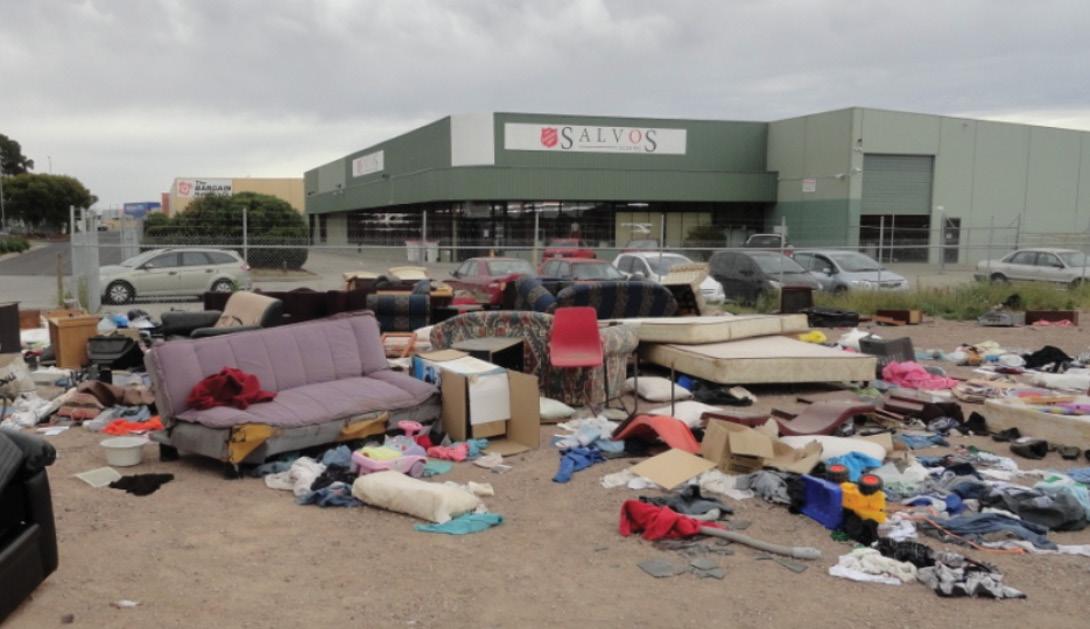
YIELDING REAL-WORLD RESULTS FOR COUNCILS
Spectur’s technology is used by many local governments around Australia.
“We have many examples of where our systems have identified a person or a vehicle about to commit a dumping act,” Dr Dyson said.
Dr Dyson said that for those who are still compelled to dump their waste, Spectur’s systems have also been very effective at supporting identification and prosecution.
“We are aware of one local council that has issued more than 400 fines related to illegal dumping from a single Spectur system,” Dr Dyson said.
“Customer surveys undertaken by Spectur have indicated that the frequency of criminal acts is reduced by about 90 per cent following installation of a Spectur solution.
“For those that continue, the consequences of the crimes are also reduced by (on average) 90 per cent.”
Winter 2022 // ISSUE 3 www.councilmagazine.com.au
54 ENVIRONMENTAL PROTECTION // SPONSORED EDITORIAL
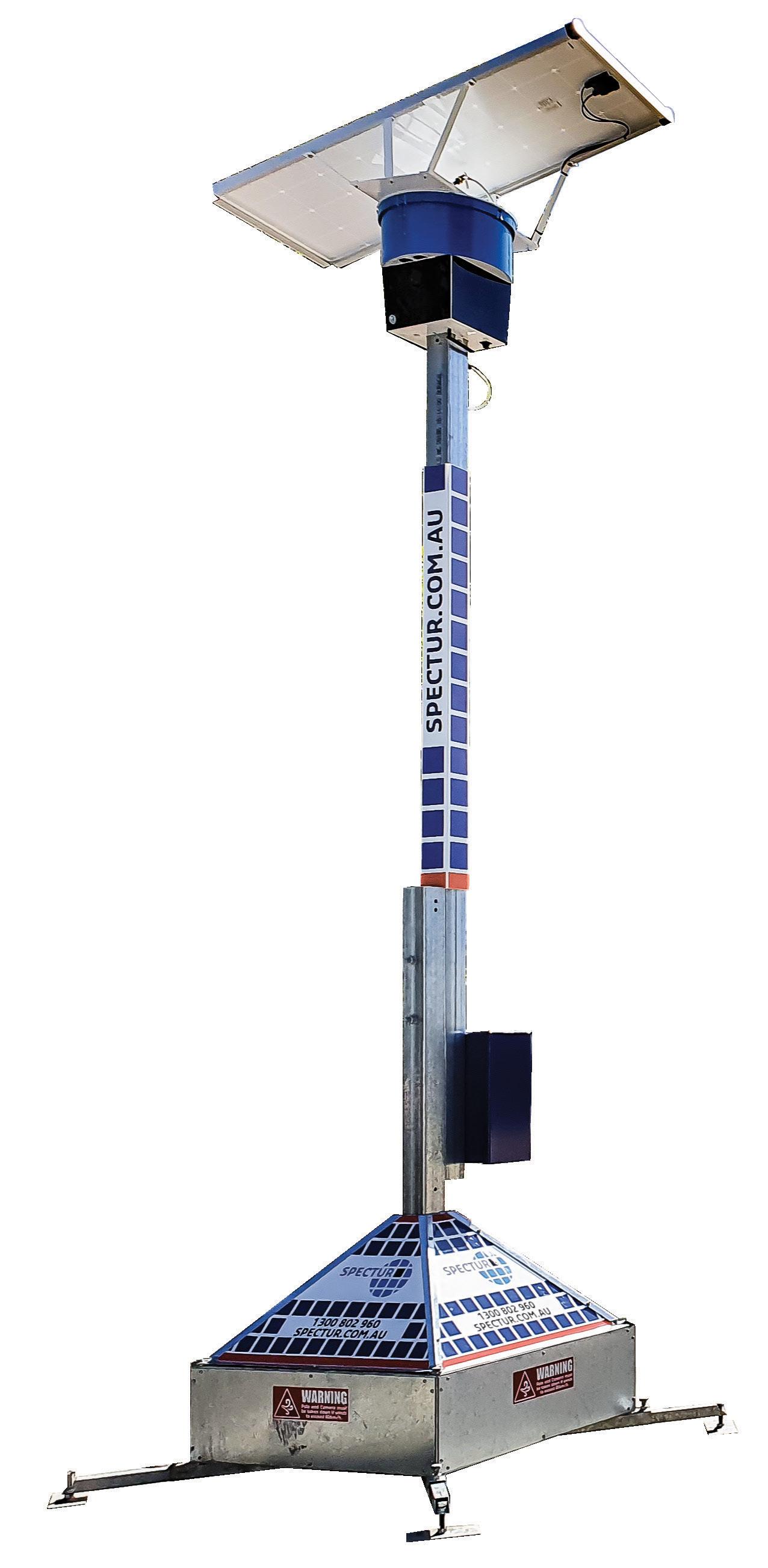

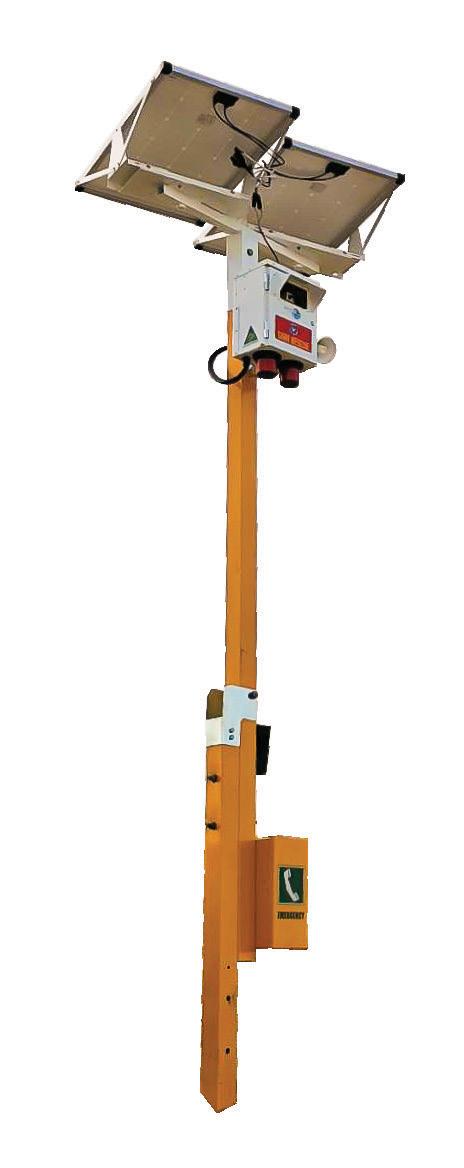
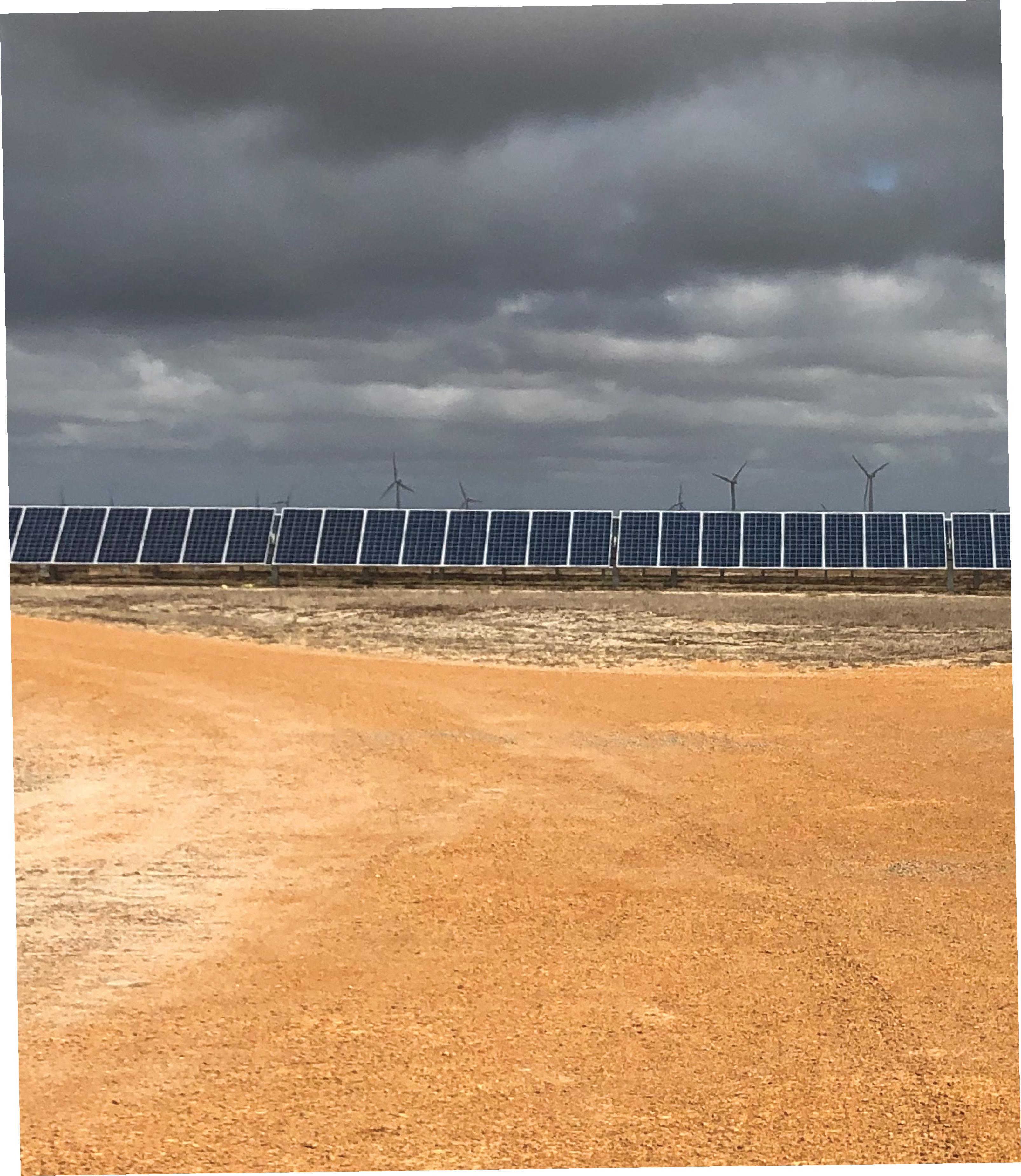

eillance Communications e… Harnessing the power of the sun to make autonomous sensing, thinking and action available anywhere, anytime... for more information 1300 802 960 www.spectur.com.au

LOCAL COUNCIL WORKS WITH ECOTEQ TO ACHIEVE CARBON NEUTRAL GOALS
Whether it’s managing rubbish, removing graffiti, cleaning public toilets, sweeping footpaths, or even cleaning up bird droppings – councils have a tough workload when it comes to city presentation and maintaining urban greenery – a workload that can take up a lot of resources.
Local governments want to do the right thing by the environment, and build a reputation for themselves of championing sustainability.
A local council located in Melbourne's east committed to a 45 per cent reduction in corporate greenhouse gas emissions and to be carbon neutral in 2022.
The Cleansing Coordinator has witnessed firsthand the impact the council has made as it progresses towards its carbon-neutral goals.
The Melbourne local government said that most residents and ratepayers can see the long-term environmental and economic benefits of council choosing to buy electric vehicles and equipment over fossil-fuelled counterparts.
“People praise us for being progressive and future thinking. We’re not a typical old council. We are looking at innovation at all times.”
But with the next step transitioning to a green fleet of machinery and equipment, the council needed to do the research.
“When we review new equipment, we check if there’s an electric version. When I go out to market, I’ll contact both diesel and electric-powered suppliers. The review process is the same. We look at the pros and cons.”
“We compare an electric machine like every other machine in the matrix. How fast does it sweep? How much does it carry? What is its physical working time?”
During this review, the council discovered EcoTeq Zero Emission Solutions, and the EcoWash 100 caught their attention.
In his report, the local government was convinced that this machine would save time, perform better than existing set-ups, be more eco-friendly and have economic benefits in the long run.
So far, the EcoWash 100 has proven to be a great investment.
The EcoWash 100 is a new machine and unlike anything else on the market, though hard to make a direct comparison between the cost of running and maintaining this machine and other high-pressure cleaners, where it’s clearly a winner is with maintenance.
“One of the reasons we got an electric machine is that there’s no moving parts. From a maintenance point of view, it’s brilliant. We just make sure the batteries are topped up and filters changed. It saves us downtime.”
“It solves so many problems with access to hard-to-reach places, water, and a high-pressure hose. It’s a true multitasking machine – from removing bird droppings, then pressure washing a bin, then removing moss from under a park seat. I cannot praise this machine enough. It’s a game-changer in my industry. The machine is brilliant. I love it.”
The council is now considering a 100 per cent electric commercial mower, such as the Mean Green range offered by EcoTeq. It’s a big step forward, whereby replacing just one commercial mower is the emissions reduction equivalent to taking 135 cars off the road.

56
ENVIRONMENTAL PROTECTION // SPONSORED EDITORIAL
For more information on EcoTeq, phone 1800 100 150 or visit ecoteq.com.au EcoTeq’s EcoWash 100.
Transition your fleet to Net-Zero emissions
Going green is no longer a trend. With awareness of sustainable practices increasing, more and more councils are making the transition to 100% electric outdoor maintenance equipment.
Zero Emissions. Zero Compromise.
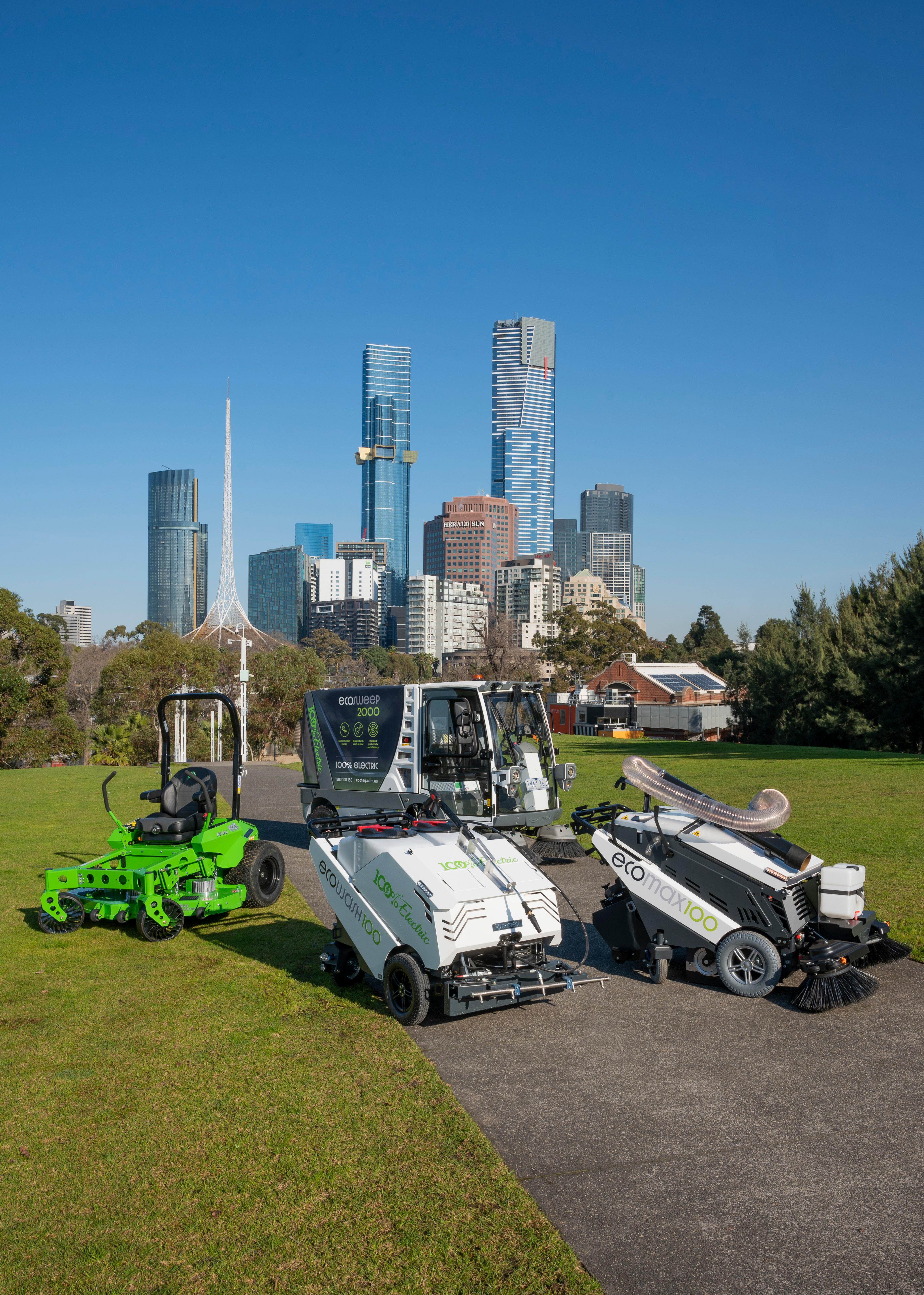
Ready to start the conversation about green fleet transition?
Scan the QR Code to download our complimentary guide or visit ecoteq.com.au for more information.
Street Sweepers
Street Washers
Litter Vacuums
Commercial Mowers
Electric
100%
INNOVATIVE SOLUTIONS
TO PREVENT WASTEWATER SPILLS AND REDUCE POLLUTION
By using innovative technologies, water companies and councils can prevent wastewater spills and reduce pollution in the environment, as improved network visibility provides better monitoring of wastewater levels.
Wastewater spills are a major contributor to the contamination of freshwater and marine ecosystems, with spills into the sea impacting bathing water quality and posing serious health risks and damage to marine ecosystems.
Water companies often have poor network visibility as expensive remote monitoring equipment only covers crucial points, with responses to wastewater spills typically being reactionary.
Blockages and collapsed sewers often go undetected, with control rooms inundated with high level alarms during wet weather events, due to the impact of rainfall on wastewater network levels.

This results in environmental and reputational damage for utilities, increased expenditure to clean up spill damage, and fines issued by regulatory bodies.
A growing population, industrial demands on the water network, and a changing regulatory landscape mean utilities, and councils, are under increased pressure to control spillages to prevent pollution.
A PREEMPTIVE APPROACH TO PROTECTING THE ENVIRONMENT
Poor network visibility can be significantly improved by the mass deployment of IoT (Internet of Things) and low-power technologies to monitor wastewater levels in real-time. Improving network performance and forecasting can also help to prevent wastewater spills and reduce pollution.
When combining IoT technologies with smart machinelearning data analytics, it becomes possible to predict future spill incidents, as these platforms identify patterns and the capability of a pipeline to deal with an influx of rain.
Metasphere works with utilities, providing hi-tech IoT solutions to intelligently manage wastewater networks by combining wastewater level data with historic, current, and forecast rainfall data.
With the addition of machine-learning, utilities can now forecast up to 30 hours ahead to understand how a particular network will behave, whilst intelligent alarms allow control rooms to react to the most important spills.
Early warnings of future spills by identifying partial blockages, means blockages can be proactively cleared to
prevent wastewater spills before they happen, and reducing the clean up for councils.
ZERO POLLUTION
Eliminating wastewater spills prevents fines for incidents that cause environmental and reputational damage.
Technology goes a long way to support utilities in meeting zero pollution targets, but the wider community also has a role to play to eliminate pollution, such as being aware of what goes into systems that could create potential blockages.
Metasphere technologies give utilities visibility of network performance, to help them prevent spills and reduce pollution by being able to respond quickly; preventing leaks and spills for a cleaner, greener world.
About Metasphere
As a wastewater application specialist business, Metasphere has been providing monitoring solutions to the global utility industry since the mid-1980s.
The company liaises with all sectors of the industry, from major utility companies to environmental and regulatory bodies.
Utilising latest technology, Metasphere delivers intelligent, innovative all-in-one telemetry solutions for full network visibility, performance and forecasting. Reducing telemetry ownership cost for customers and aiding in time-critical remote asset and system management.
For more information contact info@metasphere.net.au or phone +61 2 9956 7407
Winter 2022 // ISSUE 3 www.councilmagazine.com.au
58 ENVIRONMENTAL PROTECTION // SPONSORED EDITORIAL
ART SEWER




WASTEWATER LEVEL MONITORING
Compact, low cost, battery-powered radar sensor and Telemetry all-in-one ATEX/IECEx (Zone 0), NB-IoT, Cat-M1

Part of an all-in-one solution that delivers
Full network visibility, performance and forecasting
Also perfect for
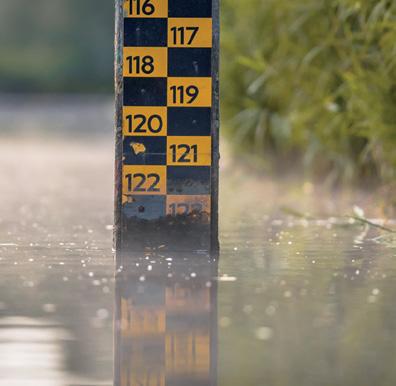
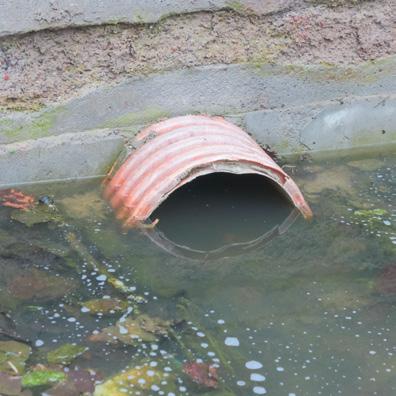
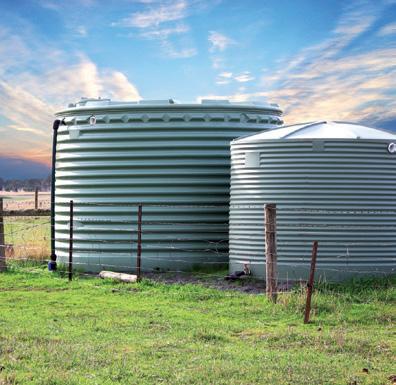

For more information contact info@metasphere.net.au +61 2 9956 7407
RIVER LEVEL STORMWATER LEVEL TANK LEVEL SILO LEVEL
THE AUSTRALIAN COUNCILS
WORKING TO BOOST ENERGY EFFICIENCY
by Stephanie Nestor, Journalist, Council magazine
Energy efficiency is a key concern for councils and their communities, but it goes beyond using less energy. It’s also about optimising how energy is consumed in public spaces to prevent energy waste, and in turn reducing carbon emissions. Here Council has collated a group of councils from around the country and explored what they’re doing to create more energy efficient communities.
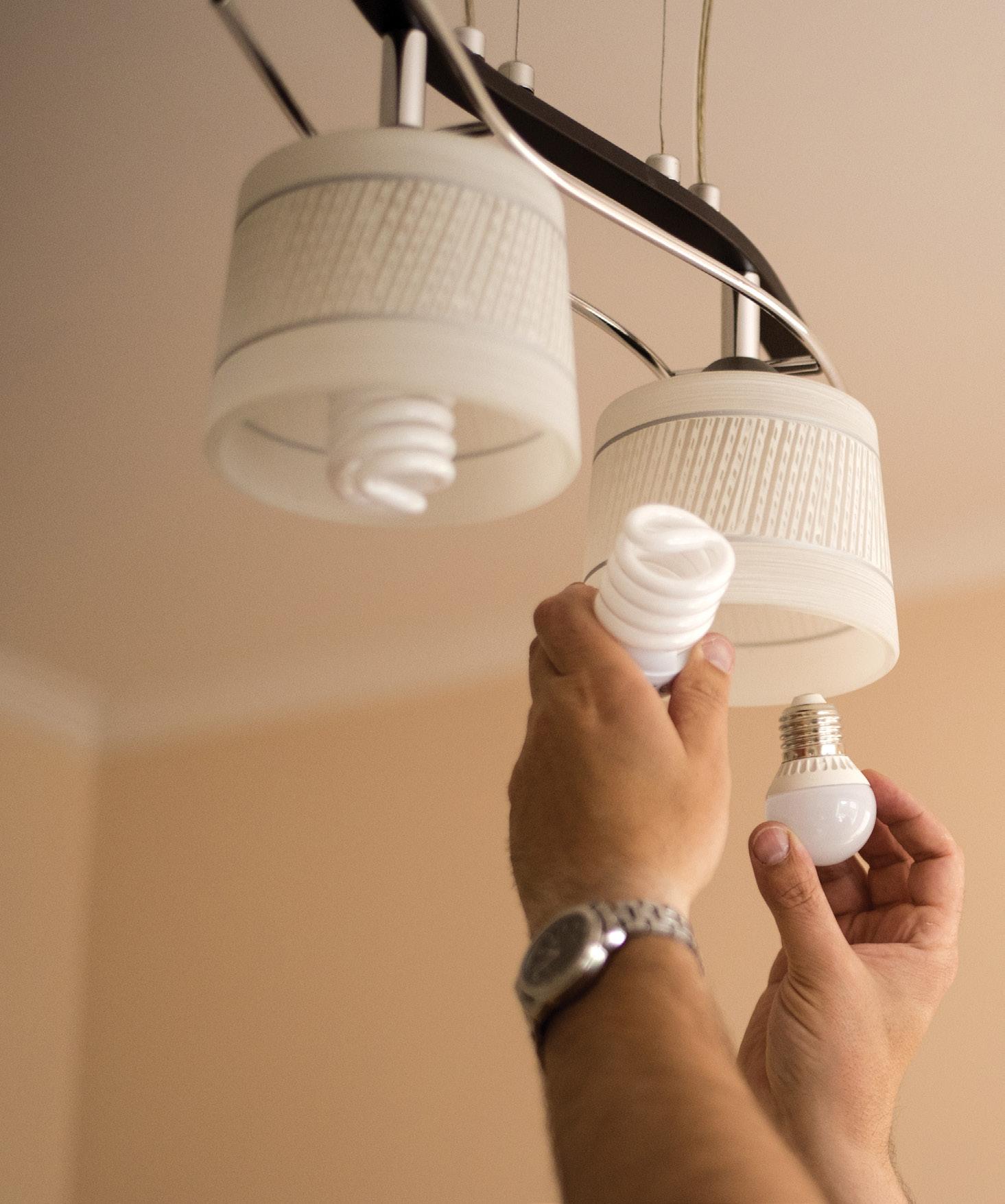
Councils around Australia are funding and implementing energy efficiency projects to curb energy waste and improve communities.
Energy saving measures not only provide environmental benefits, they can also reduce costs and improve quality of life for residents.
For councils, energy saving initiatives can include ensuring new developments are energy efficient before construction, helping businesses reduce energy consumption or encouraging households to install solar panels.
Council has rounded up a group of council initiatives from across the country, which are helping communities become more energy efficient.
CARDINIA SHIRE COUNCIL – ENERGY EFFICIENCY HANDBOOK
Cardinia Shire Council has partnered with Federation University to create the Home Energy Improvement Handbook, which encourages physical changes to homes as well as behavioural changes.
The handbook is designed with households in mind, containing ideas and tips on how to improve energy efficiency, reduce household energy costs and improve thermal comfort.
The full handbook helps households understand where their energy comes from and how they might regulate consumption. This includes reducing energy use, generating their own energy with solar panels, or better understanding household electricity bills.
This initiative aims to not only help residents save money, but also reduce energy waste and greenhouse gas emissions.
It offers energy saving measures ranging from low-cost to high-cost, such as replacing technology and maintaining home features.
The handbook outlines measures according to their purpose, such as thermal regulation and reducing energy waste.
Additionally, the handbook details how households in Cardinia can install solar panels, wind turbines or batteries and what savings they can expect, as well as a guide to understanding electricity bills.
There is both the complete handbook and a two-page summary for quick reference available on Council’s website.
RANDWICK CITY COUNCIL – AUSTRALIAN ENERGY FOUNDATION PARTNERSHIP
Randwick City Council has enlisted the help of the Australian Energy Foundation (AEF) to provide residents with advice about energy consumption and making their homes more energy efficient – even connecting them with suppliers that can help.
Randwick City Council, alongside eight other Sydney councils, worked with the Southern Sydney Regional Organisation of Councils (SSROC) to create Our Energy Future: The Renewable Energy Master Plan.
The plan aims to increase the proportion of renewable energy being used in the area.
After the plan detailed the need for community energy advisory services to be available, Council selected the AEF to provide such services for Randwick residents.
Energy advisors at the AEF have helped households understand what they need to do to make their homes more
Winter 2022 // ISSUE 3 www.councilmagazine.com.au
60 ENERGY EFFICIENCY
energy efficient and referred them to suppliers that can help install the certain technologies/upgrades suggested.
The AEF has provided advice on areas such as solar panels, battery storage, insulation, LED lighting, hot water heat pumps, Home Energy Assessments and window films.

CITY OF ADELAIDE – FREE BUSINESS ENERGY ASSESSMENTS
The City of Adelaide is offering free energy assessments to 50 small businesses to assist with reducing energy costs and consumption, and providing businesses with rebates to cover the costs involved.
The technical energy assessment is free and helps businesses identify energy-saving opportunities for potentially saving costs on electricity and gas bills.
Businesses are then eligible for an 80 per cent rebate, up to a maximum of $5,000, to cover costs for implementing the energy saving measures outlined in their energy assessment report.
This program not only encourages businesses to save energy and money, but also recover from the impacts of COVID-19 restrictions.
Eligible businesses can be part of the accommodation, retail or food services sector. A variety of upgrades are available to businesses, such as equipment replacements, lighting upgrades, and hot water system improvements.
BRISBANE CITY COUNCIL – GUIDELINES FOR ENERGY EFFICIENCY AT EVENTS
Brisbane City Council has outlined guidelines for avoiding energy waste for groups holding public events, focusing on reducing energy waste and also helping groups prevent poor air quality.
The type and amount of energy used at an event and transportation can have a negative effect on air quality, with even small changes helping to reduce emissions and energy waste.
Brisbane City Council’s waste hierarchy outlines the first priority for energy use is to avoid wasting energy, with
the guidelines suggesting on-site solar to generate power instead of using diesel generators. Using the most efficient generators and utilising the full rated load of power can also reduce energy consumption.
Wasted energy can contribute to not only higher costs but also pollutants. Another suggestion is to ensure the mains at privately-owned venues use clean energy or ask for the venue to individually meter the event.
All Brisbane City Council sites use 100 per cent renewable energy from GreenPower.
CITY OF SYDNEY – ENERGY EFFICIENCY BUILDING STANDARDS
The City of Sydney has implemented performance standards for new net zero energy buildings, aiming to incorporate these standards into the early stages of new developments.
The performance standards will improve energy efficiency for new office, multi-unit residential, hotel, shopping centre and mixed-use developments and refurbishment projects.
Council has also released the Planning for net zero energy buildings report which highlights embedding energy efficiency into the planning stage of new developments.
While councils may use planning and design tools which drive lower energy use, there are little market incentives for developers. Often the benefits of energy efficiency go to the asset owner and tenants through lower energy costs and bills.
Council’s report investigates how Sydney and Greater Sydney councils can optimise energy efficiency through on-site and off-site renewable energy, encouraging developers to consider the path to net zero during both the planning and design processes.
COUNCILS AND ENERGY EFFICIENCY
Local governments have a key role to play in aiding businesses and households alike to become more energy efficient.
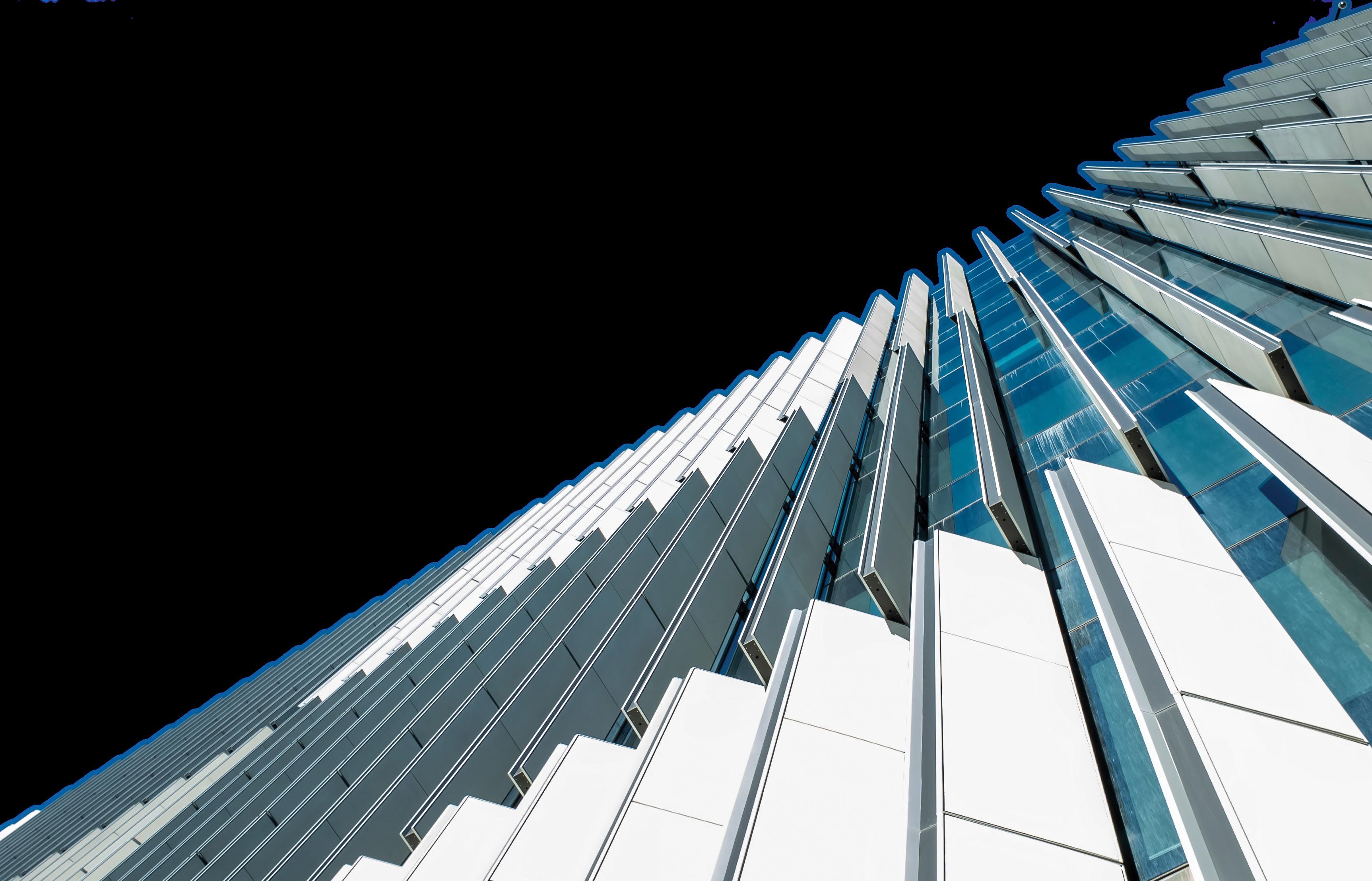
These initiatives highlight how even the smallest of changes can lead to Australians saving money on energy costs and reducing energy waste, making a lasting impact for communities across the country.
61 ENERGY EFFICIENCY
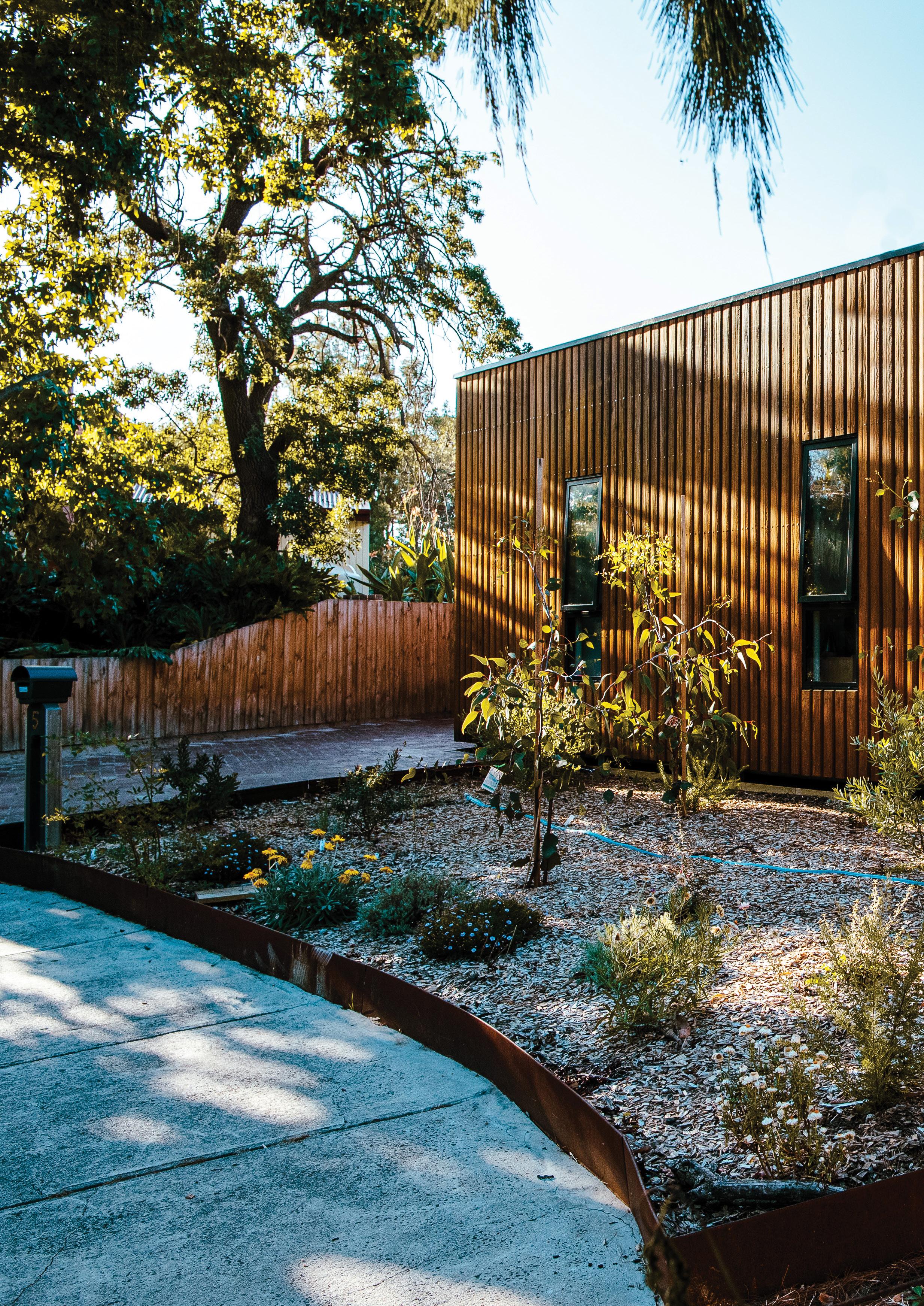
Why Australia needs HIGHER ENERGY
EFFICIENCY STANDARDS for housing
In a country with such a variety of climates, energy efficient housing could help save Australians hundreds on their energy bills.
62 ENERGY EFFICIENCY
Image: Luke McNee @seagrassfilms, provided by Ecoliv.
by Dr Portia Odell, Director, Cities Power Partnership
Local governments across Australia are leading the race to net zero communities, but poor energy efficiency standards, and poorly made homes, are dampening progress. Here, Cities Power Partnership, Australia’s largest network of local councils leading the way to net zero, discusses fresh research from the Climate Council. They highlight how Australians could be saving hundreds a year on their energy bills by living in a home with higher energy efficiency standards.
Living in a large nation with varying temperatures and climates, Australians don’t have much of a choice but to use copious amounts of energy to heat and cool their homes.
Low energy efficiency standards have left too many Australians living in poorlymade homes equated to “glorified tents”, which are stifling during summer and freezing in winter. In fact, houses that are too cold contribute to 6 per cent of deaths in Australia – double the rate in Sweden, where winter temperatures reach minus 30°C.
These glorified tents are also expensive to run – Australian homeowners face some of the most expensive energy bills in the world, with as many as 85 per cent of Australians experiencing “bill shock” during 2020. The energy efficiency of a home impacts how much energy is required to power the home, such as for heating and cooling. The better the energy efficiency, the less energy being used for the same tasks, and vice versa – saving on cost, energy and emissions. In the race to net zero emissions, electricity use matters.
Australia is now ranked 18 out of 25 of the world’s top energy users when it comes to energy performance, sitting behind Spain, France, the UK, Germany, China, Poland and Mexico on energy efficiency building standards.
For local governments, more energy efficient homes means residents are less exposed to ongoing financial pressure of energy bills, will experience better health outcomes and have protection from heat waves and cold spells.
The higher standards are also a tangible pathway for local governments to reach community net zero targets quickly and easily.
MAKING BUILDINGS EFFICIENT FOR THE FUTURE
Electricity generation is the biggest contributor to climate change in Australia, due to the majority of the country’s electricity being made by burning fossil fuels, such as coal and gas.
Making new Australian buildings more energy efficient will not only help communities cut emissions and address climate change, but would directly save homeowners hundreds of dollars every year in energy bills.
Recent Climate Council modelling shows a 7-Star all-electric home achieves a 25 per cent reduction in emissions, compared to the current minimum standard of a 6-Star all-electric home.
It also shows that building a 7-Star, all-electric house in Australia will save on average $450 per year on heating and cooling costs compared to a 6 -Star home, showcasing that residents in every part of Australia are better off under higher minimum standards.
It’s a no-brainer, and right now, Australia has the opportunity to make sure that everyone locks in the benefits of higher energy efficiency standards.
For the first time in eleven years, the laws that mandate minimum energy efficiency standards are being reviewed.
Under the National Construction Code (NCC), there is a proposal to increase from a 6-Star NatHERS standard for new homes to 7-Stars, with the decision being made by state and territory Ministers in July 2022.
This is a huge opportunity to improve the quality, comfort and running cost of Australian homes. Local governments can have happier, healthier communities, and reach emission targets sooner.
Fast facts
• For every new home built to 7-Stars, the emissions saved each year are equivalent to taking one car off the road for an entire year
• If all the heating and cooling emissions saved from building 7-Star homes were counted out to 2030, it would add up to total savings of 7.7 million tonnes; equivalent to a 12 per cent reduction on Australia's 2019 national residential emissions
• Economists calculate the economic benefits of avoiding these emissions over a ten-year period as being at least $90 million and up to $3.5 billion, depending on the social cost of carbon factored in
• Every new 7-Star home built in Australia uses a third of the energy needed to heat and cool a 1.5-Star home, these savings are significant given 80 per cent of Australian housing stock was built before the 6-Star standard came into effect
63 ENERGY EFFICIENCY
www.councilmagazine.com.au Winter 2022 // ISSUE 3
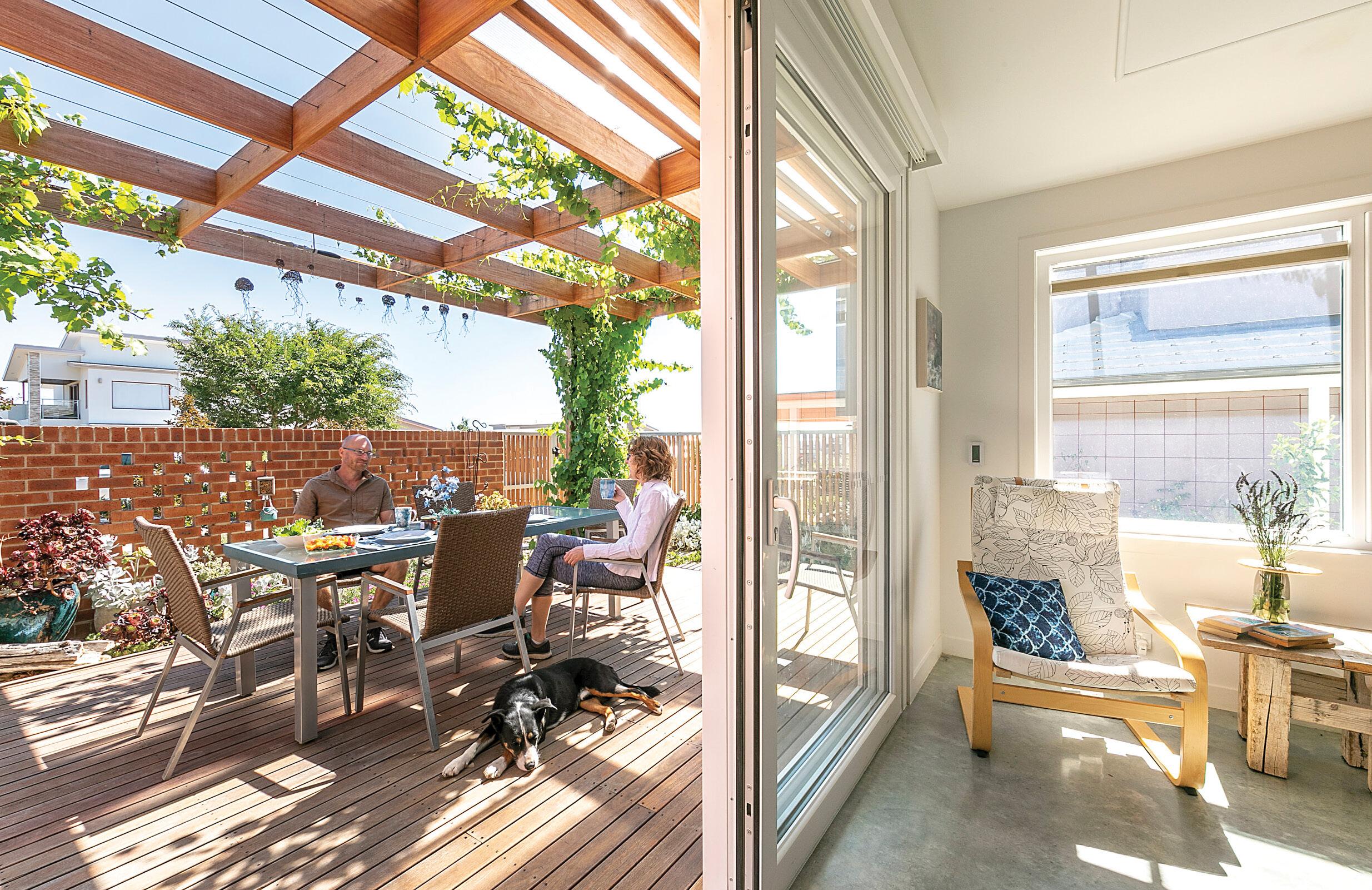
LOCAL GOVERNMENTS DRIVING ENERGY EFFICIENCY
Energy efficiency is already being driven by local councils, for example Orange City Council is saving $485,000 in annual maintenance and electricity costs just by upgrading almost 5,000 streetlights to LED1
Lismore City Council has made a number of energy efficiency upgrades to some local pools and facilities –initiatives like energy efficient lighting, heat reflective paint and solar hot water systems. All up, these energy efficiency upgrades will save Council $144,500 in electricity bills each year, equivalent to around 622,280kw hours or 658t of carbon dioxide emissions2
These are just a few examples showing how councils that are part of the Cities Power Partnership – Australia's largest network of local councils leading the way to net zero – are sharing resources to supercharge local initiatives. A free program, Cities Power Partnership has over 165 council members across
the country, representing 65 per cent of Australians.
The next step for many councils is tackling community emissions. Advocating for stronger energy efficiency standards can make a big dent in community hip pockets and emissions across the country.
HOW COUNCILS AND COMMUNITY MEMBERS CAN TAKE ACTION
∞ Get the community involved: Community members can head to the Climate Council website to email their relevant Minister in support of them updating the National Construction Code
∞ Lead by example: Implement energy efficiency initiatives in your council, to save valuable council funds and cut carbon emissions. Celebrate and share initiatives with your community to take them on the journey. If you need a hand, join the Cities Power Partnership (for free) and pledge to take action on energy
efficiency. You will learn from dozens of councils who are also pursuing energy efficiency
∞ Profile high energy efficiency homes within your municipality: It can be challenging to garner community support for improved energy efficiency when residents have limited understanding on what it means for them. Help educate residents by profiling high energy efficiency homes and experiences of lower bills and greater comfort
∞ Contact your Building Ministers’ Forum representative directly: The voice of councils on improving the quality of Australian homes is very powerful. Find the contact of your Building Ministers’ Forum representative directly, as well as the state or territory Minister for Energy who supports in making the decision, to let them know you support higher energy efficiency standards
1. Orange City Council. 2020. https://www.orange.nsw.gov.au/news/led-streetlight-project-to-provide-long-term-benefits/
2. Lismore City Council. https://lismore.nsw.gov.au/our-community-energy-efficiency-program-is-making-council-facilities-more-sustainable
Winter 2022 // ISSUE 3 www.councilmagazine.com.au
64 ENERGY EFFICIENCY
Residents in every part of Australia are better off under higher minimum standards. Image: Ben Wrigley, provided by Light House Architecture and Science.
State benefits of moving from 6 to 7-Stars as the minimum standard for new homes
State or territory
New South Wales
Victoria
Queensland
Northern Territory
ACT
Western Australia
South Australia
Tasmania
• All-electric 7-star homes in Sydney will save residents $225 per year in heating and cooling bills compared to a 6-star home
• Enforcing the 7-star update by the end of 2022 will save NSW 1,798,041 tonnes in emissions by 2030, equivalent to a 10 per cent reduction of residential emissions
• All-electric 7-star homes in Melbourne will save residents $407 per year in heating and cooling bills compared to a 6-star home
• Enforcing the 7-star update by the end of 2022 will save Victoria 2,820,003 tonnes in emissions by 2030, equivalent to a 14 per cent reduction of residential emissions
• All-electric 7-star homes in Brisbane will save residents $119 per year in heating and cooling bills compared to a 6-star home
• Enforcing the 7-star update by the end of 2022 will save Queensland 1,205,772 tonnes in emissions by 2030, equivalent to a 9 per cent reduction of residential emissions
• All-electric 7-star homes in Darwin will save residents $945 per year in heating and cooling bills compared to a 6-star home
• Enforcing the 7-star update by the end of 2022 will save the NT 50,350 tonnes in emissions by 2030, equivalent to an 8 per cent reduction of residential emissions
• All-electric 7-star homes in Canberra will save residents $713 per year in heating and cooling bills compared to a 6-star home
• Enforcing the 7-star update by the end of 2022 will save ACT 122,048 tonnes in emissions by 2030, equivalent to a 16 per cent reduction of residential emissions
• All-electric 7-star homes in Perth will save residents $337 per year in heating and cooling bills compared to a 6-star home
• Enforcing the 7-star update by the end of 2022 will save WA 1,042,707 tonnes in emissions by 2030, equivalent to a 14 per cent reduction of residential emissions
• All-electric 7-star homes in Adelaide will save residents $460 per year in heating and cooling bills compared to a 6-star home
• Enforcing the 7-star update by the end of 2022 will save SA 495,134 tonnes in emissions by 2030, equivalent to an 11 per cent reduction of residential emissions
• All-electric 7-star homes in Hobart will save residents $453 per year in heating and cooling bills compared to a 6-star home
• Enforcing the 7-star update by the end of 2022 will save Tasmania 159,943 tonnes in emissions by 2030, equivalent to a 14 per cent reduction of residential emissions

www.councilmagazine.com.au Winter 2022 // ISSUE 3 65 ENERGY EFFICIENCY
7-Star homes can reduce emissions for local governments. Image: Ben Wrigley, provided by Light House Architecture and Science.
THE FUTURE OF BOOSTER SET TECHNOLOGY
“When we started to think about Esybox Max, we asked ourselves how to manage the evolution of the Esybox range. It was clear from the very beginning, it could not just be something bigger. We felt we had to bring forward the path of evolution, completely changing the rules of the game for booster sets in residential and commercial buildings. Esybox Max is the outcome of listening to and communicating with many different people who will be in direct contact with the product.”
Introducing a new concept and industry-first in the booster set industry, Esybox Max is an integrated pumping system for pressurisation in commercial building services. Available in two power sizes, it consists of modular elements that allow different configurations to cover the needs of medium/large apartment blocks and high buildings (even over 14 floors). Each unit consists of the single, double or triple connection base and the pumping units – a four-pump system is available with the additional kit to connect two double bases.
Large energy savings are achieved with the DAB inverter combined with a brand new permanent magnet motor. DAB also designed completely new hydraulics, making it leaps ahead in terms of energy efficiency. But it is not just energy efficiency that is at the forefront of this new technology.
Esybox Max will improve the storage efficiency in the warehouse. Where there was once one booster occupying space, you can now fit three twin pump booster sets in its place. This allows people to store the full range on one pallet, meaning a customer can pick up an off-the-shelf booster solution of up to four pumps, the same day.
Keeping it flexible, DAB has the on-site assembly concept. So if you have difficulties getting to the pump's location, due to narrow stairways and corridors etc., you can choose to assemble your booster on-site which will only require moving smaller, lighter boxes into the location then carrying out a quick and easy assembly.
DCONNECT
The Esybox Max also offers full connectivity and control using DAB’s DConnect technology, which is built into the pump and offers many more advantages than typical BMS systems.
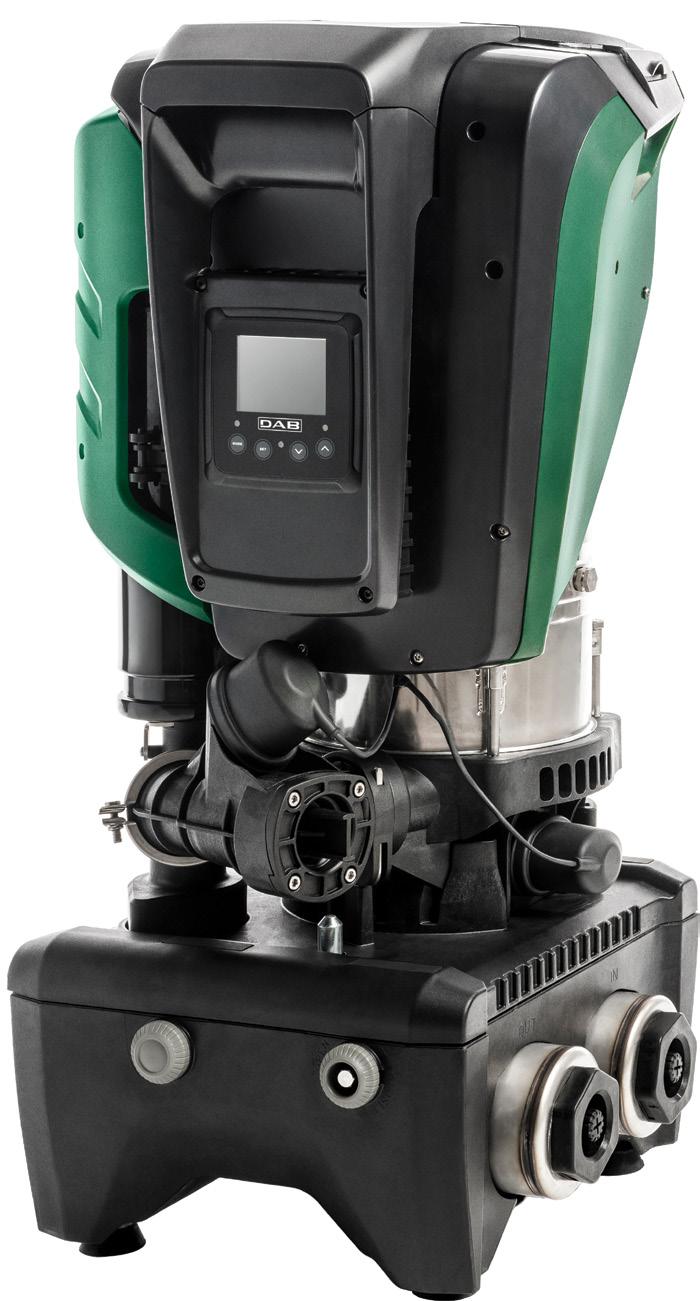
Performance, data storage and remote monitoring support users, and facility managers can control their pumps from anywhere, making sure that the running parameters of the pumps follow project specifications exactly and avoid any possible site issues for complete peace of mind.
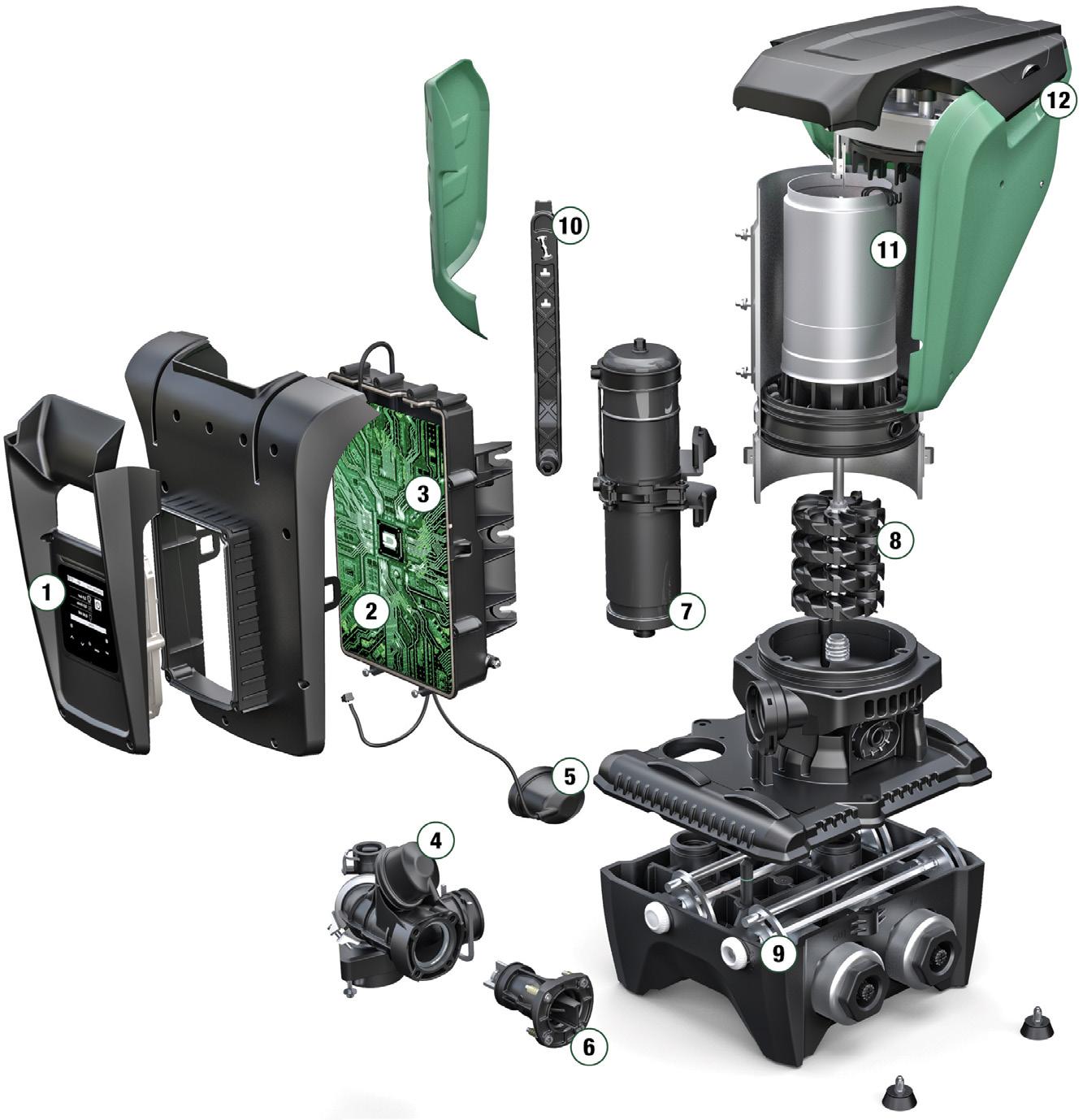
Winter 2022 // ISSUE 3 www.councilmagazine.com.au 66 ENERGY EFFICIENCY // SPONSORED EDITORIAL
1 Display 2 Inverter 3 Module Wifi/Bluetooth 4 Pressure sensor (delivery side) 5 Pressure sensor (suction side) 6 Non-return valve 7 Two Litre expansion tank 8 Impellers 9 Hydraulic connections 10 Fast connection tool 11 Water cooled permanent magnet motor 12 Handles

LINE UP FOR THE FUTURE
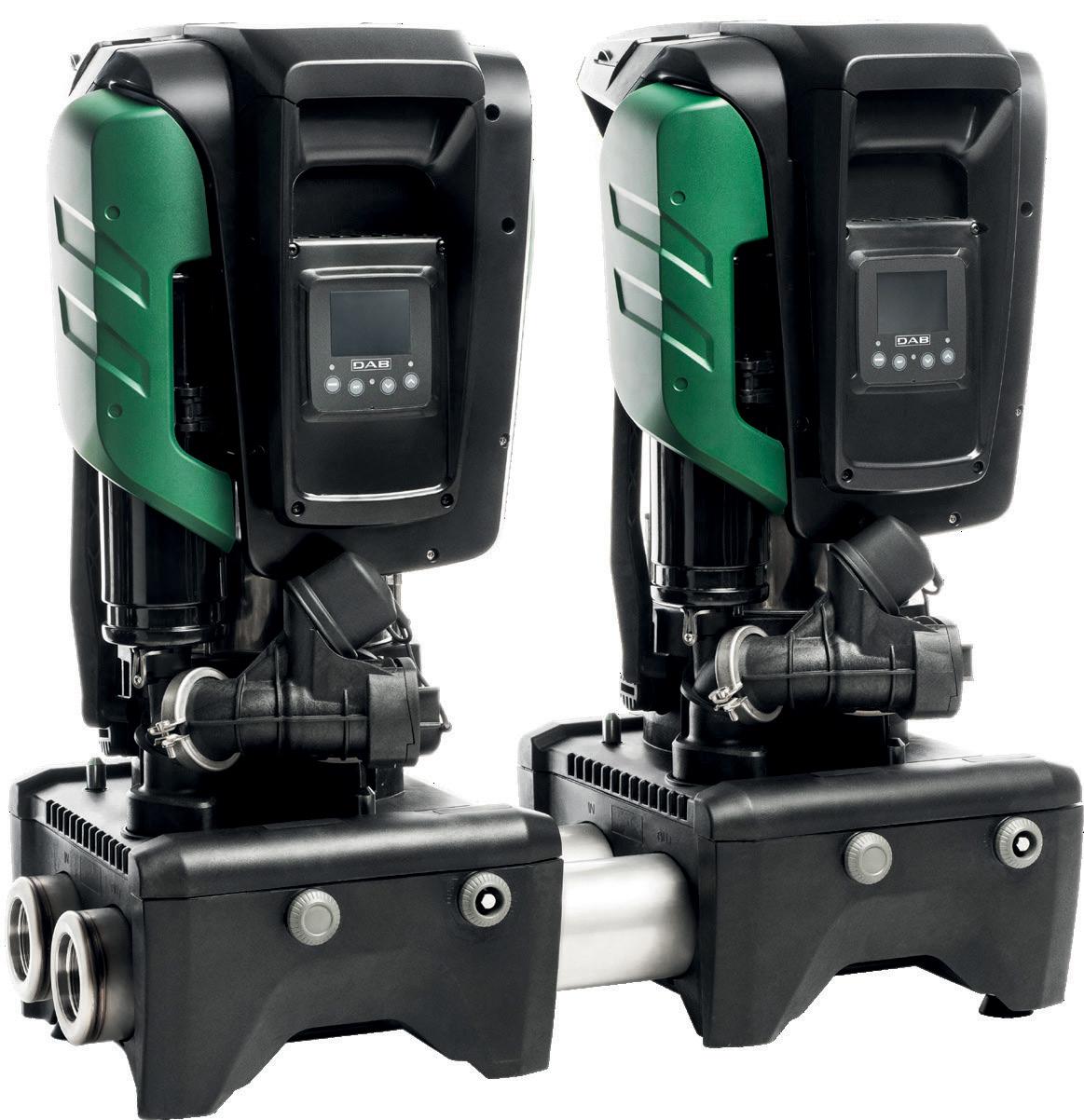
State of the art efficiency
The DAB inverter has been combined with a brand new permanent magnet motor. We also designed completely new hydraulics, making it leaps ahead in terms of energy efficiency.
BEFORE AFTER 20% Energy Saving
LEARN MORE
Modular Integration
The most compact and integrated booster set on the market. Connect 1, 2, 3 or 4 Esybox MAX units.
Easy to maintain
Connect and control from anywhere with DConnect.
Easy to move & install
Quick On-Site Assembly.
Affordable web based remote control for your installation DAB-PUMPS.COM.AU
With DConnect you can use your smartphone to connect directly with the pump using the simple interface. All adjustments are possible remotely, allowing total control with no unwanted surprises.

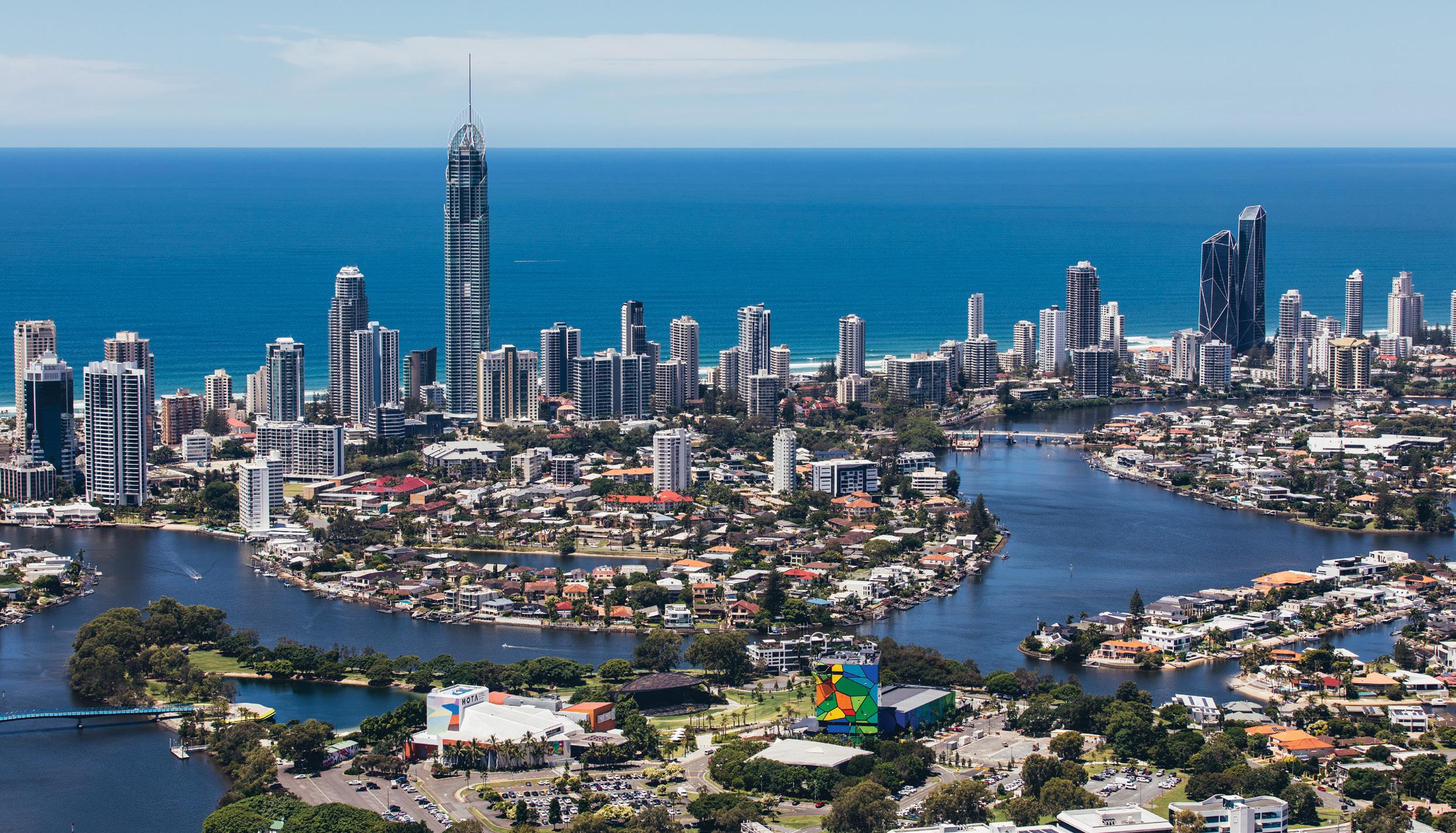
Each edition of Council magazine we choose one local government from across Australia to shine a spotlight on. Whether it's new infrastructure, an innovative technology project, a leading sustainability initiative or a community connection, we want to highlight the best of our local governments and share some valuable knowledge to other place makers across our nation. This edition, we spoke to the City of Gold Coast to learn more about what makes this iconic LGA.
CITY OF GOLD COAST QUEENSLAND
WHAT IS THE POPULATION SIZE AND LAND AREA OF THE CITY OF GOLD COAST?
QUICK FACTS
The City of Gold Coast has a population of 643,461 (according to ABS Estimated Resident Population 2021). From beaches to hinterland, the City’s area covers about 1,334km² of land, which incorporates 81 suburbs with a population density of 482.5 persons per square kilometre. There is 55km of coastline and over 2,200 parks covering more than 16,000ha in the region, plus a road network spanning 4,290km.
HOW MANY EMPLOYEES WORK AT THE CITY OF GOLD COAST?
There are approximately 4,000 employees working for the City of Gold Coast.
WHO IS THE MAYOR?
City of Gold Coast Mayor Tom Tate is a civil engineer by trade, having graduated from the University of NSW in the early 1980s. He started his career in the construction industry and later moved into the tourism and hospitality industry. Boasting a strong business background, Mayor Tate has spent his time in office ensuring everyone knows that the Gold Coast is 'open for business'. This has seen certainty return to the City, which in turn has boosted confidence and created significant investment across the Gold Coast. Mayor Tate is leading a city that is embracing change and dreaming big. His focus for the future is to build on the legacy of the Gold Coast 2018 Commonwealth Games by focusing on the key areas of transport and digital infrastructure; health, education
and knowledge, events, culture and business investment. Mayor Tate is committed to ensuring a future for the Gold Coast that includes a stronger economy, more jobs and protecting the City's enviable lifestyle.
Mayor Tate has been married to his wife, Ruth for over 41 years and together they have four children. The multi-cultural Mayor was born in Asia and is fluent in three languages.
WHO IS THE CEO?
Tim Baker was appointed as the City of Gold Coast CEO in February 2022. Mr Baker has extensive experience in government roles, having previously held a number of senior positions in the Tasmanian public service including Chief of Staff to Premier, Will Hodgman, and Deputy Secretary of the Department of Primary Industries, Parks, Water and Environment Tasmania. In his previous role, he managed approximately 50 per cent of Tasmania’s land and sea country, with responsibility for almost 2,000 employees, a vast asset base and including in excess of 20 commercial businesses and statutory entities.
WHAT IS THE CITY’S ANNUAL BUDGET?
The annual budget for the 2021/22 financial year that was announced in June 2021 was $1.83 billion. This was the City’s tenth consecutive low rates budget with an average general residential rate increase of CPI or below.
CAN YOU GIVE US A BREAKDOWN OF SPENDING FOR THE BUDGET YEAR AHEAD?
Each year, Council spends several months debating key focus areas for the annual budgets. This process – known as the Special Budget Committee – assists in finalising where the City’s $1.83 billion will be allocated. In 2022-23, the key focus areas will be transport, safety and sustainability.
Winter 2022 // ISSUE 3 www.councilmagazine.com.au 68
DIVING DEEPER
WHAT IS THE CITY OF GOLD COAST’S VISION FOR THE COMMUNITY AND ITS FUTURE?
‘Inspired by lifestyle, driven by opportunity’ is the City of Gold Coast’s Vision. This City Vision informs strategic planning for the Gold Coast by continuing to protect the region’s enviable lifestyle and ensure future generations are proud to call the Gold Coast home.
The City's Corporate Plan, Gold Coast 2022, supports the delivery of the City Vision through three themes:
∞ The best PLACE to live, visit and stay
∞ PROSPERITY built on a strong diverse economy
∞ PEOPLE contribute to a strong community spirit
WHAT MAKES THE CITY OF GOLD COAST AREA SPECIAL?
The City of Gold Coast is the second most populous local government area in Australia and provides an enviable lifestyle with kilometres of beaches, hinterland ranges and national parks which can be enjoyed year-round. As the tourism capital of Australia with about one million visitors annually, the City features a vibrant arts and culture scene, natural wonders and world-class tourist attractions, restaurants and accommodation. Gold Coast is a City known for its lifestyle and diversity, with almost one in three residents born overseas.
WHAT ARE SOME OF THE CHALLENGES THE REGION FACES, AND HOW DOES COUNCIL OVERCOME THESE?
Mayor Tate said the biggest challenge for the coast is maintaining the City’s lifestyle, while welcoming in excess of 10,000 new residents annually. The City Plan, supported by the SEQ Regional Plan, ensures the City retains around 50 per cent of its urban footprint as green or open space. This means future residential and commercial development needs to be built on either existing sites, or through sustainable and well-designed low, medium and high rise projects.
“We have to build up – not out – as building up means we save precious green space and it also means we can position residential areas near our main public transport systems,” Mayor Tate said.
HOW IS THE CITY OF GOLD COAST ADDRESSING CLIMATE CHANGE AND REACHING SUSTAINABILITY GOALS?
As one of the most biodiverse regions in Australia, the environment is a key consideration in every decision made at the City of Gold Coast.
Some of our natural features include: more than 12,600ha of Ramsar-listed wetlands and islands, 4524.8ha of World Heritage listed Gondwana rainforests, 52km of open coastline with world famous surf breaks, 480km of rivers and streams along with 774ha of lakes, dams and canals. The Our Natural City Strategy guides the work we do to preserve these precious assets.

COUNCIL IN FOCUS 69
Mayor Tate (middle) at the Miami Aquatic Centre Official opening.
But this is only one aspect of the initiatives the City has undertaken, a small sample of them are below:
∞ In 2020 we were the first Council to collect a levy as part of Rates to help preserve wildlife, with two parcels of crucial wildlife corridors having been purchased by the City as a result of this program
∞ We have also recently endorsed a vehicle strike mitigation program to decrease the number of koalas and other wildlife being hit by cars each year
∞ 47 Council facilities have solar panels
∞ Ten electric vehicle charging stations have been placed in key locations around the Gold Coast and Council’s fleet has a number of electric vehicles
∞ We have expanded our recycled water network, enabling recycled water to be used in private and public green spaces
∞ We are the only Council in Australia with Recycle Street services at our Waste and Recycling Centres
HOW IS THE AREA PREPARING FOR FUTURE EXTREME WEATHER EVENTS AND HOW HAS IT BEEN COPING SINCE THE DEVASTATING FLOODS OF 2022?
The City has a dedicated Disaster Management Unit that is responsible for ensuring that the City of Gold Coast has effective disaster management arrangements to enable the City to mitigate, prevent, prepare for, respond to and recover from disaster events.
Construction is underway on a new state-of-the-art Disaster and Emergency Management Centre that will ensure our staff are best placed to respond to future events. Key features of the new facility include:
∞ Constructed to withstand a Category 5 cyclone
∞ Seven-day standalone resilience including backup power, technology, food and water
∞ Smart integrated technology, audio visual and ICT
∞ State of the art satellite connection
CAN YOU TELL US ABOUT AN INTERESTING URBAN DEVELOPMENT PROJECT?
In June, the City launched Wonder Reef, a world class dive attraction 2.5km offshore from the Spit, at a depth of 30m.
Its most prominent feature is nine buoyant ‘sculptural reef flutes’ individually tethered to the seafloor by reinforced concrete and steel pyramids.
Depths range from 10-30m, making it ideal for beginner and experienced divers.
The steel reef structures have been designed to attract and sustain a rich diversity of fish and other marine life and achieve positive environmental outcomes.
The nine reef structures, weighing more than 738t, will create a 32,000m3 reef habitat.
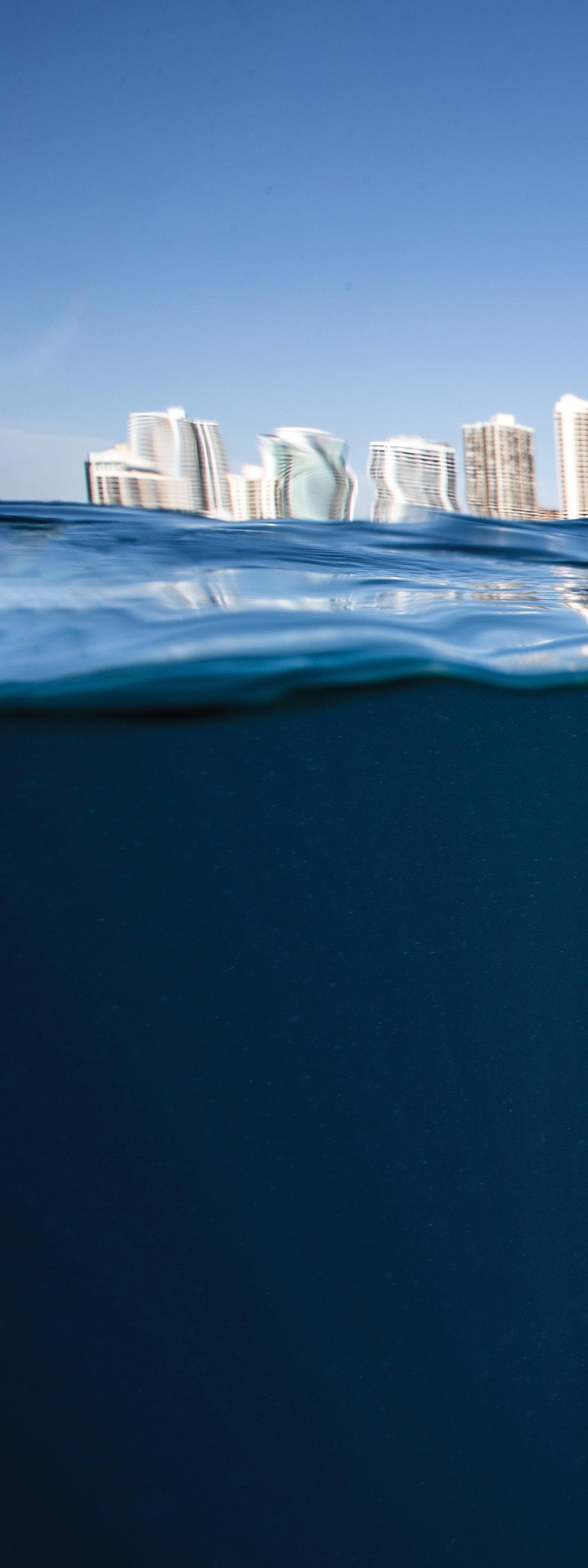
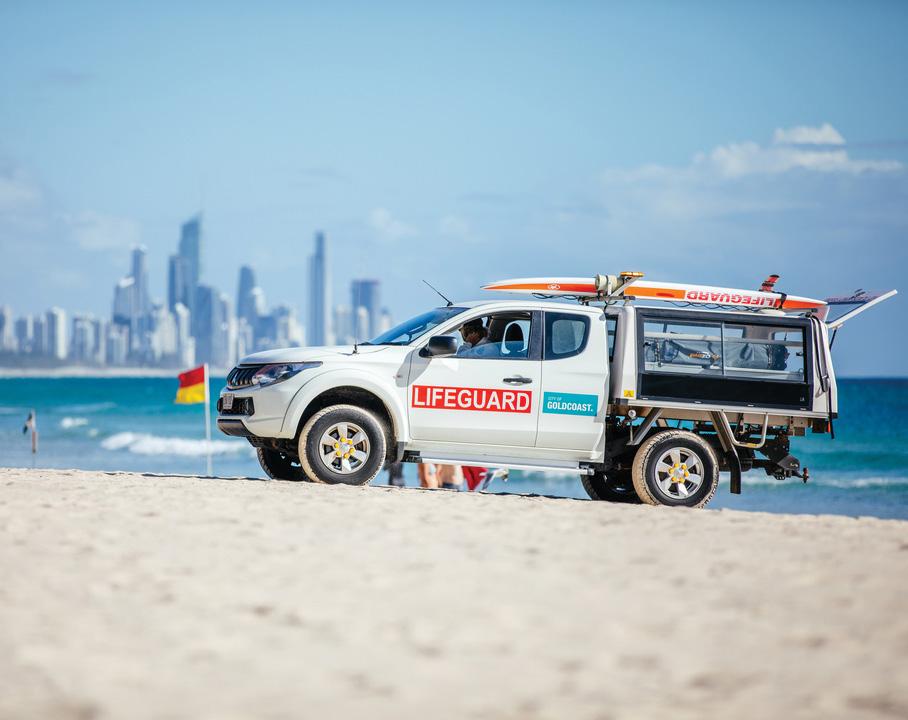
The $5 million dive attraction project, 2.5km offshore from Main Beach, is being delivered jointly by the Queensland Government and the City of Gold Coast.
WHAT
IS
AN EXCITING COMMUNITY PROGRAM OR INITIATIVE COUNCIL HAS COMING UP IN THE FUTURE, OR IS ALREADY UNDERWAY?
The City just opened a world class, $5.6 million skate park. Pizzey Park Street Style Skate Park in Miami is a 3000m² park, equalling the size of seven basketball courts.
Designed following Olympic standards, the skate park will put the City on the international stage in the world of skateboarding and roller sports.
Gold Coast also recently launched the Streets of Remembrance pilot project honouring World War I service personnel.
Signs on 23 streets across the City have been rebadged to indicate the street either honours a World War I veteran or the family of someone who served.
An interactive map shows where the signs are, and a short history of the people honoured.
HOW IS THE CITY OF GOLD COAST EMBRACING DIGITISATION AND GROWING ITS TECHNOLOGICAL CAPABILITIES?
The current environment is complex, diverse, and changing. Expectations from residents, employees and stakeholders are increasing and the rate of change is accelerating. Technology is becoming embedded across everything we do and, in some areas, fundamental to the services we provide.
The City provides over 780 different services to our residents, businesses, and visitors with around 150 of those manageable via self-service today.
70
COUNCIL IN FOCUS Winter 2022 // ISSUE 3 www.councilmagazine.com.au
Burleigh Beach in the Gold Coast.

Customer expectations have significantly evolved in the last few years, predominantly driven by rapid change in technology, and a demand to be able to source information and request services quickly. Customers want good service, and expect services to be offered digitally, and are increasingly looking for a personalised experience that is proactively tailored to them.
With 10 million touch points across a growing range of channels and systems, many not integrated, there are increasing challenges in scaling sustainably and optimising employee experience. In addition, COVID-19 has driven a change in the way we work, with employees now expecting to be able to work from home as part of their normal role.
City of Gold Coast is achieving success by:
∞ Implementing new ways of delivering business outcomes
∞ Putting customer and employee experience at the centre of design and investment
∞ Developing flexible and responsive technology models that allow us to be more nimble
∞ Modernising integration patterns to drive value and reusability of services
∞ Investing in initiatives that support channel-shift and operational scalability
71 COUNCIL IN FOCUS
The City’s new dive attraction.
FEATURES SCHEDULE
72 Winter 2022 // ISSUE 3 www.councilmagazine.com.au ADVERTISERS’ INDEX Summer 2023 Deadline: 21 October 2022 Asset management Civil construction Recreation Transport Community design Spring 2022 Deadline: 22 July 2022 Water management Urban development Community services Sustainability Smart cities Winter 2023 Deadline: 12 May 2023 Planning and construction Cultural engagement Environmental protection Mobility Energy efficiency
Aerometrex IFC Angus Flexible Pipelines Australia 39 AWMA Water Control Solutions 42, OBC Bürkert Fluid Control Systems IBC DAB Pumps Oceania 67 Dicker Data DAS 25 EcoTeq 57 Expertise Events 15 Fimer Spa 43 Future Engineering & Communication Pty Ltd 7 Grochem 9 John Deere 29 Legacy Lighting 41 Mainmark Australia 5, 28 Metasphere Australia 59 oOh!media 27 Sewer Equipment Company Australia 45 Spectur Limited 55 Xylem .......................................................................................................................................................................................................................................................................... 14 Autumn 2023 Deadline: 17 February 2023 Water and wastewater treatment Waste management Arts and culture Roads and transport Health and safety
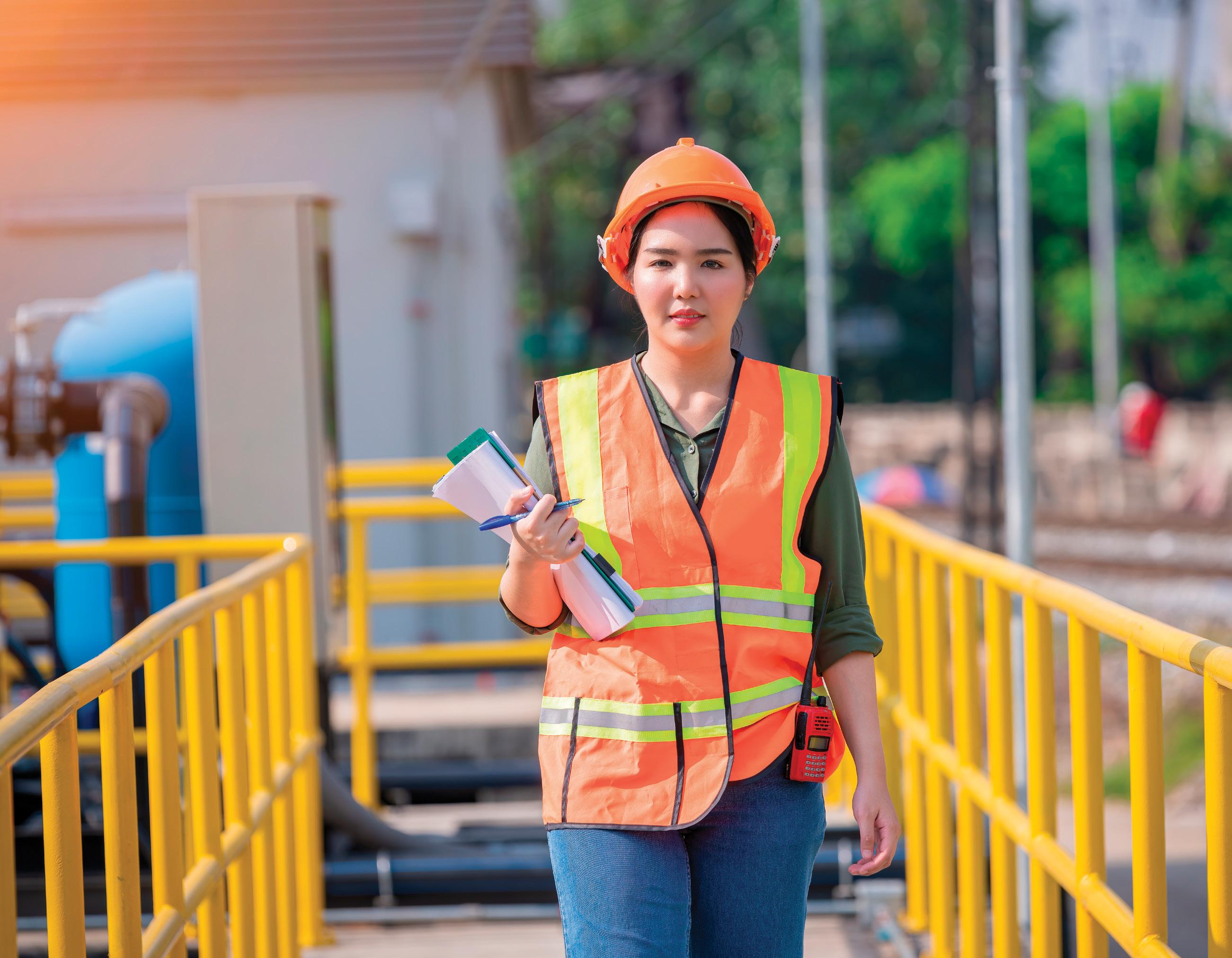
Industrial water prefers to partner with Bürkert
Save on installation costs > up to 40%
Improve ongoing operating costs > up to 20%
Flexibility of production processes > 100%

Make the switch >
* these figures are based on average figures, individual results may vary.

Type 2000 Angle seat 2/2 way process valve maintenance free nearly with unlimited lifetime. Housing in SS or brass from DN8-65.
ARE YOU FLOODFREE?
Flood Barriers and Doors for Residential, Commercial and Community Flood Protection.
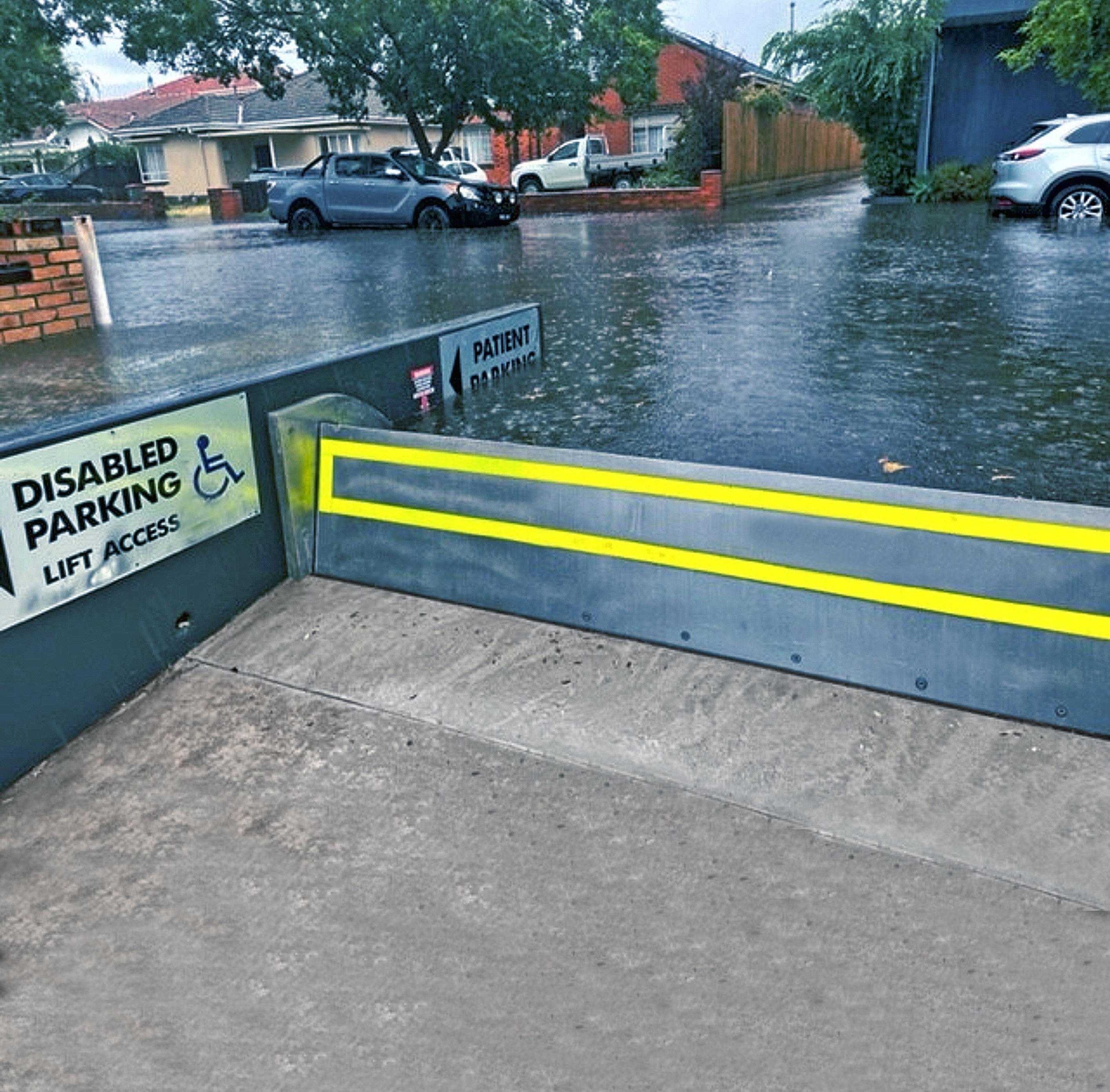
DESIGNED AND MANUFACTURED BY














































 by Lauren DeLorenzo, Journalist, Council magazine
by Lauren DeLorenzo, Journalist, Council magazine

















 by April Shepherd, Editor, Council magazine, With contributions from City of Melbourne and City of Sydney
by April Shepherd, Editor, Council magazine, With contributions from City of Melbourne and City of Sydney


 by Professor Jane Farmer, Swinburne University Social Innovation Research Institute, and Associate Professor Andrew Butt, RMIT Centre for Urban Research
by Professor Jane Farmer, Swinburne University Social Innovation Research Institute, and Associate Professor Andrew Butt, RMIT Centre for Urban Research























 by Annabelle Powell, Journalist, Council magazine
by Annabelle Powell, Journalist, Council magazine





































